EXCLUSIVELY FOR RAIL INDUSTRY LEADERS

Charlotte Whitfield
A marathon not a sprint
Andy Lord
Transforming transport in London
David Horne
Helping people in the railway
Marie Daly
One truly integrated transport system

May 2025


Charlotte Whitfield
A marathon not a sprint
Andy Lord
Transforming transport in London
David Horne
Helping people in the railway
Marie Daly
One truly integrated transport system

May 2025
“Turn up and go” international train services
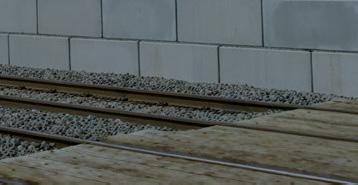
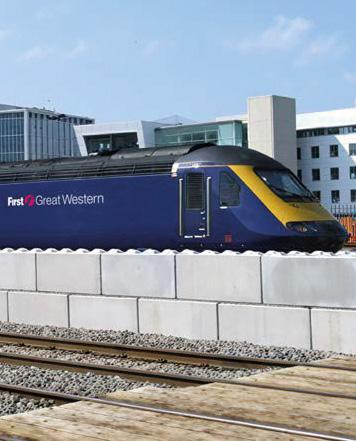
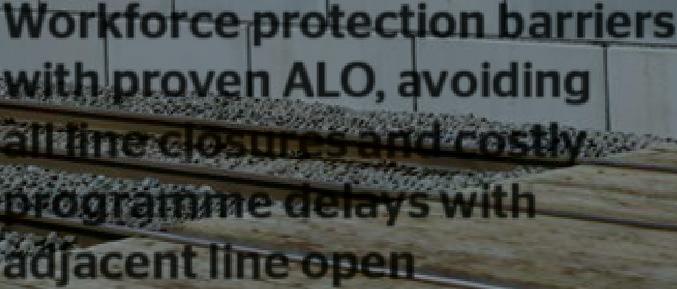
Workforce protection barriers with proven ALO, avoiding all line closures and costly programme delays with adjacent line open
Workforce protection barriers with proven ALO, avoiding all line closures and costly programme delays with adjacent line open

Secure your workforce with trackside refuges built from with

Ensure

Ensure rail transport networks remain operational with embankment retention, using a choice of versatile interlocking blocks
















Hoarding and fencing stabilisation, with ballast or counterweights, using above ground/no dig fencing and hoarding systems
Hoarding and fencing stabilisation, with ballast or counterweights, using above ground/no dig fencing and hoarding systems


Protect people, services and infrastructure with channels, troughs, cable protection covers, indicator posts and utility protection covers




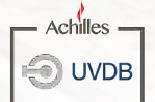











elcome to the latest edition of Rail Director, which this month is themed around train operating companies. Times are changing for train operators, highlighted by the fact that as I write this, it has just been confirmed that Greater Anglia will be coming under public ownership in October.
Day-in-day-out I hear and report on all the fantastic work undertaken by staff working at train operators, who are not only playing vital roles in transporting passengers and freight, but who are also transforming the communities where they are based. There is a passion among these workers to deliver, and that is something I hope can only flourish under rail reform.
Sometimes it is the little things that can shape a passenger’s experience. A recent personal example was a ticket inspector checking tickets who came up with a different way of saying thank you to every passenger in the carriage I was sat in. I didn’t see a person without a smile on their face as they listened in to what he was going to say next.
I am excited about what the future holds, enthused by a conversation with this month’s cover article Richard Thorp, Chief Operating Officer at London St. Pancras International, who discusses from page 6 his vision of a return to the old operational premise of “turn up and go” to mainland Europe. Earlier this month the Transport Secretary signed a landmark agreement to progress a new direct rail link to Switzerland; this would be fantastic.
I wrote earlier about the passion of the staff, and that is something Charlotte Whitfield, Arriva Rail London’s Operations Director, has spoken about from page 10. “I strongly believe that the people who work here feel enormously proud to be part of the London Overground and of the difference that we’ve made for the parts of London that we serve,” she tells Rail Director.

There is also a sense of care for staff highlighted by LNER’s Managing Director David Horne’s appointment as Chair of the Railway Benefit Fund. From page 24 he outlines his aspirations in the role and highlights the charity’s importance, including more than £3.5 million in social value through initiatives.
Away from the train operators, it is also promising to hear about the plans for a new railway connecting Liverpool and Manchester, which could kickstart a £90 billion economic transformation across the North West and help reshape how major infrastructure is delivered in the UK. You can read all about the plans from page 28.
That’s just a taste of what to expect in this month’s magazine. Thank you again to the team and everyone who has featured in this edition. I hope you enjoy reading it. Next month will be centred around rolling stock, with some great interviews already lined up, and space to feature almost full.
All the best,






Danny Longhorn Editor
There is a passion among these workers to deliver, and that is something I hope can only flourish under rail reform
Rail Director magazine and Railbusinessdaily.com are assets owned by the Railway Industry Association. Railbusinessdaily.com delivers more than 70 stories a week to +73,000 rail industry professionals in our daily 7am newsletter. If you have not already subscribed, it’s free and it’s easy to do so at www.railbusinessdaily.com, please also encourage your colleagues to do the same. This is the very best way to keep abreast of what is happening on the UK’s railways. There is a digital copy of Rail Director on our website.



LIFTING JACKS & BOGIE LIFTS












Lifting and inspection equipment you can rely on for all maintenance of rail vehicles.











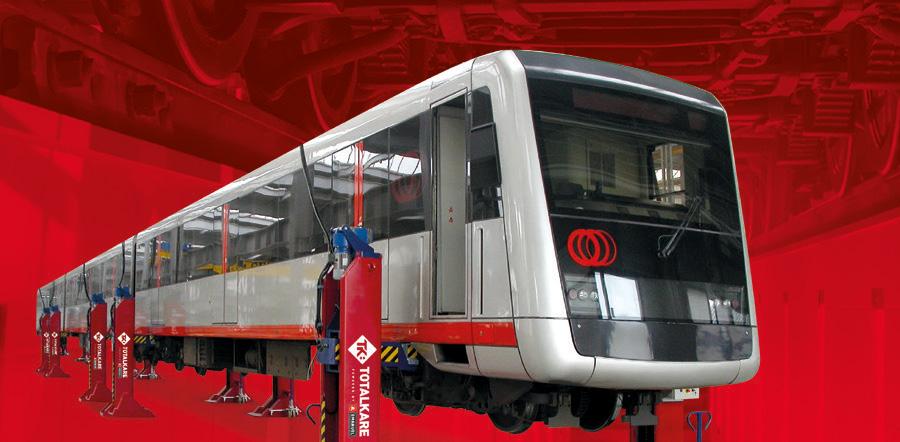

With over 40 years’ experience of high quality, heavy duty vehicle lifting, Totalkare combines world class products with industry leading support to facilitate effective maintenance and repair.





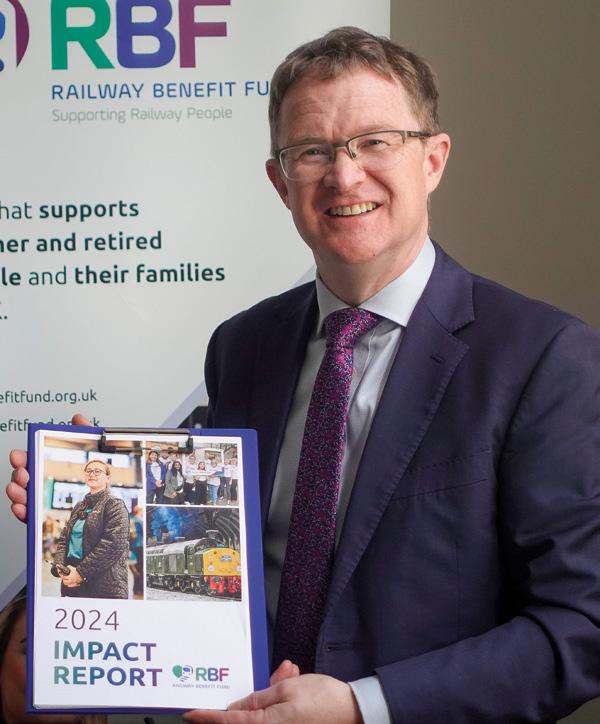

Richard Thorp, Chief Operating Officer at London St. Pancras Highspeed discusses international train services, plans for London St. Pancras International station, and the start of its Control Period 4
Arriva Rail London’s Operations Director Charlotte Whitfield discusses her new role and the journey ahead for the London Overground
As Transport for London celebrates its 25th anniversary, Transport Commissioner Andy Lord reflects on the milestone and explains how the organisation has recovered from the COVID pandemic
The General Secretary of Eurostar Gareth Williams, writes about the journey ahead for the operator and the importance of strategic direction and Government sponsorship to unlock private investment
David Horne has recently become the Chair of the Railway Benefit Fund. He outlines his aspirations in the role and highlights the charity’s importance, including more than £3.5 million in social value
A new railway connecting Liverpool and Manchester has been described as the “missing link” in a plan to boost jobs, deliver new homes and grow international trade. Rail Director explores the plan and speaks to those backing it
Andy Mellors, Managing Director of Avanti West Coast, talks of the improvements the operator has made
Rail Minister Lord Hendy has said lowering the train driver age to 18 will help futureproof the railways, support young people in fulfilling careers and boost growth

KeolisAmey Docklands has begun a new eight-year contract to operate the DLR. Alistair Gordon, Chief Executive of Keolis UK and Ireland, writes about the focus on running a safer, greener and more reliable operation
The Railway Industry Association (RIA) has published a new discussion paper which sets out a place-based approach for delivering better stations across the nations and regions of the UK. The organisation’s Policy Director Robert Cook explains more
62 Building safety together
Elaine Clark OBE looks ahead to next month’s Rail Safety Week and explains the importance of the industry coming together when it comes to keeping colleagues, passengers and communities safe

Tel: 01132 082620
Sales: 020 7062 6599
68
Rail Live returns to Porterbrook’s Long Marston Rail Innovation Centre next month. Katie Gordon-Hill, Exhibition Director, explains more about pulling the event together
Harry Bateman is the Young Rail Professional of the Year for 2025. The Alstom Business Development Graduate was presented with his prestigious award at a glittering ceremony in Cardiff at the end of March. Nigel Wordsworth reports
Railway Chaplain Mike Roberts writes about being a genuine ally and how it doesn’t mean giving up maleness, forsaking Britishness or denying his sexual orientation, but in using those qualities to support, advocate and promote the voice and the opportunity of those around him
Marie Daly has been appointed Transport for Wales’ Chief Operating Officer, bringing more than 17 years of experience in the rail industry with a strong track record in operational leadership, customer experience and cultural transformation. She discusses the journey ahead and her work as Chair for Women in Rail
Editor Danny Longhorn danny@railbusinessdaily.com
Designer and Production Manager
Debbie Nolan Writers
Crampton
Broomfield
Wiles
chrisw@railbusinessdaily.com
Amy Hudson amy@railbusinessdaily.com
Published by Rail Business Daily c/o 16 Smith Square, Kings Buildings London, SW1P 3HQ
Printed by The Manson Group © 2025
All rights reserved.
Reproduction of the contents of this magazine in any manner whatsoever is prohibited without prior consent from the publisher. For subscription enquiries and to make sure you get your copy of Rail Director please ring 01132 082620 or email info@railbusinessdaily.com. The views expressed in the articles reflect the author’s opinions and do not necessarily reflect the views of the publisher and editor. The published material, adverts, editorials and all other content is published in good faith.

Richard Thorp, Chief Operating Officer (COO) at London St. Pancras Highspeed discusses international train services, plans for London St. Pancras International station, and the start of its Control Period 4 (CP4)
It was 30 years ago this year that Richard Thorp first started his career in the rail industry, working at Eurotunnel as a trainee signalling technician. London St. Pancras Highspeed’s COO has fond memories on the tools, even the cold nights working shifts in the tunnels fixing and maintaining things.
“I learned a huge amount and if you’d have told me then I’ll be doing what I’m doing now I just wouldn’t have believed you,” he said. “But that is the remarkable thing about the rail industry, if you show an interest, work hard and have a bit of luck, then anything is possible.
“It hasn’t come without its challenges, such as looking after the Waterloo signalling team in the last days of Railtrack, but I continue to learn huge amounts, working with fantastic people who are all in it together to make it better.”
Richard’s career in the industry has predominantly centred on developing asset management capabilities for UK mainline and high-speed railways. More recently he was HS1’s (now known as London St. Pancras Highspeed) Engineering Director, before last September being appointed the company’s COO.
The organisation owns and operates the UK’s only high-speed railway and the stations along the route – St. Pancras International, Stratford International, Ebbsfleet International and Ashford International –connecting London to some of Europe’s most exciting cities.
“My focus is in making a lasting difference,
I’d like to see a return to the old operational premise of turn up and go, people knowing they can travel on train hassle-free to mainland Europe

ensuring that things are properly fixed as opposed to firefighting,” he explained. “That is happening here and it is an exciting place to be, particularly when you look at what is going on in Europe with the high-speed railways. It is sustainable travel and it is exactly where we should be going.
“The lessons we’ve learned are transferable and I know we’re a small self-contained railway with newer assets compared to some areas of the wider railway, but we are facing the same challenges of ensuring it stays new and high-performing, something I am looking forward to playing my part in achieving in the years ahead.”
It’s been full steam ahead for Richard since becoming COO, a role he took on as the company was going through the rebrand to London St. Pancras Highspeed, a move to reflect a shift in focus on playing a more active, consumer-facing role in helping to drive the growth of sustainable travel by high-speed rail.
“It is about being more outward facing, consumer focused and not a faceless infrastructure company,” he added. “We make money out of running train services and the way we can help that is to get more passengers on the trains and highlight the opportunities of travelling on our network. It’s already hit a chord with people and has helped us as a business to focus on what we can do, how we can help our customers, as well as helping their customers in promoting international high-speed rail and getting the most out of our asset.

“We need to be creating that energy and excitement about the fact you can travel to the likes of Amsterdam, Brussels and Paris, while at the same time not forgetting domestic Southeastern services.
I’d like to see a return to the old operational premise of turn up and go, people knowing they can travel on train hassle free to mainland Europe. That and building on the appeal of St. Pancras station as a destination in itself with a great range of bars and restaurants.”
On the latter, there are plans to expand the capacity at St. Pancras International station with
the potential for international rail services to more than double from the current 1,800 passengers per hour to almost 5,000 per hour. This, Richard explained, can be achieved through new infrastructure, combined with more efficient border and security processes.
“There are several phases to it,” he explained. “Firstly there’s operational optimisation to get more out of what we’re doing today, something Eurostar is on with by doubling the border capacity and getting people on trains earlier to create more capacity in the downstairs area.

“Phase two is a reconfiguration and security and borders controls project around expanding the departures into the arrivals area. The aspiration is to get people through security and border controls within three to eight minutes, returning to that turn up and go philosophy in which people can arrive no longer than an hour before departure. I’d like to see a much bigger, higher capacity security operation in the next few years so we can cope with bigger volumes of passengers.
“I want it to be a relaxing security and border operation for passengers and for there to be a 50 per cent bigger gate room as well so people have got plenty of space to sit down. This can be achieved by taking space from the lesser used arrivals area, working with border to make sure it is still compliant and does what it needs to do. The design phase should be finished towards the end of this year when it will then go through to formal design and construction, with a potential completion date towards the end of 2028.”
There could also be competition for Eurostar in running trains through the Channel Tunnel, particularly in light of the Office of Rail and Road (ORR) finding in an independent report that the operator’s London Temple Mills International depot would be able, if required, to accommodate additional trains. It found that with changes to operational and maintenance arrangements at the depot, as well as possible alterations to infrastructure, it could open up extra capacity and allow more trains to be stabled and maintained there.
The report commissioned by the ORR follows growing interest in providing extra services between St. Pancras International and continental Europe, with Virgin Group, Spanish start-up company Evolyn, FS Group and Gemini Trains among those looking to run trains through the tunnel.
“It is exciting and we’d welcome the competition, particularly in light of a recent study we carried out which found there is significant demand from people to travel sustainably internationally and to get away from short-haul flights,” said Richard. “It’s helping Eurostar realise its growth ambitions, with a goal to carry 30 million people in 2039, which is quite a ramp up.
“There is a role for us to play in helping with that objective, which is why we’re looking at the station capacity enhancement work to help get more people through the border, as well as not forgetting supporting Southeastern in building up its ridership and helping that operator grow as well.”
The hard work is already well under way. Last month London St. Pancras Highspeed commenced its fourth control period (CP4), under its Concessions Agreement and station leases, running until 31 March 2030. There is a confirmed renewals budget of almost £300 million with more than £60 million still to go out to tender.
Alongside that, the organisation has revealed its challenges, which are:
Automated inspection – Solutions that can automate inspection activities allowing the organisation to enhance performance, increase safety and reduce costs.

Predictive maintenance – Remote monitoring and advanced analytics to predict asset degradation, validate asset integrity and reduce reactive maintenance.
Optimised planning – Data, analytics and tools that help the organisation to resiliently plan activities on the railway and maximise the value of its resources.
Digital, data and technology – Scaled data collection and exploitation solutions that enable London St. Pancras Highspeed to make a stepchange increase in what it knows about its assets.
Advanced asset management – Solutions that can develop its asset management capability maturity to enable it to reduce lifecycle costs and enhance asset performance.
“We finished CP3 with the best performance we’ve had on the railway for more than 10 years, that has to continue during CP4,” said Richard, who explained that there is about five seconds delay per train – a remarkably good performance. “Our contractor Network Rail High Speed knocked it out of the park last year thanks to a lot of hard work, focusing on the basics and a relentless attention to detail.
“You’ll see us ramping up our renewals capability but making sure we deliver that in a cost-effective manner. We are looking to improve our digital asset management so that we’re keeping on top of asset condition, to know what’s happening when and we’re doing our renewals just in time.
“We’re going to be really challenging the efficiency of both our operation’s maintenance and renewals functions so that we hit our forecast cost targets for 2030.
“This isn’t about getting rid of people or capability, it’s about building the right workforce and the right capability to deliver the right amount of work because the work isn’t going away. It’s about effective planning, possessions and innovation, managing our timetable, people and work sites.
“It’s all up for grabs essentially with an acceptance that we will only achieve our goals with the support and ideas of the supply chain.”
Taking that into account, last month London
St. Pancras Highspeed held a CP4 launch event in partnership with the Railway Industry Association.
More than 160 organisations signed up to find out more about the opportunities and the £4 million research and development budget to support the delivery of efficiencies.
“Suppliers have a vital role in driving us to be as efficient and effective as we can and we realise that we need an incentivised supply chain to achieve that,” Richard said, adding that although the organisation is regulated in five-year control period cycles, it has a fully-funded look ahead for the next 40 years. “Our concession runs out in 2040, but our contractual obligation is to look after it as if it was ours for the next 40 years, so we’re asking people to look beyond CP4 at what innovation and plans we can bring in that will help us be effective in the next 15 years.
“From an innovation point of view the technology bit is often the easy bit with loads of people with very clever technology that would fit our challenges perfectly. The struggle comes with how you do the people and process transformation to adopt new technologies.
“The launch event last month got all the tech people with the professional services consultants in the same room, putting the challenges to them and giving them the opportunity to team up and come to us with a complete package. It is about thinking slightly differently and ensuring everyone gets a win out of it.”
Concluding the interview, Richard gave his aspirations of where he’d like London St. Pancras Highspeed to be at the end of CP4.
“There will be multiple international operators operating out of St. Pancras International, so we’ve got real competition on the line,” he said for starters.
“I’d also like to see Southeastern back to pre-COVID levels of train services, probably with a new rolling stock order in place for new high-speed trains to run on our railway for the domestic services to replace the 395s.
“I’d also like to be hitting our CP5 unit rates, to see us have a really mature data strategy, and I’d like to see St. Pancras as still the best station in Europe if not the world, with everybody enjoying our assets running on time, and smoothly, and just being absolutely stunned by our stations. It is something I am confident can be achieved by us all working together.”




Arriva Rail London’s Operations Director Charlotte Whitfield discusses her new role and the journey ahead for the London Overground
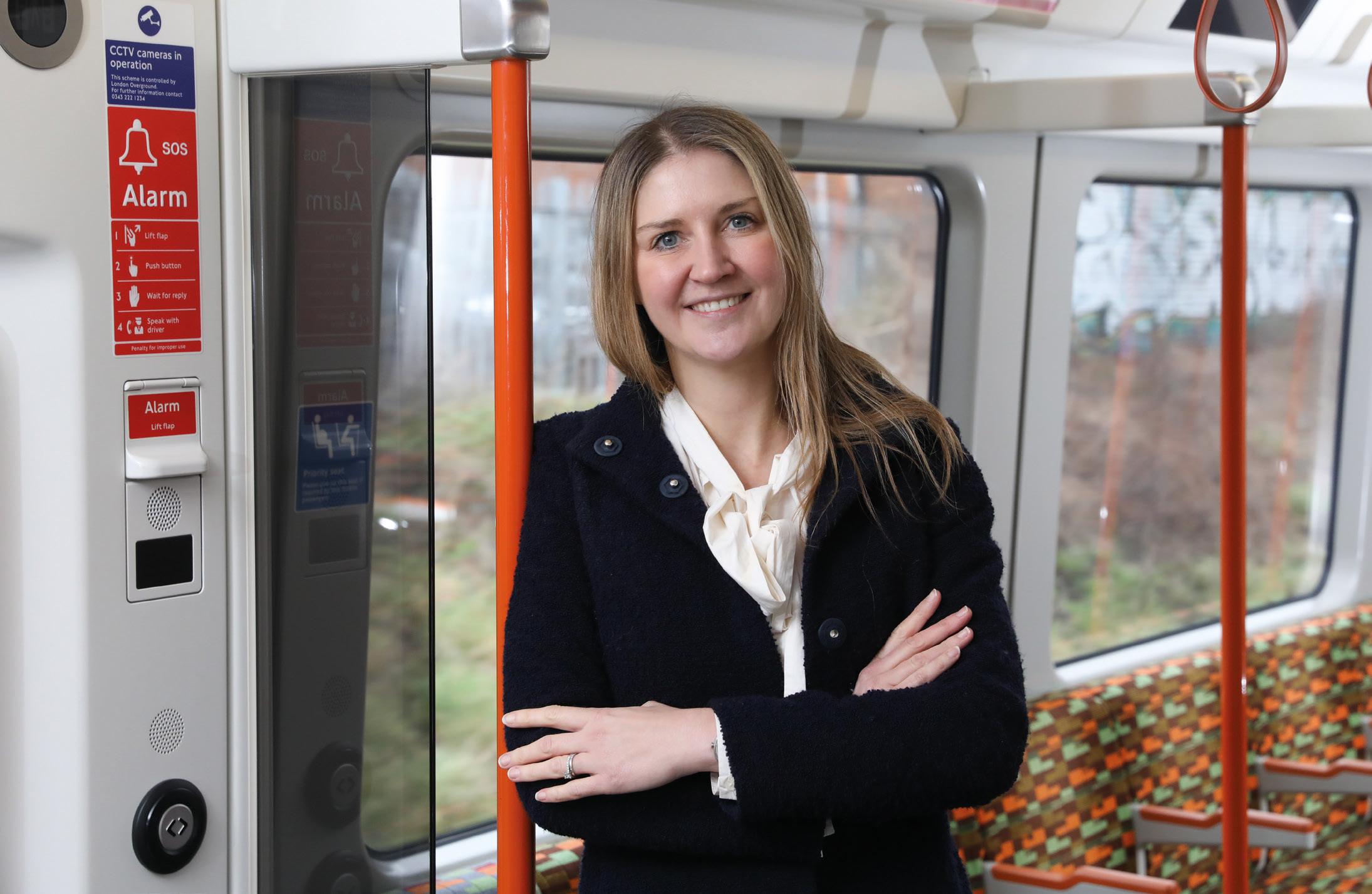
Charlotte Whitfield describes it as an amazing gift to have stepped into the role of Operations Director at Arriva Rail London (ARL), running the London Overground network on behalf of Transport for London (TfL).
Over the past eight years, after joining ARL as a General Manager and most recently being Customer Experience Director, she has steered several successful customer experience initiatives, from the introduction of the Night Overground to the naming of the London Overground lines.
“I really loved being Customer Experience Director, it was an incredible job, really challenging, with lots of great initiatives happening in that space,” Charlotte said. “This feels like the natural next step, and at an important time with so many great things to deliver.
“What is hugely important is that we not only deliver good performance for customer outcomes but also for financial outcomes as well. I’ll have both
What is hugely important is that we not only deliver good performance for customer outcomes but also for financial outcomes as well
of those as my accountability over the next 12 months, which is very exciting.”
There has been no easing into the role, with Charlotte’s first day on the job at ARL’s leadership conference and just weeks later the task of transporting thousands of spectators and runners to the London Marathon, the latter involving extra staff at stations, queuing systems and additional strategic commanding.
Charlotte, who spoke with Rail Director in the week leading up to the running race, said: “The London Marathon is a huge event for the London Overground, especially for the Windrush line, with a number of our stations located on the marathon route.
“It’s hugely important that we run services well on that day and the decisions that we make in control will need to be different to what they might be on another day because we need to keep a huge number of customers moving efficiently and safely.
Building strong foundations
With a keen eye on the future, Kieran recognised there was a gap in SEP Geotech’s offering:
“What SEP Geotech does ties together perfectly with piling. The purpose of our investigation forms the basis of the pile design, and our sister company, SEP Rail Design, designs the piles; now we will install them.”
“I always come in on the day because it is really important to show support for the frontline, plus it is fun seeing all the runners and those supporting them. There are challenges – it can be difficult to run the stations on the Windrush core that are built around the Brunel tunnel which, built over 100 years ago, was not made with the London Marathon in mind, but we all work together to run services well and safely.”
Piling, in engineering terms, involves the installation of foundations driven or bored into the ground to transfer loads to deeper, more stable soil.
ARL has been responsible for running the London Overground network under the concession agreement with TfL since 2016. That is scheduled to end in May next year with the decision on the next operator expected towards the end of this year.
These structural elements are essential when the natural bearing capacity of the soil is insufficient for supporting heavy construction loads.
While the demand is always there for new staff, Kieran knows the value of hiring the right people:
which we will be preparing for even though the implementation date will be beyond the end of our concession. All of these things we’re planning ahead for, even though they won’t happen within the lifetime of this concession.”
“This industry isn’t for the faint-hearted. Late nights, early mornings. Long periods of time away from your family. My office is my mobile phone and my van; we’re always on the road, on-site, and getting our hands dirty.
“Our team shares a deep commitment to the enduring success of our business and is constantly seeking ways to enhance their skills and improve our services.
The priorities include driving performance on the Mildmay line, covering from Richmond and Clapham Junction to Stratford, one of the London Overground’s most complex routes. This work has already started, with the move of the ARL Mildmay control team sitting in the same place as the Network Rail signaling team, an initiative which started this month.
This is a critical moment for the piling and foundations industry
“Over the course of this concession we’ve delivered several huge initiatives, from the launch of the Night Overground, increasing capacity and improving performance on various lines of routes, delivering great customer outcomes and delivering through COVID,” explained Charlotte.
Kieran’s extensive engineering experience, developed since his teenage years, has been centred around piling. He explained:
“This is a critical moment for the piling and foundations industry. Exciting innovations within pile design and installations are allowing for improved project turnaround times and more technically demanding programmes.
“We take pride in being one of the few geotechnical companies that offer specialised drilling NVQs to our team, ensuring that our workforce remains at the forefront of industry expertise and quality.”
“Bringing closer together some of our ARL and NR operational team and recovering services quicker, as well as delivering better outcomes for customers in terms of information,” Charlotte explained.

Investment in staff is one thing. But the evolving rail industry landscape also demands industryleading equipment. To address this, Kieran provides a candid glimpse into a forthcoming investment at SEP Geotech:
“By leveraging our team’s experience, alongside utilising the wider SEP Rail Group’s capabilities, SEP Geotech is in a perfect position to deliver projects from feasibility to design through to completion.”
“Looking ahead to the next 12 months, key areas within my department are around control transformation with a review of our control department, bringing in lots of different new roles, changing roles to bring focus on customer information and much more embedding with Network Rail on the Anglia route.
“Although our concession might be ending, there is no slowdown on what we will be looking to achieve and of course things don’t completely stop. We are likely to have some service enhancements to the Overground service in 2026
Investing in the professional development of the current team is also not just a priority; it’s a key part of SEP Geotech’s vision for the future.
“Train performance is also going to be a key focus for me. We have a fantastic team at ARL and we always strive to deliver the best we can for customers. Unfortunately, there are some longstanding challenges on our network, particularly on the Mildmay line. This route has seen huge increases in terms of the volume of customers that wish to travel on it, coupled with it being an enormously important freight route.
“We’re investing in a new, state-of-the-art solution designed for safe work on embankments, slopes, and even over water. This innovation eliminates the need for traditional rope access, streamlining our processes even further.”
“We’re working really closely with Network Rail to make sure that we can deliver for customers there. It’s about stabilising the performance there and starting to see that improve.”
Charlotte will be looking to draw on her
As SEP Geotech continues to evolve and expand its offerings, one thing is clear: Kieran Moran’s experience, dedication, and vision will remain at the forefront, driving the company to even greater heights in the geotechnical engineering industry.







Bringing closer together some of our ARL and NR operational team and recovering services quicker, as well as delivering better outcomes for customers in terms of information
experience of having worked in the transport industry for the duration of her career, having started as a graduate at FirstGroup, initially based in bus depots.
“It was never an aspiration to work in the transport industry,” she admitted. “I did a degree in chemistry and although I started working in this field, I didn’t really have a passion for the work I was doing and so applied for some grad schemes. To be honest, I picked the ones that didn’t have incredibly complicated application forms!
“Since I joined the FirstGroup graduate scheme I have just fallen in love with the industry and people leadership. It can be challenging at times, but I absolutely love being able to build teams and then watching them deliver great outcomes for customers. I’ve not looked back since then.”
Among the challenges have included driving the 82 and 83 bus routes from Oldham and Rochdale into Manchester.
“Working on the frontline has been helpful and will be in my current position, particularly around the daily challenges being faced by colleagues, whether station employees or train drivers. It’s given me that level of respect for what they do, because actually it can be really difficult to deal with customers, managing operational safety, and working shifts. It is something I will always be mindful of.”
Charlotte also has an affinity with the London Overground, admitting that she has relied on the network during her 15 years living in the capital.
“I’ve always lived on the Overground and even before joining ARL I was such an advocate for it,” she said. “It is an incredible service and brand, and I strongly believe that the people who work here feel enormously proud to be part of the London Overground and of the difference that we’ve made for the parts of London that we serve.
“I feel privileged that I get to be part of the
team and when I reflect on things like the Night Overground, which means people can go out and have fun and travel for work purposes, that is incredible. I also look at the naming of the lines last year, which we implemented to make our network easier to navigate and improve customer information, as well as bringing to life important stories relating to the communities we serve.
“It warms my heart when I see people talking about the likes of the Mildmay line (charitable NHS hospital), which when it was announced as a line name saw thousands of pounds of donations. People have embraced it, which has been fantastic to be part of.”
As well as a grounding in customer service and operations, Charlotte’s early days in the transport industry also brought home the challenges of being a woman in a male-dominated workplace – and the value of role models, something she is keen to draw on in acting as a role model for others.
“I have had a broadly positive experience and I’ve been really fortunate that I’ve met some really inspirational women in the industry and some amazing allies in terms of men,” she said.
“Diversity of thought is so important and makes such a difference to an organisation. We have a diverse workforce at ARL and that is reflective of the communities that we serve, something I feel really proud about. The outcomes for customers are better when we’ve got diverse voices around the table.”
Concluding on whether or not she is optimistic about the journey ahead, particularly the final 12 months of the ARL concession, Charlotte says a resounding “yes”.
“We’ve got loads of really interesting and exciting things happening and we certainly won’t be taking our foot off the gas ahead of the end of the concession,” she added. “There is an awful lot for us to deliver and we’re going to work really hard delivering some great outcomes over the course of the 12 months.”

rriva Group has submitted an open access application to the Office of Rail and Road (ORR) to introduce a new direct rail service between Newcastle and Brighton, via London Gatwick. It claims that this would provide “vital connectivity for underserved communities along the route.”
The application, formerly notified to Network Rail last month, makes use of existing under-utilised capacity on the network and includes proposals to introduce five trains per day in each direction, along what would be the first direct route between Newcastle and Brighton.
The service would be operated by Grand Central, Arriva’s established open access rail operator, and could be introduced from December 2026. It would deliver a direct connection from the Northeast and Midlands to London Gatwick and the South Coast, removing the need to interchange through London and providing passengers with a more efficient, affordable and sustainable travel option.
Paul Hutchings, Managing Director of Arriva UK Trains’ Rail Services, said: “We’re committed to connecting communities and enabling more people to travel in ways that are convenient and sustainable, so we’re very pleased to be submitting this application for the first direct service between Newcastle and Brighton, opening up new travel opportunities and

making better use of available network capacity – all while building on Grand Central’s proud history of connecting traditionally underserved communities.
“This is an exciting time for Grand Central’s growth story and follows the extension of our existing access rights to 2038 as well as the recent announcement of an investment of around £300 million in a new battery hybrid train fleet for our existing routes, further underlining our commitment and ambition
for rail in the UK.”
If approved, the new route will provide direct access to London Gatwick for many communities in cities and towns in the North East and the Midlands, such as Northallerton, Warwick and Burton-on-Trent. Each train will offer capacity for 300 passengers, including luggage space for airport travellers, as well as on-board catering, Wi-Fi and charging points.
Island Line services from Ryde Pier to Shanklin have returned, following a complex programme to repair and refurbish the historic structure.
The line between Ryde Esplanade and Ryde Pier Head had been closed since September 2024 while teams of Network Rail and South Western Railway (SWR) engineers carried out vital repairs and maintenance to ensure the pier can carry trains safely and reliably for generations to come.
Over the past eight months, engineers have worked tirelessly and braved the elements to install 590m of new rail and replace 450 worn-out wooden sleepers with new composite sleepers, which are more resilient to extreme weather. The teams also installed 2,500m of new rail bearers and refurbished the underside of the pier sub structure.
George Murrell, Network Rail’s Wessex Route Renewals Director, said: “We’re aware this has

been a long project and I’m grateful to the support we’ve received and patience and understanding from businesses, residents and the wider Island community.
“The Isle of Wight deserves a safe, reliable and high performing railway and the completion of this significant and complex programme of vital repairs and maintenance will greatly support us in meeting this aspiration.
“I’d also like to pay tribute to the many engineers and colleagues who have worked so hard and in all manner of weather conditions to complete this important work ahead of schedule.”
Neil Drury, South Western Railway’s Infrastructure and Engineering Director, said: “We’re very pleased to be running trains along the full length of the Island Line, from Ryde Pier Head to Shanklin, after a long but vitally important closure.
“In the year we celebrate 200 years of the modern railway, it’s great to see that the historic Ryde Pier structure has been repaired and refurbished to support the railway long into the future. We are very grateful to our customers and stakeholders for their patience over the last eight months and look forward to welcoming them back on our services.”

here is a contractual chain between the parties on any railway contract site. Typically, Network Rail will issue the main contract written on one of its Network Rail wordings. The Principal Contractor Licensing (PCL) will generally allocate some of the work on a subcontract wording to the Tier 2 contractors.
The Tier 2 may use a labour agent who contracts either directly with the individual operative or via an umbrella/ payroll company.
Courts considering a site accident will look at who provided supervision, direction and control, and who wrote the method statement, safe work pack and risk assessment. They will also look at causation. These are all factors in determining where blame for the accident lies.
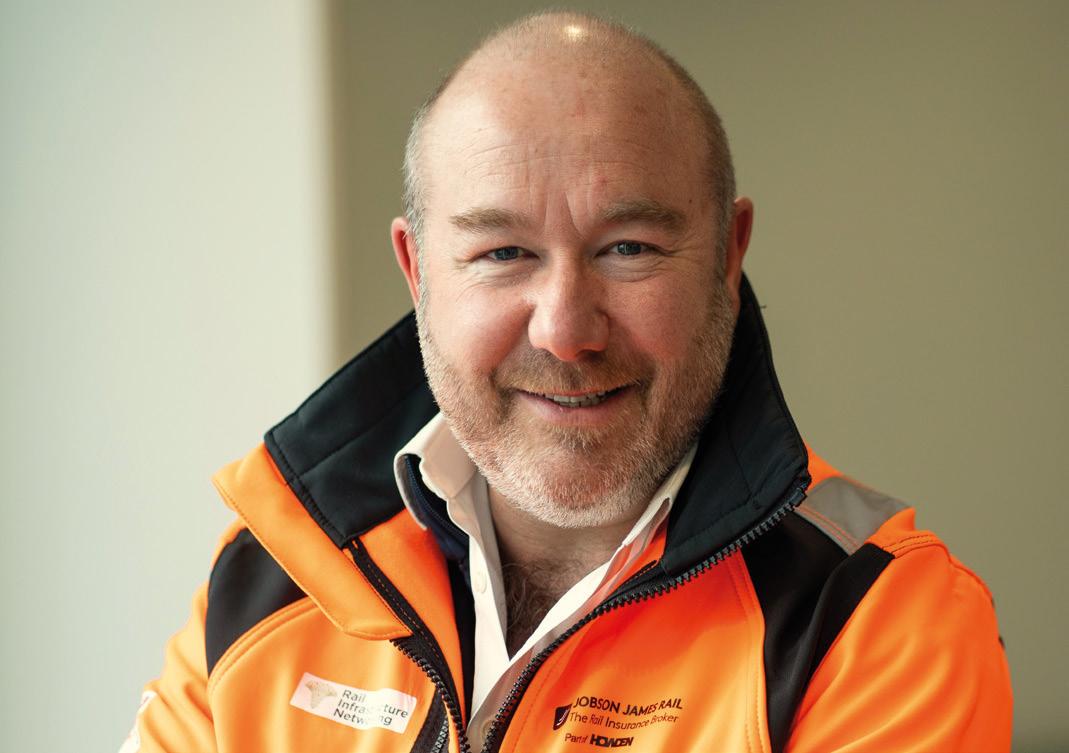
The courts very rarely accept that liability can be passed down to the COSS operative who may have failed to do their job and partly or wholly caused the accident, so their own personal IR35 mini PL insurance policy rarely has to pay.
The insurance held by PSC Ltd cooperatives actually provides no protection to the labour agents or Tier 1 and 2 contractors that employ them.
However, the liabilities accepted under the contracts interfere with where the insurance claim will likely be directed to. Many contracts push liability to the labour agents even though they were not supervising the work.
If the labour agents buy cheap EL PL insurance from recruitment insurance schemes, those insurers are

usually not intending to accept any railway contractual liabilities. The labour agencies can find themselves badly exposed if they have accepted contractual indemnities for site injuries and site damage but have no insurance to back them.
A good insurance broker will understand these complex indemnities and will be giving advice on each contract wording to their labour agent clients. They will also ensure that there is full disclosure to insurers of these material facts, so that the railway company is not in breach of its statutory disclosure obligations as defined in the Insurance Act 2015.
Contact Keven Parker keven.parker@jjrail.co.uk
07816 283949







As Transport for London (TfL) celebrates its 25th anniversary, Transport Commissioner Andy Lord reflects on the milestone and explains how the organisation has recovered from the COVID pandemic

For the second consecutive year TfL has achieved an operating surplus, making enough money from fares, its property company Places for London, and from its commercial and advertising revenue, to cover its £10 billion cost base.
The achievement, something only achieved by one other major transport authority in Hong Kong, is made even more remarkable reflecting on where the organisation was during the COVID pandemic, when fares from passengers went from 75 per cent of its income to just five per cent.
The organisation, which doesn’t receive any operating income or revenue subsidy from central Government but does receive income from retained business rates from the Greater London Authority and council tax precept, did need emergency funding from Government to keep the key workers, including 100,000 NHS workers, using the Tube and bus network during the height of the lockdown.
“It’s a remarkable achievement,” said Transport

Commissioner Andy Lord. “The pandemic has forced us to think differently when it comes to funding and priorities, driven by our financial sustainability plan which looked at how we could come off the Government revenue subsidy and how to cover the costs of our operations ourselves.
“The success is down to a huge amount of work growing ridership, passenger income, and growing our revenue, including from other sources such as Places for London and our commercial and advertising revenue.”
Although covering the running costs, there is still the issue of capital needs, particularly for major asset renewals such as rolling stock, major signalling programmes, or for new lines. The Government has agreed £485 million of capital funding for this financial year – about 20 per cent of the overall needs – with attention now turning to a long-term capital funding settlement as part of the comprehensive spending review.
Andy added: “Our income is about £10 billion, with
our passenger base continuing to grow. It is at around 93 per cent of pre-pandemic levels. We expected it to grow at six per cent, but it has come in just under two per cent – about a £250 million impact, but we’ve managed to offset that. We’ve saved on a recurring basis more than £1.6 billion out of our cost base over the past six years.”
Andy joined TfL in November 2019 as Managing Director of London Underground and became Chief Operating Officer for all of its operations in 2022. He took on the role of Commissioner on an interim basis in October 2022, before getting the job permanently the following June.
“I’m honoured to lead the largest integrated public transport system in the world,” he said. “We have the most diverse offerings in that proposition, everything from the Tube to cable car, cycle hire to London’s strategic road network.”
Speaking at the Connected Places Summit event in London, Andy explained the importance he places on ensuring TfL is a great place to work, adding that
colleagues, customers and safety were drilled into him as priorities from his background in operations and engineering – 26 years of which were at British Airways.
“If we can improve the experience for our colleagues, improve our diversity and inclusion and make people feel valued, then we are going to be in a better place to offer a better service,” he said.
“Another important thing we’ve done is restructure the business bringing the Tube and surface transport businesses together under a Chief Operating Officer (COO).
“Claire Mann (the COO) has focused on how we bring all of our operations together as one team, so that when you use our network it doesn’t matter what form you are using, everybody should be able to help and support you.
“We’ve still got a long way to go, but if we can do that and everybody has a great experience they will use the network again and word will spread about how good public transport is.
“Another important change has been around challenging the way we operate as a business to drive out inefficiency. There hasn’t been a single redundancy in those cost savings we’ve made which highlights the opportunities we have found in changing the ways we work, working with our supply chain, and making sure there are more effective commercial arrangements.
“That is why a long-term capital funding agreement is so important because it will give
certainty to our strategic partners and everybody we work with to make a long-term plan and give us the talent development and skills that we need to continue to grow over the years, and all of that underpinned by making sure we deliver safe and reliable and efficient services.”
Since joining TfL, Andy’s focus has been on attracting customers to the public transport, rebuilding its finances, advancing the work to decarbonise and improve London’s environment, and developing plans to further support the organisation’s diverse staff and customers.
He’s already achieved so much in little over fiveand-a-half years, including having overseen the completion of the transformational Elizabeth line railway, the Bank station upgrade, the development of the plans for new bus provision in outer London, the delivery of new cycleways, and TfL’s work to support safe and successful events to mark the coronation of HM King Charles III and Queen Camilla.
“One thing I’ve learned is that transport is at the heart of the economic growth and success of the city,” he said. “You look at how London has grown over the 25 years that TfL has been in existence and that is down to the fact that we have a fully integrated transport system.
“We continue to invest in that transport system, using our innovation to create new products and services. Just look at the Oyster card, which last year celebrated its 20th anniversary – TfL was the
I’m honoured to lead the largest integrated public transport system in the world. We have the most diverse offerings in that proposition, everything from the Tube to cable car, cycle hire to London’s strategic road network










Keeping the UK Rail Network Moving for Over 30 Years
Trusted by rail owners, operators, and maintainers, we deliver expert, multi-disciplinary services that keep the network safe, reliable, and moving.

www.cleshar.co.uk
02087338888










organisation that created contactless.
“We are also continuing to grow our offering, with the London Overground extension to Barking Riverside, Northern line extension down to Nine Elms and Battersea enabling the regeneration of those parts of the city; and of course the Elizabeth line, which has been truly amazing and has led to more people using public transport than they previously did – 30 per cent of all journeys on this line are new journeys to public transport.
“Having everything under one controlling authority, including the planning powers, has enabled us to play a role in terms of jobs, housing and the wider economic growth.”
Andy has been particularly proud of the success of the Elizabeth line, now the busiest railway in the country with an average of 750,000 passengers every day, which opened just over two-and-a-half years ago. He said it has been a “gamechanger” powering the creation of jobs, homes, and other forms of regeneration across the route.
“The Elizabeth line has truly transformed life and travel in London and the South East by dramatically improving transport links, cutting journey times, providing additional capacity, and transforming accessibility,” he added.
“It connects communities that weren’t connected before, and has connected two significant parts of the national rail infrastructure that were difficult to move between previously, and the brand new infrastructure through central London with fantastic services.
“It is hugely complex, but we have an incredible team doing an incredible job. It is the greatest example of when you invest in infrastructure and public transport it makes a real difference, delivering £42 billion to the UK economy as a result.
“There have been a staggering number of homes built within a kilometre of the railway, it is driving jobs and growth and has changed the geography of the South East.”
Earlier this year, a report by Hatch commissioned by TfL highlighted the far-reaching economic impact of London’s transport investments across the UK. Between 2022 and 2024, TfL invested more than £12 billion with over 3,000 suppliers nationwide, supporting 100,000 jobs annually and contributing over £11 billion in gross value add to the UK economy.
Nearly a third of the economic gains are being felt outside of London. From manufacturing hubs in the North to innovative small and medium-sized enterprises (SMEs) in the Midlands, the report found that TfL’s supply chain drives growth and innovation across the UK, with 30 per cent of these suppliers operating in low-carbon industries, contributing to the UK’s green industrial revolution.
“This is not a case of London verses other parts of the country, as the study shows, highlighting just how powerful and economically important TfL’s supply chain is,” Andy explained. “Investing in London’s transport network supports growth and opportunities right across the UK. With long-term funding certainty, we can continue to drive investment efficiently, unlocking developments and supporting the Government’s economic and social goals.”
Alongside the ongoing challenges of keeping services running, there are many other exciting plans


in the pipeline, including the introduction of new DLR and Piccadilly line trains, and the opening of the Silvertown Tunnel.
Andy said: “London’s transport network – and the thousands of colleagues who keep London moving every day – are part of the fabric of all of our lives, and since 2000 we have delivered momentous positive change across the city and on our services. Behind the scenes there is a lot of re-signalling work taking place on the Circle and Hammersmith and City lines. We’ve done most of the District and Metropolitan lines and as a result have brought in new timetables, reducing journey times and increasing the number of trains we’re operating through Central London.”
Further down the line, TfL is looking to extend the DLR line to Thamesmead, a project which would involve a 3km extension under the Thames, with stations on both the north and south of the river as well as a bus rapid transit scheme that would then
connect to the Elizabeth line at Abbey Wood.
“That would deliver 30,000 homes, 10,000 jobs and improve connectivity at the last brownfield site in South East London,” Andy explained. “We are also making the case to Government about extending the Bakerloo line down to Lewisham, potentially then out to Hayes using existing rail infrastructure, something which could create 20,000 homes and significant jobs. There are also plans to extend the London Overground – West London Orbital – from Hounslow, Old Oak Common up to Brent Cross.
“Overall, TfL 25 will showcase the many ways we have improved the lives of all Londoners socially, culturally, economically and environmentally, with an exciting year of activity planned for everyone to enjoy, but we’re also really excited to look ahead to the next 25 years, delivering new projects for Londoners, benefiting both the capital and the UK as a whole.”










From a university lab in Leeds to the heart of national rail innovation, Comms Design’s evolution is a story of engineering brilliance, with the Unipart company delivering high-tech digital control technologies. Technology Manager Dom Crane shares how the organisation is helping to shape a smarter, more connected railway for both operators and passengers

When Dom Crane stands on a remote station platform in the Scottish Highlands, he sees more than tracks and timetables – he sees a story of transformation.
“I spoke to a passenger who now takes the train to hospital with confidence,” Dom recalled. “Before our system was installed, he wasn’t sure the train would stop. Now he knows it will. That’s what this work is about – making journeys better, safer, and more reliable.”
The system he’s talking about is Request to Stop (RtS), one of Comms Design’s flagship innovations. It allows passengers at remote or rural stations to signal their intent to board a train by simply pressing a button, instantly alerting the train driver via digital
communication. It’s efficient, sustainable, and human-centric, and it’s just one example of how Comms Design is reshaping rail travel.
RtS technology significantly enhances operational efficiency, sustainability, and passenger safety compared to manual methods used at rural stations. By eliminating unnecessary deceleration and acceleration when no passengers are waiting, the system reduces fuel consumption and wear on rolling stock.
RtS is now live on Scotland’s Far North Line and was trialled in Wales in 2024. Beyond its efficiency benefits, the system gives passengers reassurance and control, especially in areas where transport options are limited.
But RtS is just the beginning. From digital in-cab signalling that replaces physical tokens with radioissued permissions, to control room systems, platform technology, and real-time information displays, Comms Design is tackling challenges across the entire rail network.
Its expertise extends to a range of capabilities, including embedded and application software development, mechanical engineering design, electronic hardware design, state-of-the-art radio coverage planning and simulation, training, support and maintenance, and end to end product development.
Dom said: “What motivates me most is when I hear about the work we do — designing, implementing,
and maintaining solutions — and how it ultimately benefits the passenger. Whether it’s helping journeys run smoothly and on time, reducing delays across the network, or enhancing safety. It all comes back to improving the passenger experience to make things easier for both passengers and the operating companies. That’s why I come to work every day.”
From big ideas to bigger impact
“We started in telecoms then moved to signallers, trains, and now the passenger interface. It’s like peeling an onion. And we’re owning more of it each year,” Dom said.
This full-stack capability means Comms Design doesn’t just build products – it builds connected systems that can be integrated, and retro-fitted across rail and public transport networks, giving operators better control, real-time data, and scalable solutions.
Comms Design started nearly two decades ago when five Leeds University graduates decided to turn their engineering expertise into action. Initially focused on scientific and observatory technology, they soon saw the rail industry as a sector which would benefit from their blend of precision, reliability, and innovation.
“We used to joke that the railway is basically a telecoms network with trains attached,” Dom said with a smile. “But it’s true, the opportunities for digital transformation are huge.”
That insight led Comms Design deep into the world of rail communications, software engineering, and control systems, areas traditionally bound by legacy infrastructure but now ready for radical reinvention.
Dom continued: “Across many of our successful projects, we’ve demonstrated the ability to integrate a range of communications technologies - including data networking, crosspoint switching systems for multi-stream voice mixing, and intuitive user interfaces - to deliver cohesive solutions that underpin critical control room operations.”
Comms Design has since become well known for its digital in-cab signalling solutions, a system of railway block signalling designed for routes with light to medium traffic density, delivering signalling solutions with minimal trackside assets. Comms Design has been involved in the continued development and enhancement of the RETB signalling solutions for the past 16 years.
Unipart: Innovation with reach In 2019, Comms Design was acquired by Unipart, the supply chain performance improvement partner. Built on long-term customer relationships and a commitment to designing, making, moving and improving components in customer supply chains, it’s a partnership that has supercharged growth.
“Unipart saw our potential and gave us a platform,” Dom explained. “They bring the logistics, the scaling and the manufacturing expertise, and we stay focused on pushing the tech forward.
“As part of Unipart, the way that we are able to collaborate, integrate technology and develop innovative solutions that combine wide-ranging capabilities, is key to the way that we continue to deliver innovative solutions to some of the big
challenges in the rail industry today.”
Comms Design now plays a pivotal role in Unipart’s strategy to deliver innovation across rail, public transport and national infrastructure. Together, they help rail operators improve timetable resilience, passenger safety, and operational efficiency, all while lowering costs and emissions.
ahead: Railways that think forward
Dom splits his time between building today’s solutions and scanning the horizon for tomorrow’s. Whether it’s adapting to all-IP networks, harnessing next-gen radio, or merging telecoms with IT, he sees a rail sector ready for a digital leap.
“Ten years ago, we were buried in protocols. Now, we’re shaping solutions that answer real-world problems. That’s where the magic happens.”
Dom told Rail Director that there is some exciting innovation coming through, which he has said will bring even more value to customers, while digital communication and control systems, like RtS and digital signalling, are attracting interest as part of Unipart’s solutions for international rail networks.
“Overall, the world of railways is changing with customers seeking greater performance improvement, efficiencies, safety and sustainability.”
Collaboration at the core
For Dom, the success of Comms Design comes down to one thing: partnership – both within the team and with customers.
“We don’t just sell kit. We listen, collaborate, and co-develop. Often the client doesn’t have a specification. They bring us a problem, and we work out how to fix it.”
It’s an approach that not only solves immediate challenges but lays the groundwork for lasting transformation.
As Dom puts it, “If we’re making life easier for drivers, for operators, and for passengers — then we’re doing our job right”.
For three decades, Unipart has been recognised as a key player in the global rail and public transportation sector, delivering innovative technology and supply chain solutions.
Its approach to collaboration, combined with technical expertise and development of advanced technology, keeps it at the forefront of transformation and progress in the rail sector.
Dr David McGorman, Managing Director Technology, Rail & Public Transport at Unipart said: “Unipart’s position as a performance improvement partner for the rail industry, solving customer problems and supporting safe, efficient transport networks globally has been continually enhanced by the acquisition and integration of advanced technology solutions from businesses like Comms Design, Park Signalling, and Instrumentel.
“Their specialist capabilities, combining communication and control systems, digital signalling and asset monitoring technology, add to Unipart’s comprehensive portfolio of solutions that transform rail supply chains, and contribute to a more resilient and sustainable future for the rail sector.”
www.commsdesign.net

What motivates me most is when I hear about the work we do — designing, implementing, and maintaining solutions — and how it ultimately benefits the passenger
The General Secretary of Eurostar Gareth Williams, writes about the journey ahead for the operator and the importance of strategic direction and Government sponsorship to unlock private investment

Europe is on the move. Demand for international rail is at an all-time high — and that’s exactly where it should be. International high-speed rail is a core part of Europe’s future mobility system. So, it’s also a core part of delivering more sustainable economic growth.
Eurostar is about to write a new chapter At Eurostar, we’re rising to meet this moment. Our ambition is to serve 30 million passengers a year — almost double pre-pandemic levels. We’re backing that vision with serious investment: €2 billion in up to 50 new high-speed trains, setting a new benchmark for comfort, sustainability, and cross-border performance. These aren’t just orders for trains — they’re votes of confidence in rail as the future of international travel.
An enabler of the UK’s growth strategy
The UK Government has placed growth at the heart of its mission. At the same time, in a climate of global uncertainty, it is deepening its economic, security and trading ties with Europe to provide long-term stability. Like all governments it faces the challenges of delivering economic growth whilst responding to the challenges of sustainability.
International high-speed rail is uniquely positioned to serve both these agendas — to deliver growth in a way that accelerates net zero ambitions and more sustainable transport.
Rail is where growth and net zero meet — and it’s what passengers already want Passengers recognise this and when given the choice, they increasingly opt for rail. Eurostar reopened its direct Amsterdam to London service in 2022, and we
are already the single largest operator on a route that once saw over 50 daily flights. We’ve just doubled our terminal capacity there — because demand is soaring.
We believe in growth — and we’re backing that belief with bold investment. We see a future where we grow by over 50 per cent, and we’re building toward it right now. Our new fleet will expand and strengthen the cross-Channel network, pushing boundaries and unlocking new opportunities.
And we’re not alone — this momentum is drawing in new players and fresh capital. That’s something we welcome. We’d far rather compete in a dynamic, expanding market than be trapped in a system limited by constraints.
We welcome competition — but let’s be clear:
rail needs space to grow.
You can’t squeeze 50 new trains onto one-and-ahalf maintenance roads — yet that’s all the capacity the Office of Rail and Road currently identifies at Temple Mills. And while St. Pancras is iconic, it’s already full. There’s simply no room to accommodate the wave of new passengers this growth will bring.
This is rail’s version of the airport expansion debate. Just like runways, we need long-term vision, clear Government direction, and public-private coordination to make the growth real. If we want competition to thrive and capacity to expand, we must be honest about the infrastructure limits — and bold about overcoming them.
An opportunity of more than £2 billion
There is more than £2 billion in private investment waiting to be deployed into new trains, new facilities and new opportunities. But unlocking that means tackling key pinch points — depots, platforms, borders and terminals — with the same urgency and coordination we see in the aviation sector.
This isn’t about subsidies — it’s about vision, partnership, and strategic support
The Rail Minister Lord Hendy recently said “Rail doesn’t just move people — it unlocks growth”. He’s right. And now, we must take that vision international. Look at what Eurostar and the High-Speed Line have delivered over the last 25 years — jobs, connectivity and cleaner travel.

The next chapter is ready to be written. But just like the trains we’re ordering, it needs a system to run on.
With the right support, international high-speed rail can do even more: connect more cities, attract more travellers from short-haul flights, and accelerate the UK’s climate and growth goals.
This is our generation’s railway moment — and we cannot afford to miss it. At Eurostar, we’re ready — with new trains, new ambitions, and a renewed sense of purpose. What we need now is the same confidence from policymakers that we’ve shown with our investment. Let’s give rail its runway. Let’s go full speed ahead.

• 7km electrified Vehicle Testing Loop (VTL)
• 7km electrified Infrastructure Testing Loop (ITL)
• World class technology park
• On-site hotel
• 24/7 access
• Net zero in operation facility
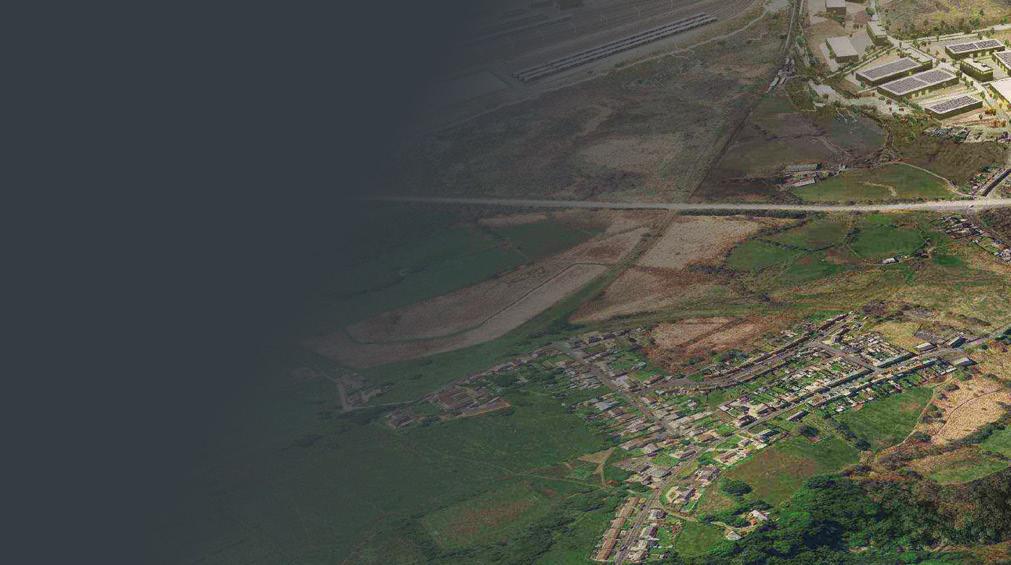
There is more than £2 billion in private investment waiting to be deployed into new trains, new facilities and new opportunities. But unlocking that means tackling key pinch points with the same urgency and coordination we see in the aviation sector



• Prove • Progress • Perform Europe’s premier facility for rail and mobility innovation Discuss Partnerships Now
The Future of Rail Innovation
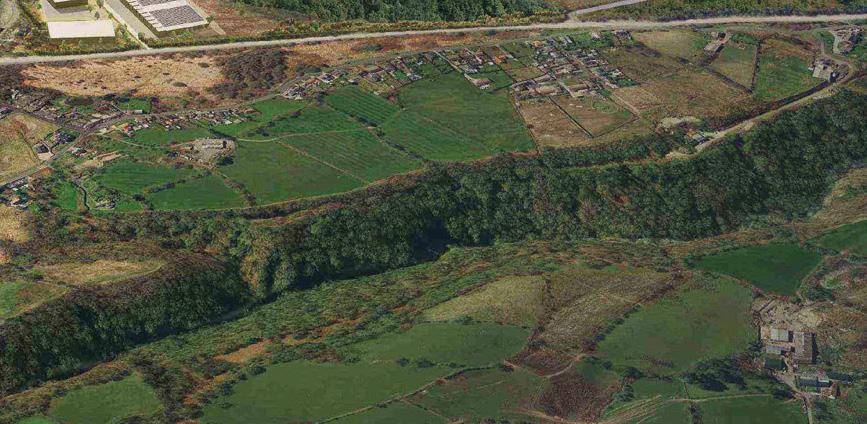
The Future of Rail Innovation www.gcre.wales company/gcreinnovation @gcreinnovation
enquiries@gcre.wales company/gcreinnovation www.gcre.wales www.gcre.wales company/gcreinnovation @gcreinnovation
The Future of Rail Innovation www.gcre.wales company/gcreinnovation @gcreinnovation
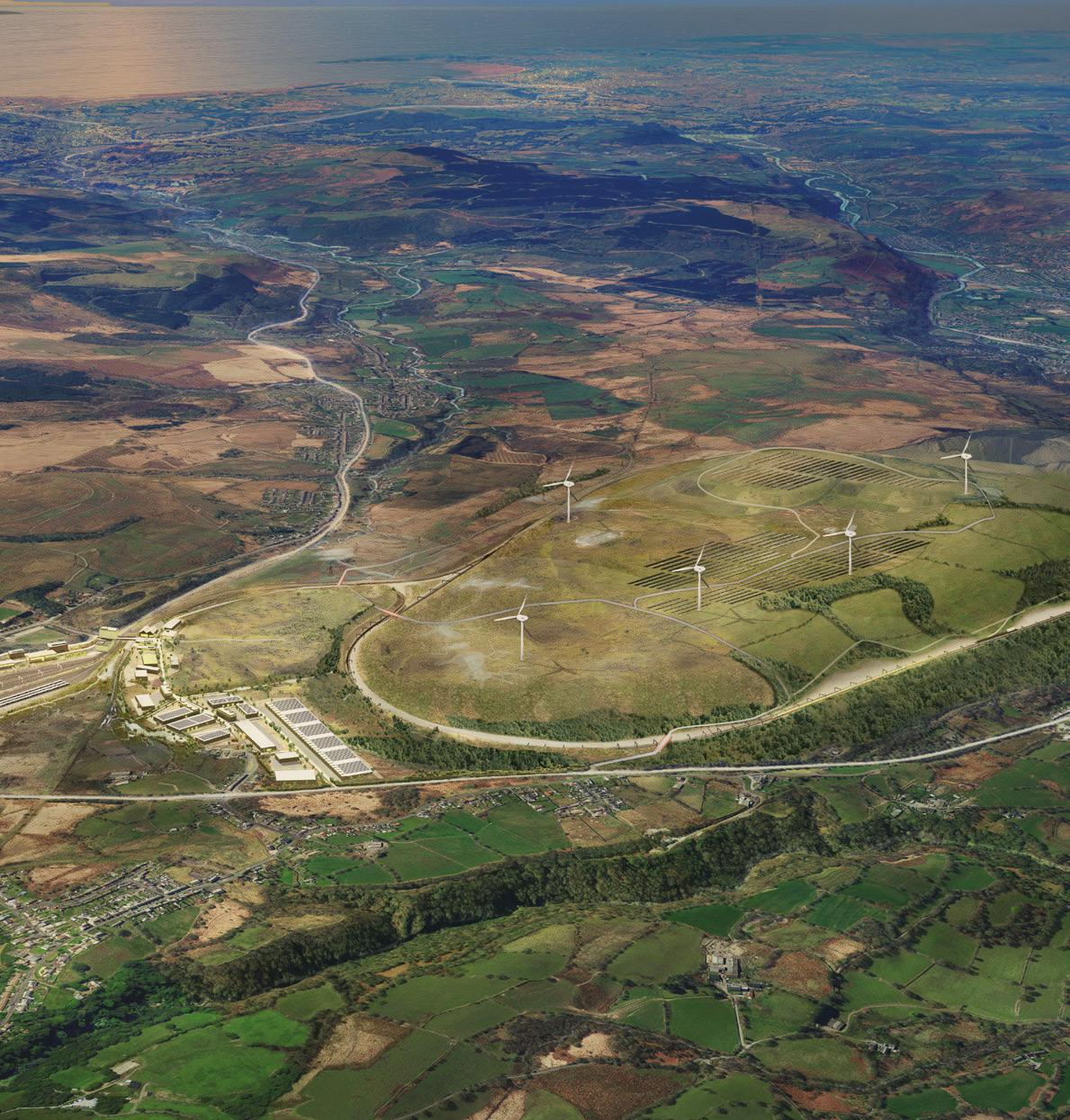


David Horne has recently become the Chair of the Railway Benefit Fund (RBF). He outlines his aspirations in the role and highlights the charity’s importance, including more than £3.5 million in social value through initiatives

For over 165 years, the RBF has offered a helping hand to the people behind the UK’s railways and their families when life throws up the most difficult challenges – such as illness, injury or financial hardship.
Its importance shouldn’t be underestimated. Every four minutes someone reaches out for help or advice. In the charity’s latest Impact Report, it was revealed in the last year that £112,000 had gone towards preventing homelessness, £47,500 supporting children of railway families and £6,986 for emergency food.
“Like any charity, the income that we receive is important, it is how we are then able to help,” said RBF Chair David Horne. “Some members of the railway
community are suffering moments of hardship and although we sometimes put on a really good mask, some of our colleagues are experiencing tough times.
“One of the most important ways that anybody in the railway can help with RBF is through regular giving – just a few pounds can make all the difference. Giving every month will make a big difference collectively to the whole railway community highlighted by the impact we’ve had in the last 12 months.”
In addition, the Impact Report found that there had also been more than £3.5 million of social value generated through various initiatives.
“The social value impact reflects the long-term benefit that the RBF makes to the people it supports
and the impact that they then have on the customers of the railway,” added David, who alongside his role at RBF is Managing Director (MD) at train operator LNER. “That value reflects the social impact that the RBF makes to the people it helps, and in turn, the support they give to the customers of the railway.”
David succeeded Tim Shoveller as the Chair of the RBF earlier this year, and he is passionate about driving the charity forward in providing support to the current, former and retired railway people and their families across the UK. It offers a range of support from financial grants and confidential advice, to online tools and a legal helpline. The assistance extends not just to those working in passenger rail, but also to the wider rail supply chain as well as











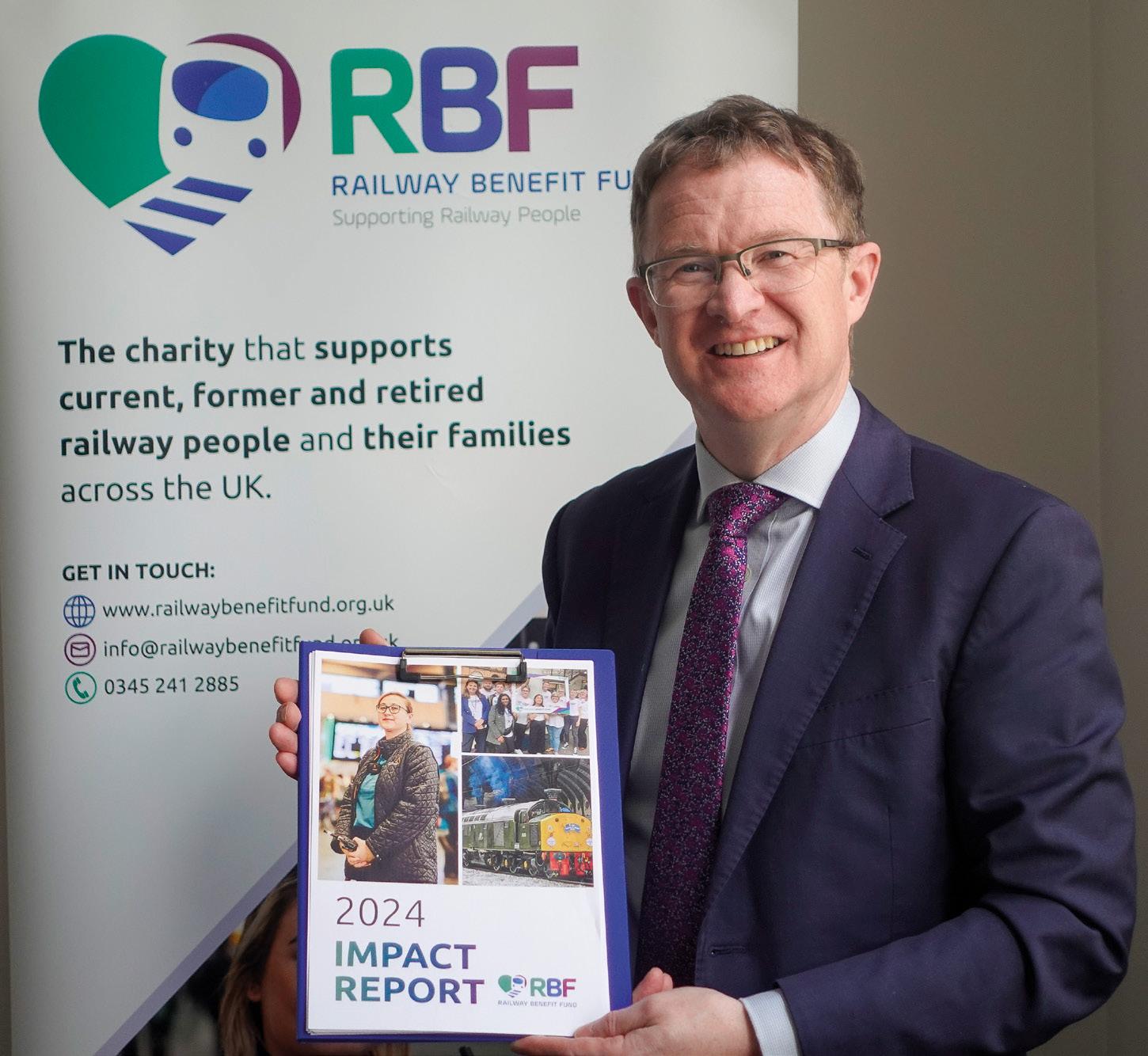
Some members of the railway community are suffering moments of hardship and although we sometimes put on a really good mask, some of our colleagues are experiencing tough times
freight and ancillary services.
“I’m really proud to be the new Chair of the RBF because the charity has for many years done its part to look after the people on the railway,” David added. “We know that while our industry is about the infrastructure and the trains at the heart of the railway are our people, and it’s all about helping people on the railway, to come to work to ensure that we’re looking after each other in the good times and in the tough times as well.
“As Chair, my priorities are very much about supporting the organisation to raise its profile. RBF does some amazing work, but it’s not that well known throughout the industry. Many people are helped by the charity every year, so I want to spread that message to raise awareness about the really important work the charity is doing.
“Of course there is also that really important goal that all of our supporters have in contributing a little bit of money every month to fund the important work that the charity does. That’s a really important thing for me to do this year in my role.”
As a non-membership charity, RBF relies solely on the generosity of supporters to continue its work, which focuses exclusively on the UK railway family. Whether train drivers, station and maintenance crew, ancillary staff, or other key workers, David explains how they want to ensure they can always be at their best.
“We’ve got a fantastic group of people at LNER who look after our customers,” he said. “We know our customers have really high expectations when they travel with us and we look out for them. We need all of our colleagues to be in a good place.
“So as part of my role as MD at LNER, of course we’re looking after the many customers who travel

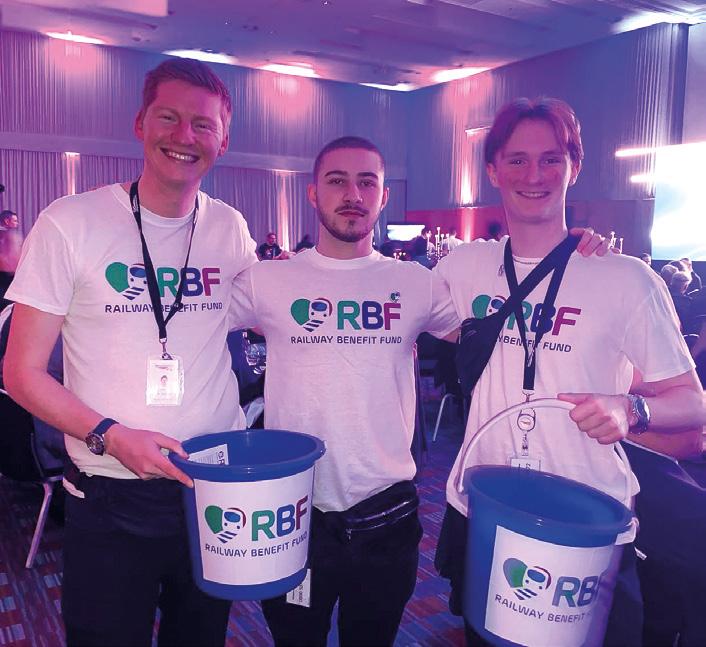
with us every day, but it is also important to look after our own colleagues. Apart from being the right thing to do, their focus needs to be on looking after our customers, and that’s where the RBF comes in, because if people are worried about their financial position in other aspects, they won’t be able to bring their best self to work.
“The RBF is there to help people throughout the railway, who are in financial hardship or who are just struggling a bit and need some wellbeing support. It has a really important role, looking after people on the railway so that we in turn can look after our customers.”
The success of the charity comes down to the support of the railway industry, with organisations donating thousands of pounds each year, individuals taking on challenges for RBF, and people volunteering – the latter including its Check In and Chat service for the retired rail community.
“Our corporate partnership scheme is a really important way in which companies in the rail sector can support the charity and in doing so support those working in the industry,” explained David. “We’ve already got a great team of corporate partners, but we’d love to have more, and it’s a fantastic way for companies to support the charity.
“With this year being the 200th anniversary of the modern railway, let’s celebrate the milestone and the role the railway plays in the UK, but remember that this can’t be done without the fantastic people who work in the industry, so let’s make sure we also look after our own people. RBF has a vital part in ensuring that is the case.”
To get involved and support RBF, visit https://www.railwaybenefitfund.org.uk/donate/ give-regularly/


A new railway connecting Liverpool and Manchester has been described as the “missing link” in a plan to boost jobs, deliver new homes and grow international trade. Rail Director explores the plan and speaks to those backing it
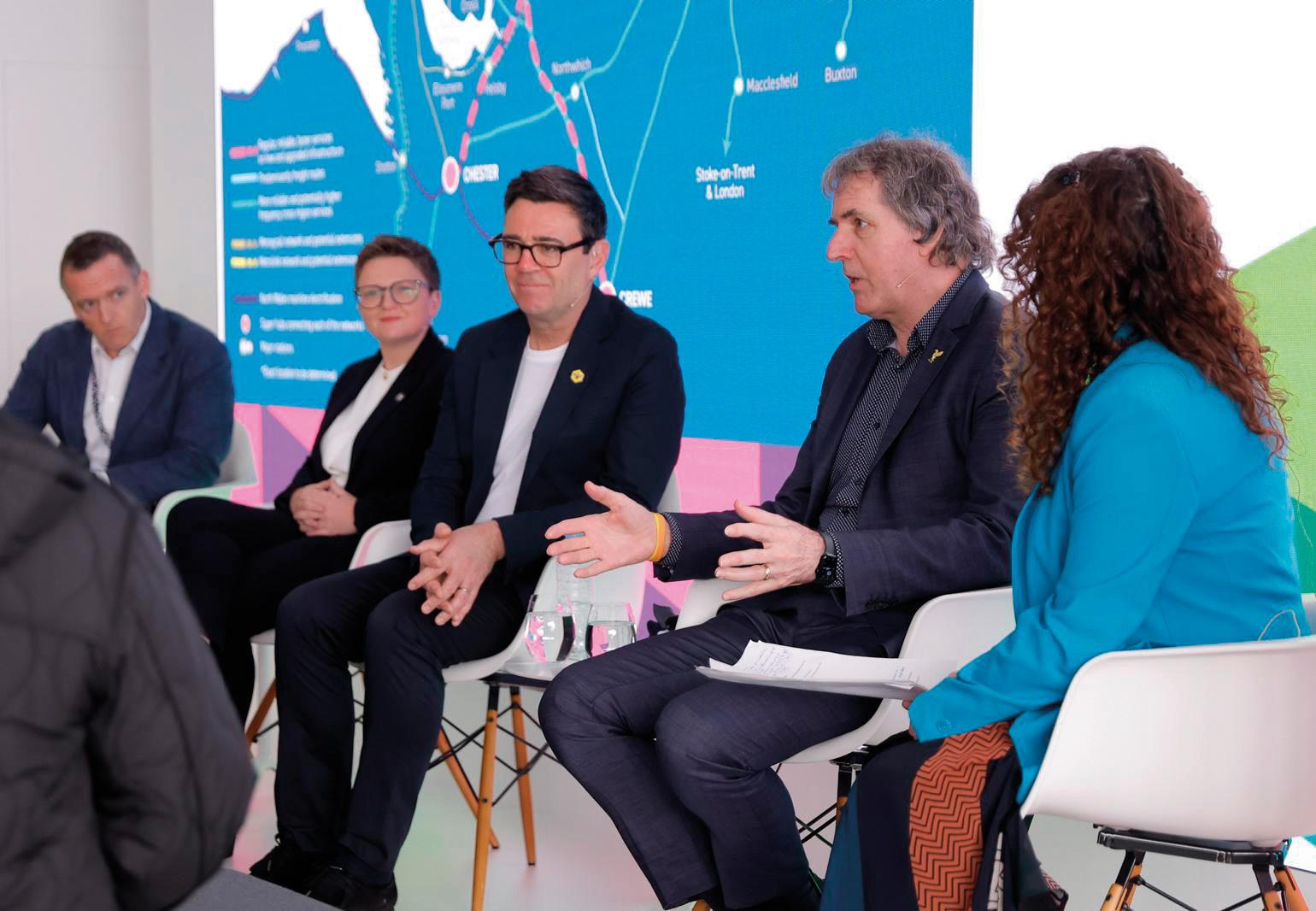

As the UK Government prepares its Spring Spending Review and formulates a pivotal 10-year infrastructure strategy, attention is turning towards a transformative railway project promising to catalyse economic prosperity across the North West: the proposed Liverpool-Manchester Railway (LMR).
The scheme aims not only to improve regional connectivity but also to underpin broader economic growth across the UK, facilitating the Government’s stated national missions. According to the LiverpoolManchester Railway Board (LMRB), the scheme could kickstart a £90 billion economic transformation across the North West by 2040, with construction of the railway potentially delivering a £15 billion boost to the economy and creating 22,000 jobs.
Andy Burnham, Mayor of Greater Manchester, has described the railway as “the missing link required to fully unlock the economic potential of the North West”. Mayor Burnham emphasised: “Connecting Liverpool and Manchester through a reliable, highfrequency railway will significantly boost productivity, innovation, and inward investment. This isn’t simply regional infrastructure – it’s national economic infrastructure.”
Liverpool City Region Mayor Steve Rotheram
echoed these sentiments: “Two centuries ago the Liverpool-Manchester railway changed the world, kickstarting a transport revolution that helped put our region on the map. Now, we’ve got the chance to do it again. With the right investment, we can back local businesses, boost productivity, and give our region the 21st-century transport system it deserves.
“The North West sparked the first railway age, and we are ready to drive the next. But this is far bigger than just a project for our region – it’s a national opportunity. The prize is huge: doubling the size of the region’s economy in less than 30 years, tens of thousands of new jobs, and the chance to build a cleaner, fairer, more connected country, with the North West leading the way.”
The economic rationale behind the scheme is robust. The LM Growth Zone (which includes Liverpool City Region, Greater Manchester Cheshire and Warrington) contributes significantly to the UK’s economy, generating a Gross Value Added (GVA) of approximately £150 billion annually, supporting three million jobs, and housing a population of more than five million. However, the area suffers from constrained rail infrastructure which hampers its potential.
With the right investment, we can back local businesses, boost productivity, and give our region the 21st-century transport system it deserves

This is not about competing – we are already creating valuable partnerships with Cambridge – it’s about recognising that this approach to creating superclusters can deliver the same if not greater economic clout in the North West than anywhere else in the country

Huw Merriman, Chair of the LMR Partnership Board and former Rail Minister, articulated the national implications clearly: “This new railway will serve as a critical backbone for national connectivity, creating stronger economic links both east-west across the North and, through its connection to the West Coast Mainline, north-south. It complements wider initiatives such as the Transpennine Route Upgrade and would deliver the long-promised start of Northern Powerhouse Rail.”
Industry experts have long recognised the limitations of current Liverpool-Manchester connectivity. Reliability and capacity constraints regularly impact journey times and business operations, creating barriers to economic growth.
Dave Maddison, Customer Director at Alstom Transportation and Chair of the Railway Industry Association (RIA) North Leadership Group, underlined this perspective: “Rail suppliers across the North see the LMR project as essential infrastructure. Not only does it resolve chronic bottlenecks, but it also offers substantial opportunities for local SMEs to innovate and grow. It’s vital for the Government to commit clearly to developing this project to deliver sustained economic growth, jobs, and investment confidence.”
Connecting Manchester Airport, the country’s largest airport outside London, and the Port of Liverpool through upgraded railway infrastructure positions the region as an international gateway for trade and innovation, further bolstering economic resilience. The LMR project anticipates strategic new station developments at Liverpool Central, Liverpool East Parkway, Warrington Bank Quay, Manchester Airport, and Manchester Piccadilly, enhancing regional accessibility and driving economic agglomeration.
Moreover, the proposed railway would serve to consolidate the region’s position as a leading UK innovation hub, linking 10 universities with growing sectors such as life sciences, advanced manufacturing, and green energy industries. By strengthening this economic corridor (a key component of the wider Liverpool to Hull “economic superpower” recently articulated by Prime Minister Kier Starmer), advocates believe the region could match or surpass the economic contribution to UK Plc of other nationally recognised corridors like
Oxford-Cambridge.
Aligned with the Government’s stated missions, the LMR is positioned as a cornerstone project driving ‘Economic Growth’, ‘Opportunity’, and efforts to establish Britain as a ‘Clean Energy Superpower.’ Enhanced rail connectivity aligns directly with the UK’s net zero objectives, supporting a sustainable transition by encouraging modal shift from road to rail, thereby significantly reducing emissions.
The project’s emphasis on long-term economic certainty resonates with the Government’s fiscal goals, aiming for a high return on investment. With a limited capital requirement in the immediate spending period, and significant potential private sector interest in funding and financing to be unlocked, the scheme satisfies prudent financial criteria set by HM Treasury, reinforcing its viability.
Notably, the LMR initiative has garnered wide-ranging support from political, industry, and community leaders, underscoring its broad appeal. The formation of the Liverpool-Manchester Railway Board, co-chaired by Mayors Burnham and Rotheram and featuring senior figures from regional councils and major businesses, exemplifies a unified regional voice championing sustainable economic development through enhanced connectivity.
Huw Merriman summarised the significance of this collective approach, noting: “The strength of the LMR scheme lies in the diversity of its coalition, bringing together leaders from across the political and economic spectrum. The upcoming Spending Review is an ideal moment for the G overnment to recognise and support a project which will deliver critical transport infrastructure for the region and, for the benefit of the entire nation, the jobs, homes, skills and green energy which the Government has rightly prioritised for sustainable growth and balanced national development.”
As the UK seeks pathways to economic revitalisation and national competitiveness, the Liverpool-Manchester Railway emerges as a compelling model for infrastructure-led growth. With the Spring Spending Review imminent, stakeholders from across the rail industry and regional business communities emphasise the critical need for Chancellor Rachel Reeves and the new administration to provide the necessary funding to develop the scheme in partnership with the Railway Board and make the case for capital investment in later spending rounds.
Support in the forthcoming spending review, and inclusion in the 10 Year Infrastucture Strategy, would send a strong signal of continuity and confidence, ensuring the project progresses smoothly and delivers its promised regional and national economic benefits.
Mayor Burnham added: “The sheer scale of untapped growth potential of the North means that, with the right Government support, the size of the prize could match that of the Oxford-Cambridge Arc.
“This is not about competing – we are already creating valuable partnerships with Cambridge – it’s about recognising that this approach to creating superclusters can deliver the same if not greater economic clout in the North West than anywhere else in the country.”


SPECIALISTS IN TRAIN DRIVER PSYCHOMETRIC TESTING

Railway Competence Group (RCG) are a premier provider of comprehensive train driver assessment and training services.
Our suite of offerings, including Train Driver End Point Assessment, Psychometric Testing, and Train Driver Incident Prevention Courses, are designed to elevate the standards of railway operations and safety.




RCG's Train Driver Psychometric Testing services are tailored to identify candidates who possess the essential attributes for a successful train driving career.
We deliver psychometric testing to the Railway Industry Standard (RIS3751-TOM) and can provide bespoke testing as per the clients request.


OFQUAL REGULATED END POINT ASSESSMENT ORGANISATION FOR THE TRAIN DRIVER APPRENTICESHIP STANDARD
At RCG, we understand the critical role that competent train drivers play in ensuring the safety and efficiency of rail operations.
Our Train Driver End Point Assessment service is designed to evaluate candidates’ knowledge, skills, and behaviours against industry standards. We have 24/7 flexible assessment availability and will work to the operators requirements.


TRAIN DRIVER INCIDENT PREVENTION COURSES





Safety is at the heart of everything we do at RCG.


Our Train Driver Incident Prevention Course is a specialised program designed to equip train drivers with the skills and knowledge to prevent accidents and incidents on the railways.


Andy Mellors, Managing Director (MD) of Avanti West Coast, talks of the improvements the operator has made, but how he recognises there is more to do
Andy Mellors is determined to deliver a railway that customers and communities deserve, emphasising that working together as an industry particularly around innovation will be an important factor in being successful.
It’s not been a smooth journey for the Managing Director of Avanti West Coast in his first two years in charge, with services and performances impacted by driver shortages and strike action.
But there is light at the end of the tunnel, and reasons for optimism, with a brand new fleet of trains as well as a refurbished fleet and a lot of hard work that is already leading to improved performance and renewed confidence from those the operator serves.
This is being driven by working in collaboration with Network Rail in a joint performance strategy to improve train service reliability on the West Coast main line.
“We’ve always worked closely with Network Rail and in the last year we’ve jointly faced a period of heightened challenges that have caused more delay to our services than we’d like,” said Andy.
“With Network Rail we have agreed a collaborative plan to identify the key causes of delay and what we intend to do is reverse those trends and tackle any issues that might arise over the next five years to reduce failures, respond quicker and recover better.”
He adds that this new way of working has created a better foundation to be more aligned and working together to reach the common goal of delivering the best possible service for customers.
“In doing that, we are tackling a number of complex challenges, not least the heavily utilised first 60 miles out of Euston which is subject to a specific plan, as well as our Manchester and Anglo Scottish service groups that have proven particularly challenging,” he explained.
“But our partnership is already delivering benefits and our improvements are being recognised by our customers. Passenger numbers continue to grow as more customers trust us to deliver a reliable journey, reflected by the fact our score for customer advocacy is now at the best level since the pandemic.
“We are delivering better value for money for both customers and taxpayers and as a result we are one of only two operators which are returning a premium to Government and generating more money to the taxpayer than we are receiving in subsidy, with more than £100 million premium this financial year.”

Andy, who has previously held senior roles at Great Western Railway, South Western Railway and Managing Director of FirstGroup’s non-franchised rail businesses, isn’t getting complacent with the success.
“We want to continue to grow, and to do this we know we need to embed innovation into our day to day thinking to stay aligned to changing customer needs and recognise that innovation often means changing the way we do things around here,” he said. “Change can bring fear but to account for that we’ve trained a cohort of people managers in innovation and change management.
“The pandemic and subsequent recovery have required the industry to be more agile and innovative than ever to address the delivery and growth challenges that we face given the changes to customer behaviour and change with industry revenues. I think at this critical time it is more important than ever for the sector to work together in new and better ways.”
Andy, speaking at the Railway Industry Association
Innovation Conference in Wales, emphasised the importance of the industry in being open to change, whether it is introducing new technology or transforming ways of working.
That has certainly been the case at Avanti West Coast, no more so than the introduction of its new Hitachi electric and bi-mode trains, the latter capable of running on both electric and diesel power. The £350 million investment in the Evero fleet has delivered a more sustainable train and provided a better travelling experience than the fleet they’ve replaced.
“They’ve delivered more than a two-thirds cut in carbon thanks to eliminating diesel operation under the wires and the first deployment on the Hitachi Class 80X platform of stage five compliant diesel engines,” explained Andy.
“There are also the customer improvements of the new fleet including more space, reliable Wi-Fi, wireless charging and real-time customer information service on several routes out of London, Liverpool, Chester and Wales, providing more services,





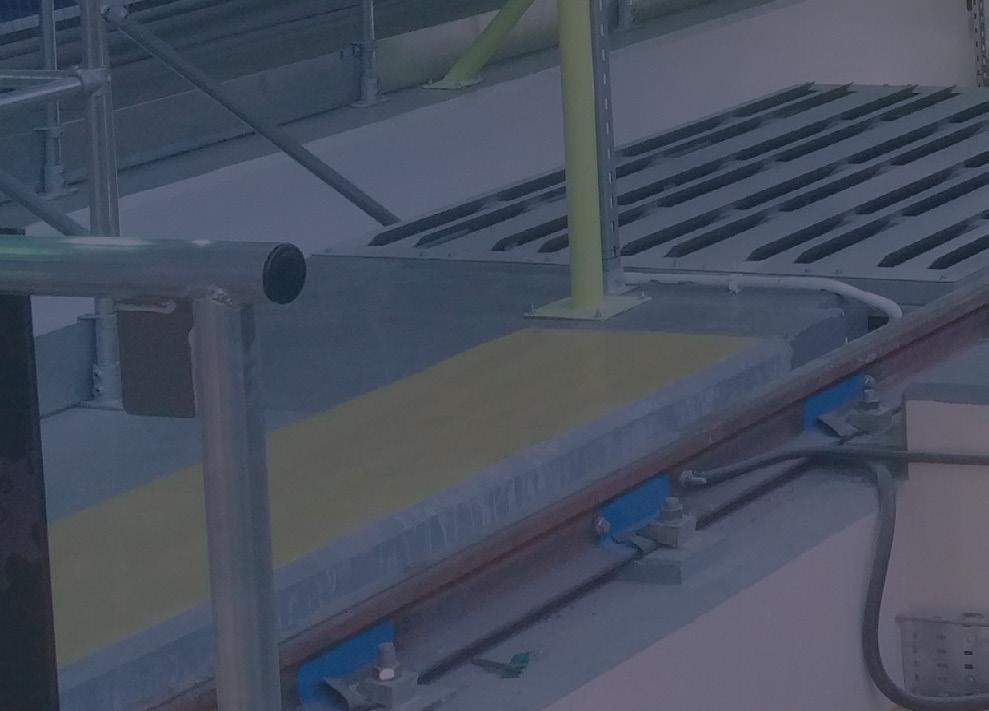

















more capacity and delighting customers and colleagues alike.”
Alongside the new fleet has been the two-year refurbishment of the operator’s Pendolinos, a £117 million investment on all 56 trains, 574 carriages, which concluded last year.
“This was the biggest refurbishment of its kind that the UK had ever seen, returning the whole Pendolino fleet to an as-new condition with new seats, better lighting, luggage space, accessible spaces and table charging points in all classes,” Andy said.
“These improvements were only made possible because of the strong shared vision and collaboration with our supply chain partners.”
It is this working with the supply chain that Andy highlights in his speech, and how thinking differently is transforming all aspects of the operator. One example he gives is partnering with DHL Supply Chain to roll out smart temperature devices across its onboard catering operation.
A first for the UK rail industry, food which would normally go to waste is being saved using a temperature monitoring solution, contributing to the intercity operator’s commitment to reduce its impact on the environment. Internet of Things devices have been installed on trains as well as food carts to monitor temperatures and reduce waste.
Another successful example is Avanti’s Superfare ticket, which enables passengers to book a journey for a specific date, with the choice of morning, afternoon, or evening time slots at a cheaper fare –with the exact time of travel selected by Avanti West Coast. With at least 24 hours’ notice, the operator will
We want to continue to grow, and to do this we know we need to embed innovation into our day to day thinking to stay aligned to changing customer needs and recognise that innovation often means changing the way we do things around here

match customers to an empty seat on a quieter train, advising them of their reservation details and the train’s departure time.
“It has been net generative and brought more people to rail,” Andy explained. “They have come from either other modes, or in many cases they are journeys that they simply wouldn’t have made at all had it not been for this initiative.
“We have also recently celebrated the third anniversary of our three class offer with 2.5 million Standard Premium Journeys having been made in the past three years, allowing customers to get more space and a guaranteed table seat for less than the price of a normal first class fare.
“It’s about how we can evolve and improve the customer experience. Recently we’ve started trialling CCTV analytics at Preston and Stafford so customers can be alerted and respond to live safety situations quicker. From an accessibility point of view we continue to work with disabled people to guide our work, taking an innovative approach – for example rolling out digital wayfinding solutions at our stations and our travel companion tool offering real-time support.”
The work goes beyond just improving the experiences of passengers, but also the communities Avanti operates around. Last year it donated more than £345 million in social value as measured by the RSSB rail social value tool, almost a two-thirds increase on the previous year. Andy predicts the total is on track to exceed £1 billion by 2031.
An initiative he is particularly pleased about is Feel Good Field Trips, which gave pupils aged four to 18 the chance to travel across the West Coast main line for hands-on learning, fun and culturally diverse days out.
Andy said: “More than 5,000 school pupils have had the chance to travel by train and it was a real honour to celebrate that milestone with school children and experience first hand the opportunities we are offering them, connecting thousands to an experience they simply might not otherwise have had.
“That feels particularly important this year, the year of Railway 200, in celebrating the contribution which the railway and its people have made to the wider society since 1825. It’s important to recognise that we are in a privileged position of being able to make a positive difference to communities up and down the country both today and in the future. That is what continues to drive us to continue to improve and be the best we can.”















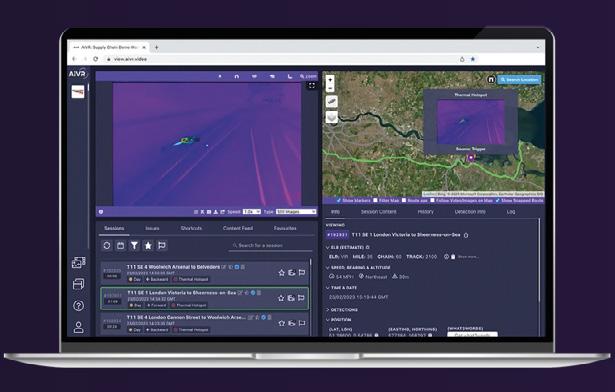







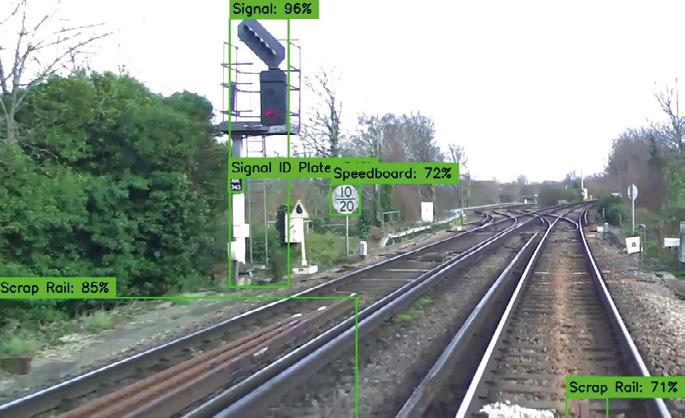





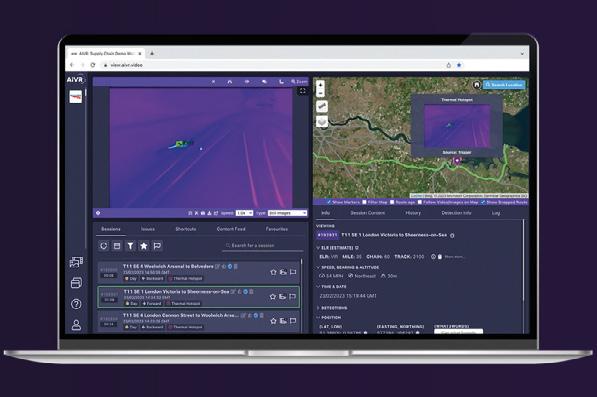








































Rail Minister Lord Hendy has said lowering the train driver age to 18 will help futureproof the railways, support young people in fulfi lling careers and boost growth

There are 27,000 licensed train drivers in the UK, of which 30 per cent will be reaching retirement age in the next five years.
In a bid to boost the number of drivers, the Government has announced that thousands of jobs and apprenticeships will be made available to those from 18 years old from December this year; dropping the age limit by three years.
“I don’t like to look at things as a crisis, but it is certainly a challenge facing the rail industry when it comes to train drivers,” explained Rail Minister Lord Hendy. “This is about futureproofing our railways against delays and cancellations caused by a shortage of drivers, ensuring that we can provide reliable, passenger focused train journeys.”
The decision to lower the age aims to reduce the over-reliance on rest day working by getting more people into the driving seat and ensuring a steady stream of drivers enter the industry.
The average train driver is 48 years old and rising. Bringing young talent into these skilled roles now aims bridge this gap, preventing any future shortages and ensuring consistent, reliable services for passengers.
In a profession that is less than nine per cent female and less than 12 per cent represented by ethnic minorities, Lord Hendy believes this will also open professional opportunities to a much wider group of people.
“The advantages are that talking to young people in schools and colleges will mean we are talking to a more diverse audience,” he said. “But as an industry we do need to sell the role and highlight how it is an astonishingly good, stable job with a good pension and many opportunities.
“Lowering the age of train drivers means we aren’t losing a percentage of potential workers who move on to different careers from school because they can’t become drivers straight from school.”
The decision follows a consultation DfT undertook last year, which received overwhelming support.
“We received a significant number of responses from across the industry and the wider public, including existing train drivers, train driver managers, signallers, rail operators, trade unions, other professionals, industry bodies and trade associations, among others,” added the Rail Minister.
“Train driving is a demanding role that carries significant responsibilities and a duty of care to the public. Everyone who takes on the role of a train driver must undergo rigorous training to ensure they are competent, qualified and fit to do so, ensuring the safe use of our railways for everyone.”
Several other countries have already successfully and safely adopted a lower age limit, including the Netherlands, France, Germany and Switzerland, with other countries, including Japan, considering a change in law. Transport for London also successfully
opened up its train driver scheme to 18-year-olds to drive trains on the underground network in 2007.
Following the Government’s announcement to lower the age, Lord Hendy is asking the sector to work together to prepare an industry-wide plan for integrating prospective younger applicants into the train driving profession, to ensure that this is done effectively and consistently.
“The plan should ensure that the procedures, guidance and standards used for training, assessing, managing, supervising and onboarding younger applicants are effective and appropriate,” he said.
“Accordingly, the sector will need to invest in expanding existing training and assessment capacity to manage an increased intake of younger drivers, so that trainees can be progressed as quickly as practicable.
“It should also ensure that appropriate administrative and human resources infrastructure is in place, including for the provision of welfare and oversight, to support younger train drivers.
“The sector will also need to demonstrate how it intends to use this change of law to support a coherent workforce strategy, including through effective outreach to schools and colleges and through clear pathways for progression.
“I’d like to see every possible resource being used to train drivers as driver number growth since COVID hasn’t been satisfactory.”

Mike Rustell,
Chief Executive
Offi cer at Inframatic, writes about the advent of Generative Engineering and how it will drive improved working practices





have spent my career building artificial-intelligence (AI) systems for engineering. Before large language models (LLMs) arrived, progress was throttled by sparse, messy data and a shortage of engineers who could also develop AI systems. Today the pendulum has swung too far the other way: we drown in information, yet rarely convert it into insight. New tools launch weekly, but they all sound similar, LinkedIn hums with confident forecasts, but project boards advance at the same cautious pace. The culprit is rarely technology. It is the friction between paper-era governance and the blackbox nature of most AI.
Generative Engineering proposes a different contract between AI and assurance. Rather than bolt compliance checks on at the end, it weaves the rules into the fabric of the model. Every output can be traced back to a standards clause, employer’s requirement or specification; conflicts between requirements surface instantly; risk registers update themselves as operating data accumulates. In short, the system speaks the language of our safety cases, not just that of data scientists.
The practical payoff becomes obvious the moment theory meets the nightshift possession. Imagine a clash detector that explains why two tasks conflict rather than merely flagging the clash, or a safety-case






draft that materialises with each design iteration, cross-referenced to the Construction (Design and Management) Regulations 2015. I have seen prototypes stall at pilot stage because no-one could convincingly articulate how a neural net “decided”. By baking verification into the architecture, Generative Engineering turns that interrogation into a feature, not a failure mode.
A more subtle – but inevitable – shift accompanies this approach: we move from document-centric to datacentric working. Drawings, specifications and reports become snapshots of a living, versioncontrolled data model. Change a parameter and every downstream artefact – cost estimate, risk curve, maintenance plan – updates automatically. The promise is not faster paperwork; it is a single, coherent narrative of the project that regulators can audit and engineers can trust.
So, where should senior rail leaders start? Not with procurement schedules or technology checklists, but with preparation. Treat assurance-ready data as strategic infrastructure and carve out exploratory space – both political and technical – to test what transparent, traceable models can unlock. Early pilots matter less for the widgets they produce than for the questions they surface: Where does data lineage break down? How will regulators engage with live traceability? Which design decisions
benefit most from generative support? By framing experimentation as a learning exercise rather than a shopping exercise, leaders create the knowledge base – and the negotiating leverage – to shape the market on their terms. When formal procurement does arrive, those who have rehearsed the data journey will set the brief; those who wait may find themselves buying a generic off-the-shelf solution stamped with someone else’s logo.
Of course, risks remain. Algorithmic opacity must be countered with rule-aware architectures; data ownership needs clear contractual language; the talent gap demands strategic partnerships to navigate and continuous professional development. Yet none of these obstacles outweigh the cost of clinging to status-quo inefficiencies.
Generative Engineering is not another gadget in the innovation catalogue. It signals a cultural pivot towards data-centric, assurance-first delivery – one that mirrors the interdependent reality of railway systems. As custodians of national infrastructure we have a responsibility to guide this transition with scepticism, rigour and, yes, optimism. Next time you leaf through a safety case, ask whether it could have been generated – and audited with AI assistance. If the answer feels uncomfortably close to “yes”, the future is already knocking.
www.inframatic.ai/

A replacement for the existing Block Controller for single line track.
Our fully digital version of key token equipment communicates digitally through IP based systems, including provision for TPWS and section signal release.
The DiBloC features:
•IP connectivity with two redundant connections
•Physical key compatibility with existing key token machine equipment such as ground frame locks
•Ability to work in sets of 2-6 units
•Ability to operate TPWS and/or single throw/starting signals
•No on-board equipment –compatibility with all rolling stock


KeolisAmey Docklands has begun a new eight-year contract to operate the DLR. Alistair Gordon, Chief Executive of Keolis UK and Ireland, writes about the focus on running a safer, greener and more reliable operation

If recent journeys on the DLR have felt seamless despite some of the changes of the past year, then we hope that’s a sign we’re getting things right. Last month marked the start of a new eight-year contract for KeolisAmey Docklands, a 70:30 joint venture between Keolis and Amey, to operate and maintain the network.
We’re proud to have been trusted once again by Transport for London (TfL) to run one of the capital’s most vital transport arteries – something we’ve had the privilege of doing for the past decade.
In that time, we’ve carried more than one billion
passenger journeys, consistently ranked in the top two of all TfL modes for customer satisfaction, and been recognised with 16 industry awards. That includes being named Operator of the Year six times.
But this isn’t just a continuation of service, it’s the beginning of a new chapter. We’re bringing an ambitious vision for what the next eight years will look like for commuters, colleagues and communities alike. Keolis is the world’s leading operator of automatic metro systems and tramways and we will continue to bring this expertise to London alongside Amey, a leading provider of engineering, operations and decarbonisation solutions for UK infrastructure and
complex facilities.
Our focus is clear – deliver a network that’s safer, more sustainable and consistently delivers a higher standard for everyone who uses it.
We want to ensure we maintain the highest standards across every part of the DLR experience – from ensuring escalators and lifts are consistently available, to cracking down on fare evasion in a way that makes the network feel fairer and more secure.
We know that’s important to the vast majority of passengers who simply want a safe and reliable
The next eight years is about more than infrastructure and performance metrics. It’s about the people that make London one of the best cities in the world
journey and we’re committed to ensuring they see a marked difference in how they feel using public transport.
The safety of our passengers and staff will always be a priority for us. That’s why we’re proud to be supporting TfL’s Vision Zero goal to eliminate deaths and serious injuries on the capital’s transport network.
And the DLR has a crucial role to play in driving a cleaner, more sustainable future for London. That’s why we’re supporting TfL in its drive to reduce carbon emissions and improve air quality across the city.
A big part of that will be the introduction of 54 new DLR trains. These modern, energy-efficient trains will not only improve frequency and reliability but also replace some of the oldest vehicles on the network, helping reduce emissions while better meeting the needs of a growing East London.
That growth is significant. In areas like the Royal Docks and the Isle of Dogs, where the DLR is the main transport option, demand is rising fast and is now around 12 per cent higher than it was before the pandemic. Our timetable enhancements and capacity upgrades are designed to keep pace with that growth, offering more people a clean and reliable alternative to car travel.
But we know for most passengers, it’s the day-to-day experience that counts. The ease of buying a ticket. The clarity of the information screens. The confidence that help is there when it’s needed. That’s why the new contract comes with new customer satisfaction targets around the things that matter most: the availability of lifts and escalators, the appearance and reliability of ticket machines and the effectiveness of customer information.
We’re also rolling out and promoting Access DLR – a free travel assistance service for anyone over 18 who needs extra support. Accessibility must never be an afterthought and we want every passenger to feel confident and supported on their journey.
Put simply, we want to make every DLR journey better than the last.
The next eight years is about more than
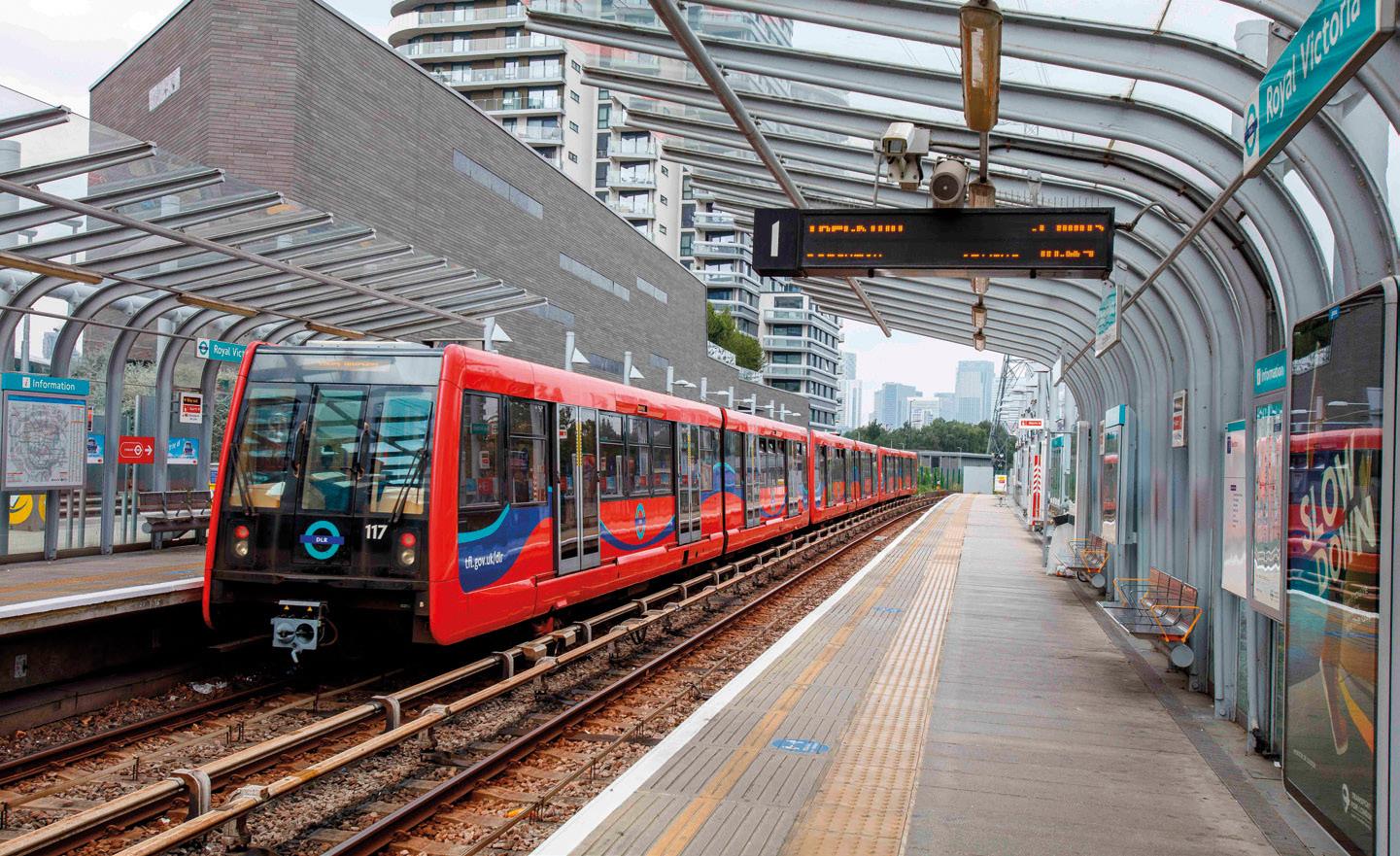

infrastructure and performance metrics. It’s about the people who make London one of the best cities in the world. It’s about our colleagues who work hard every day to keep the network moving. It’s about the local communities who rely on the DLR to get to work, school and see their loved ones. And it’s about the businesses and investors who see East London as one of the capital’s most dynamic and connected places to grow.
We’re proud of what we’ve achieved as KeolisAmey Docklands so far. But we’re even more excited about what comes next. Together with TfL, we’ll continue to deliver a DLR that’s safer, greener and better for everyone.
The plans have been described as a bold and collaborative vision to transform London Liverpool Street station


The City of London has validated Network Rail’s planning application for the redevelopment of London Liverpool Street station.
The proposals aim to futureproof the station for decades to come, providing more space and creating a connected station across the rail network, London Underground, the Elizabeth line, buses, cycling and pedestrian routes while also delivering a fully accessible gateway for customers across the capital and beyond.
Sir Andrew Haines, Chief Executive, Network Rail said: “The station proposed in this application is absolutely what London needs. An accessible, inclusive, world-class multi-modal transport gateway to the heart of London - designed to serve the City, all Londoners, and everyone who travels through it. “
London Liverpool Street currently connects 118 million people a year within London, East Anglia and the East of England, with annual passenger numbers forecast to grow by 35 per cent to 158 million by 2041.
The plans are a first for Network Rail outlining a


The station proposed in this application is absolutely what London needs
comprehensive and coordinated set of requirements to deliver a new and integrated station which have been developed with support from Transport for London (TfL). This approach is intended to serve as a model for how future infrastructure projects across the capital are managed.
Liverpool Street station no longer meets the expectations of passengers, and for some, the lack of step-free access and basic facilities makes travel difficult. The station already experiences heavy congestion at busy times, whether at ticket barriers,
in the concourses, or moving to the underground and street level. Since the last major upgrade, passenger numbers have tripled.
Andy Lord, London’s Transport Commissioner, TfL added: “Network Rail’s vision for the station gives us an opportunity to work together to provide the excellent levels of customer satisfaction we want everyone to experience as they travel across our networks.
“We welcome that these plans include a comprehensive step-free solution for those using the Underground. At the heart of these plans is an unshakeable commitment to safety, top-tier performance, and delivering a transport system for London that is not only efficient, but environmentally sustainable.”
Network Rail has worked closely with TfL and other key stakeholders on the revised proposals, including Historic England, to ensure the transformation delivers a better customer experience alongside celebrating the heritage and creating a bold station interior.

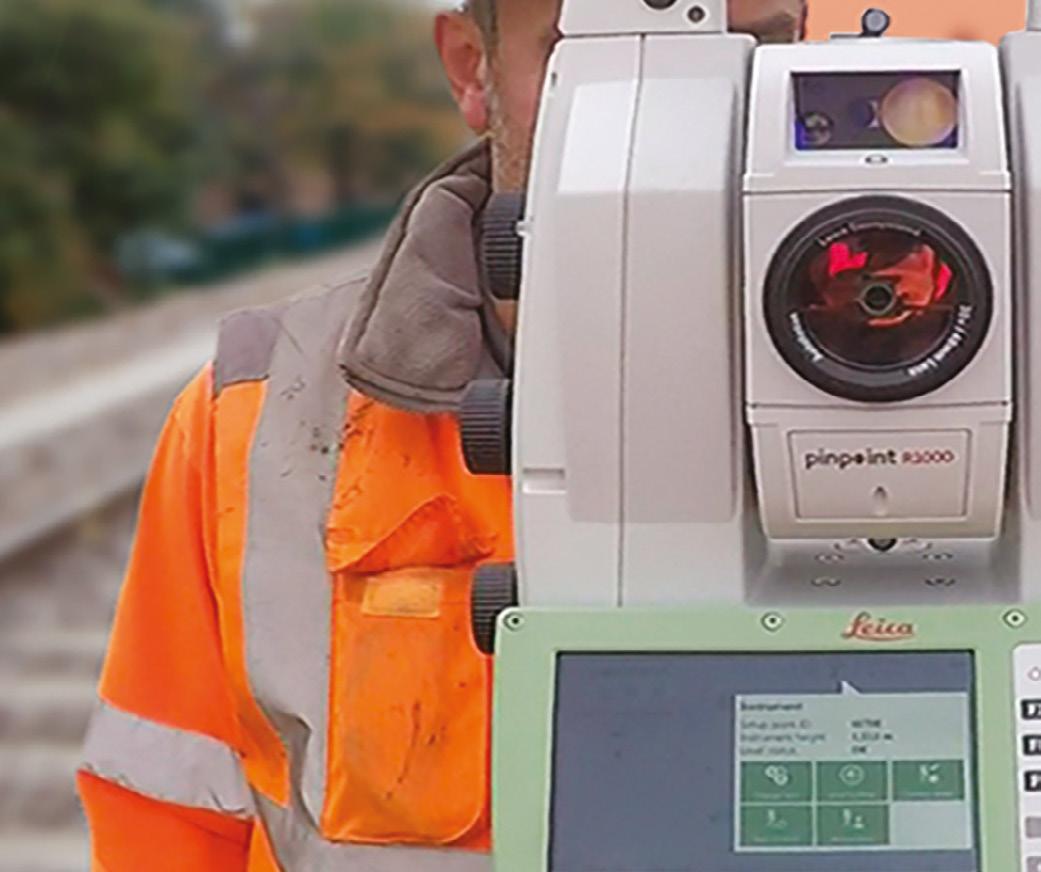


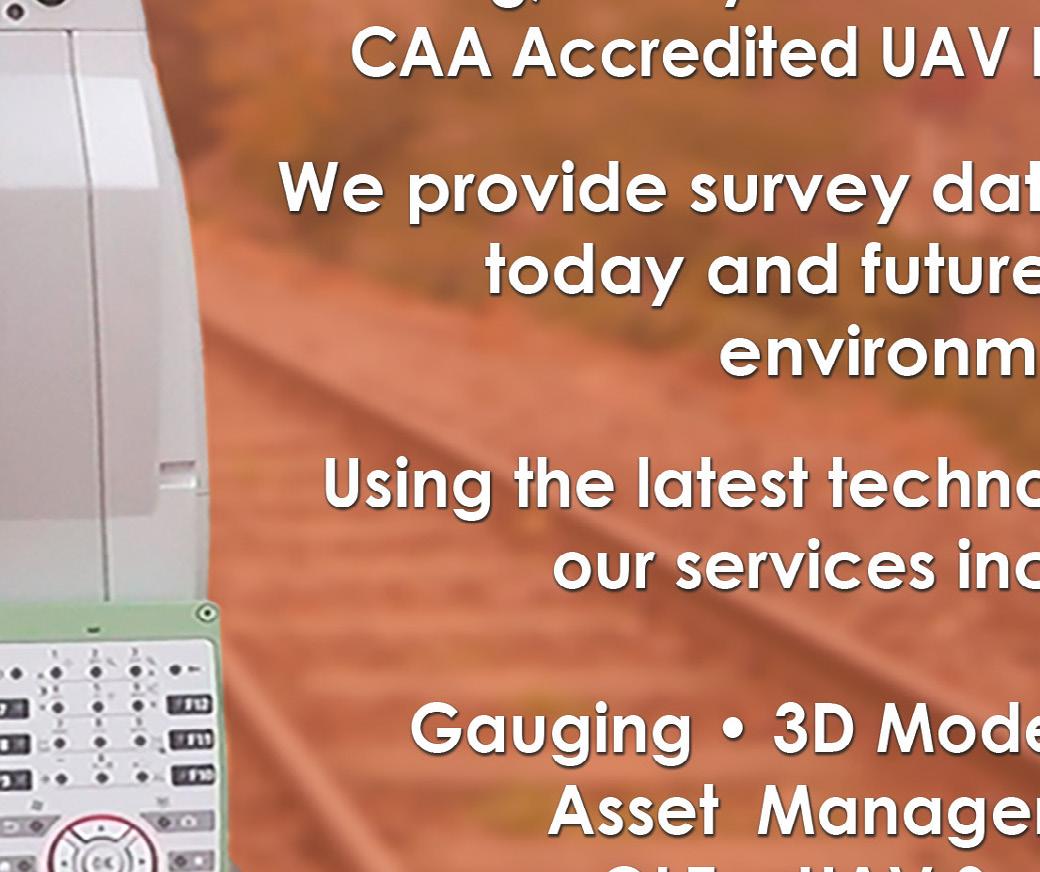




The Railway Industry Association (RIA) has published a new discussion paper which sets out a place-based approach for delivering better stations across the nations and regions of the UK. The organisation’s Policy Director Robert Cook explains more
Railway stations are vital gateways for communities across the length and breadth of the UK. A new discussion paper released by RIA highlights a significant opportunity to redefine the role of the more than 2,500 stations across the country, unlocking their potential in driving economic development and connectivity.
Robert Cook, RIA’s Policy Director, said: “Railway stations will be instrumental to the Government’s ambitions to construct new towns and build more than 1.5 million homes over the current Parliament.
“For example, analysis suggests over one million homes could be built around England’s rural stations with only a one per cent decrease in the green belt. A new approach to station development is needed which leverages the best of the private and public sectors to deliver better outcomes for communities, passengers, and taxpayers.”
RIA’s new discussion paper, Stations: Engines of Communities, sets out a place-based approach for delivering better stations across the nations and regions of the UK, calling for a new private and public approach to station development to fully realise the economic and social value of railway stations within communities.
The scope of this paper primarily covers the station estate that will be inherited by Great British Railways, or devolved to Mayoral Combined Authorities, and deliberately focuses on small and medium-sized stations, due to particular challenges in securing investment. The lessons may be applicable more widely to other stations.
Key areas include:
Investing in smaller and medium sized stations as a portfolio – getting away from today’s fragmented approach – using economies of scale to significantly lower costs (such as through Network Rail’s HUB Station design that uses modern methods of construction).
Harnessing the full range of funding sources to help pay for station improvements e.g. retail, advertising, car parking, energy generation, land value capture.
Using private investment models and commercial expertise to bring together and maximise these different revenue sources.



Close working in partnership with local authorities, including in using stations to support housing development and, vice versa, for housing development to support station upgrades.
Robert said: “A reimagined station network could ensure that every passenger can benefit from safe, inclusive, and accessible travel, but there is a much broader opportunity to redefine the role of stations in society, using them as drivers of economic growth, green transport, supporting community life, and the development of new housing. This is about connecting investment with community needs.
“Previous studies, such as Rail Delivery Group’s Vision for Stations and Network Rail/Arup’s Tomorrow’s Living Station report, have showcased a persuasive vision of stations as hubs of mobility

and activity, yet this vision has largely remained aspirational rather than actionable.”
The report highlights how the stations of the future must integrate sustainability, however at present there is no clear industry plan to improve the sustainability and energy performance of station buildings. It mentions Worcestershire Parkway station as an example of success, achieving carbon neutral status just five years after opening.
Robert added: “By improving energy and environmental performance, stations can reduce their operational footprint while cutting whole-life costs, ensuring both financial and environmental long-term benefits. For instance, there are no energy-saving technologies and systems that can generate and store their own electricity, using this to power lighting and support passenger facilities.

“Modern stations have the potential to become hubs for renewable energy production, integrating solar panels, battery storage, and other innovative technologies to serve not just the station’s own needs but potentially contribute to local energy grid management.”
For years, station renovation has been constrained by limited budgets and fragmented approaches, with the RIA report explaining that public finances alone will not allow for all the investment required, with a wide range of revenue streams not being currently maximised, both within and around stations.
“A practical, scalable, and repeatable model to turn the aspirations for stations into reality has been missing,” explained Robert. “A framework is needed that not only reimagines the concept of a station, but also provides a clear path to their reinvention.
“Traditional farebox revenue is an important source of income, but the potential to harness other direct revenue streams such as retail, advertising, car parking and charging points; and indirectly housing, over station development, land value capture and business rates retention and community services, all need to be considered alongside this.”
Reducing costs is a critical component of strategically planned station development. Strategic planning and an integrated approach to upgrades and station projects mean that costs are lower while station functionality is increased.
“A portfolio approach to station upgrades will leverage economies of scale and strategic resource allocation to minimise costs,” added Robert.
“Repeatable designs can reduce costs. The HUB Station cost estimate has been benchmarked against the Minor Station Cost Benchmarking report provided by Network Rail, which found that while for Category F stations it would be more expensive (0.4 million compared to £0.1 million) for Category E stations it would be significantly cheaper (£1.25 million compared to £1.8 million).
“Network Rail’s 2022 HUB Station Design Manual reported that producing parts for new stations is cheaper if there is a modular design, where different parts can be produced in bulk. For example, the supplier consulted in the development of the HUB Stations design anticipated a 50 per cent cost reduction of the solar photovoltaic panels if manufactured at scale (to the order of thousands of units).
“Shorter programmes are also projected to reduce

costs. For example, Story Contracting found that savings of £208,000 can be expected for an eightweek programme, based on the costs of crane lifts and isolation every weekend. Modular designs also offer other cost-saving benefits, including enhanced flexibility and simplified maintenance.”
Key core obstacles to private investment that RIA has previously identified are:
A clear Government policy on rail and private investment to provide certainty of approach and confidence over the life-cycle of investments.
More pathfinder projects and standardised approaches, the need for a clear and specific route map for opportunities to invest in rail schemes.
Intelligent market engagement and a targeted review of procurement practices in order to unlock innovation, the public sector must effectively engage with the private sector.
Fair comparison of the costs and benefits of private finance with public borrowing with Government appraisal methodologies need to explicitly assess the potential benefits of using private finance.
“Reversing the decline in private investment will require investment models that are commercially viable and meet the needs of a range of different groups, including investors, central Government, and local authorities,” said Robert, explaining how the criteria for success are that it is viable to investors, central Government, and developed transport authorities, as well as being scalable, repeatable, and involving public-private collaboration and adequate data for evaluation.
“There are a number of different funding and financing models already used for railway infrastructure projects in the UK and internationally. Some of these models have been used for station building or enhancement projects, whilst the rest serve to provide inspiration for promising funding models for stations.
“The ideas proposed in this paper are now being tested on a real portfolio of stations by consultancy Steer. This will test potential revenue and funding streams, identify the bridging role for private finance and make practical suggestions for future
Railway stations will be instrumental to the Government’s ambitions to construct new towns and build more than 1.5 million homes over the current Parliament

delivery models, before a proposed delivery model is published later this year.
“RIA invites the views of interested stakeholders on the content of this paper to help establish a consensus on the best way forward.”
A proposed delivery model is expected to be published later this year. To read the full report visit https://issuu.com/railindustry/docs/stations_ engines_of_communities_discussion_paper
Greater Anglia is to be nationalised in October this year. The operator’s Managing Director (MD) Martin Beable has said the team is committed to ensuring a smooth transition to public ownership

The MD of Greater Anglia has praised the team for what has been achieved over the past 13 years, ahead of the operator being nationalised.
The Department for Transport (DfT) has confirmed that the UK’s most punctual train operator and current Train Operator of the Year will be nationalised on 12 October, this year. On the announcement, the operator said it was committed to ensuring a smooth transition to public ownership with the plans and expertise in place to delivering this outcome. Martin Beable, MD of Greater Anglia, said: “As we transition to a publicly-owned railway, we remain focused on delivering outstanding levels of service for our passengers.”
Greater Anglia provides intercity, commuter and rural services throughout Essex, Suffolk, Norfolk, Cambridgeshire and Hertfordshire, including the Stansted Express service, responsible for more than 3,000 employees and operating about 1,300 train services per day.
For the second consecutive year, Greater Anglia was the most punctual operator in the UK. It has increased passenger demand and is the fastestgrowing train operator in London and the South East, with 82 million passenger journeys across the

network in 2024/25.
Since 2012, Greater Anglia has implemented a £2 billion investment programme to upgrade its services - introducing an entirely new fleet of trains, and transforming performance and service quality for customers across our region. It’s also collaborated with local stakeholders to improve its environmental performance and community impact.
The operator has stressed that train services, timetables and station facilities are unaffected by the transition, with no changes to ticket validities or conditions of carriage. Employees’ roles are also unaffected, as they will all transfer across into the publicly owned company.
Martin added: “I am very proud of what we have achieved here in East Anglia over the past 13 years, significantly improving standards, investing in a complete fleet of new trains, and working closely with the local community.”
This month, South Western Railway (SWR) became the first to come under public control, with c2c expected to do the same in July. The DfT hopes the transition to a publicly owned railway will improve reliability and support the Government’s number one priority of boosting economic growth by encouraging more people to use the railway.
It is also hoped it will clamp down on unacceptable levels of delays, cancellations and waste seen under decades of failing franchise contracts and will save up to £150 million a year in fees alone by ensuring every penny is spent on services rather than private shareholders, all while coming at no additional cost to the taxpayer.
Speaking last December, when it was announced that SWR would be the first to come under public control, the Transport Secretary said that publicly run services will be managed by DfT Operator Limited – previously known as DfT Operator of Last Resort Holdings Limited (DOHL) – whose functions will eventually be integrated into Great British Railways (GBR).
Heidi Alexander, said: “For too long, the British public has had to put up with rail services that simply don’t work. A complex system of private train operators has too often failed its users.
“Starting with journeys on South Western Railway, we’re switching tracks by bringing services back under public control to create a reliable rail network that puts customers first.
“Our broken railways are finally on the fast track to repairing and rebuilding a system that the British public can trust and be proud of again.”





Black Diamond Security’s Martyn Waddington discusses how the company doesn’t just protect but innovates, adapts and empowers partners to thrive in a secure environment

The railways are prime targets for thieves with cable, plant and fuel among some of the targets, not just costing the industry in terms of the lost equipment – it also leads to delays in projects and train and freight services. Despite this, putting the right security measures in place from an early stage isn’t always seen as a priority.
“Security needs to be high up on everyone’s agenda and should never be seen as an afterthought,” said Martyn Waddington, Head of Business Development at Black Diamond Security.
Black Diamond Security is confident it can put the industry on the right track when it comes to security. Formed in 2010, the organisation is a nationwide, integrated security solutions provider, bringing the highest quality of services together from one provider.
Black Diamond focuses on being at the forefront of service delivery and innovation. From its Innovation Centre, its technology department research and design solutions from discreet personal security to both overt and covert temporary security systems that can deter from afar, all of which are monitored 24/7 via its in-house National Control Centre.
“The railway is our bread and butter,” added Martyn. “The priority is ensuring the infrastructure is operational and that people and equipment are safe
The priority is ensuring the
infrastructure
is
operational and that people and equipment are safe on construction sites
Security needs to be high up on everyone’s agenda and should never be seen as an afterthought
on work sites. We have a team which understand the pressures facing the industry and the significant challenges it faces when it comes to theft.”
There is also a clear understanding of some of the more unique challenges the industry faces for security, such as guards required to work on or near the line, protecting assets and infrastructure in potentially hazardous environments. Martyn emphasises the importance of having guards with this industry knowledge as well as the required disciplines and training to work alongside customers.
Many of the team possess specialist certifications, including Personal Track Safety, Controller of Site Safety and Individual Working Alone, to ensure compliance and safety in industry specific environments.
“We use the best industry practices for our clients by undertaking specific security strategy reviews for all contracts and sites,” explained Martyn. “These are integrated into bespoke packages specific to the needs and requirements of each client.
“Although we now service multiple sectors, our roots are firmly in the railway sector and we are fully accredited to operate within the railway environment. We are fully RISQS accredited and additionally hold the rail Supply Group Charter Certificate and are members of the Railway Industry Association and the British Transport Police Railway Safety Accreditation Scheme (RSAS).”
The Black Diamond Security management team has more than 100 years of combined experience working within the rail sector. The company has a proven track record in the rail industry working with infrastructure owners, train operators and principal contractors to provide mobile and static guarding, canine patrols, rapid deployment cameras and monitored CCTV solutions to depots, stations and numerous major infrastructure enhancements and renewals projects across the network.
Black Diamond’s commitment goes beyond the protection of physical assets. Many of its staff have undertaken the Samaritans’ suicide prevention training, giving them the confidence and skills to spot vulnerable individuals seen within the infrastructure and to approach where safe to do so and engage with them.
“It is another string to our bow and enables

colleagues to help identify and speak with those who might be struggling,” added Martyn. “The training is about how you engage with them and already it has made a difference, encouraging many individuals away from being vulnerable to positions of safety.”
Everything Black Diamond Security does centres on its ethos in providing cutting-edge security solutions with a steadfast focus on safeguarding assets, people, property and vital infrastructure, ensuring it doesn’t just protect – it continues to innovate and adapt to the needs of the infrastructure.
This expertise will be showcased next month at Rail Live, the UK’s largest rail exhibition, where the team will display its range of services from mobile and static guarding to canine patrols, and its latest rapid deployment cameras, fixed CCTV, and perimeter protection products.
Martyn added: “It’s important to be involved in Rail Live, it provides a shop window for our services and showcases how our products have evolved and what we can offer to customers to ensure their people and assets remain safe and secure.”
Among products Martyn thinks could be of particular interest to the railway industry includes the latest Rapid Deployment Camera and the Security Eye, which provides 360-degree detection sending images directly to the National Control Centre. In addition the Black Diamond single solar-powered camera and timelapse systems are also proving popular.
“We have the expertise to protect the rail infrastructure and can do so with the knowledge of the industry and its challenges. The company was set up with railway security in mind, and 15 years later we continue to grow and evolve to help the sector overcome these challenges by making sure we continue to offer the very latest solutions for the safety and security of our partners and the railway overall.”
www.blackdiamondsecurity.co.uk/
What sets Black Diamond Security apart is an unwavering commitment to delivering professional security services for the railway industry, underpinned by its key principles:
Highly trained employees: Its security personnel aren’t just Security Industry Authority trained and licensed – they undergo extensive, tailored training to meet the demands of specific assignments, ensuring the highest level of proficiency.
Tailored security assessment: A client’s security requirements are at the core of its service offerings. The team meticulously assess each client’s unique needs, ensuring that the solutions it recommends are aligned with its objectives.
Synergy of technology and personnel: Black Diamond Security integrates advanced technology solutions in every facet of its services, enhancing the effectiveness and precision of its security operations while upholding the human touch that sets it apart.
Empowered to act: All the organisation’s personnel are mentored and equipped to exercise their legal powers effectively, including powers of arrest and conflict management, to maintain security with the utmost professionalism.


FAIRTIQ’s founder and Co-Chief
Executive Officer (CEO) Gian-Mattia
Schucan and UK and Ireland Lead Steve Broadley explain why their award-winning, hardware-free solution is gaining traction across Europe, and why now is the right time for the UK to give it a try
“What if integrated public transport was as simple as swiping your smartphone?” That is the question Steve Broadley is putting to LTAs (Local Transport Authorities) and train operators in the UK. The answer, FAIRTIQ’s UK and Ireland Lead adds, is “it can be”.
The company was founded on a simple yet powerful mission: to make sustainable mobility easy and seamless. Instead of asking passengers to choose a fare, guess a zone, or queue at ticket machines, FAIRTIQ lets users swipe once on their phone to start a journey, travel across multiple modes, regions and operators, and automatically get charged the lowest possible fare – even if they forget to check out.
“People don’t travel because they want to buy a ticket – they want to get from A to B,” explained Co-CEO and Founder Gian-Mattia Schucan. “We remove that friction so passengers can simply travel.”
How does FAIRTIQ work and what ensures it is accurate?
With FAIRTIQ, passengers:
1. Swipe once before boarding any public transport (train, bus, tram, subway, ferry, or even cable car).
2. Travel simply – FAIRTIQ maps their route, including any changes of modes.
3. Swipe again at the end or let the app end the trip automatically.
4. Pay the best price, calculated daily and adjusted for things like multi-leg trips, transfers and capping.
The app’s AI-powered algorithms make it highly accurate, reliable, and simple to use.
Gian-Mattia added: “What makes me proud above all is the excellent team we have, who are driven, committed, and constantly pushing to simplify public transport.
“Every day, we simplify around 500,000 trips. When I watch our trip counter tick up faster and faster, I think, this is how often we impact people in a sustainable way. And that’s incredibly rewarding to witness.”
How does FAIRTIQ compare to London style ‘Tap-in, Tap-out’?
It’s more than 20 years since London’s market leading

‘Tap-in, Tap-out’ was launched. Steve adds that “technology and people’s expectations have moved on” with FAIRTIQ going further with (either on its own or by complementing existing solutions):
No physical infrastructure needed – no validators, no card readers, no gates.
Cross-border travel across fare zones or PAYG regions or islands.
Support for concessions and group travel.
Automated fare optimisation with best price guarantee.
Smart handling of missed check-outs.
Direct in-app contact with the customer while travelling.
Powerful insights for operators using detailed journey data.
“It’s a better experience for passengers and enables integrated, multimodal ticketing without the hardware headache,” explained Steve.
But can it really work in the UK, particularly with all of its complexities?
“Absolutely,” enthused Steve. “The UK wouldn’t be the first to have reservations because their system is different, but in France, Denmark and Germany, FAIRTIQ has worked through local complexity every time and in each country the passengers, LTAs and the operators are reaping the benefits.”
FAIRTIQ has submitted a proposal for the UK’s Digital PAYG rail trials in the Midlands and North of England, and is eager to demonstrate what FAIRTIQ can deliver.
“Passengers who’ve used FAIRTIQ abroad are already convinced,” said Steve. “Comments we’ve received include ‘Wicked’, ‘Wonderfully simple for the user’, ‘Why don’t we have this in the UK?’”
Building on proven track record
With over 250 million trips completed and more than 1.2 million active monthly users, FAIRTIQ is the world leader in postpaid digital PAYG ticketing. The areas where it is already making an impact include:
Germany: FAIRTIQ operates across multiple fare networks (Tarifverbünde), providing a flexible, digital alternative to the Deutschlandticket. In major regions such as North Rhine-Westphalia (population: 18 million) and Baden-Württemberg (population: 11 million), the app is available for use throughout the entire area for all modes.
Denmark: In 2024–2025, FAIRTIQ rolled out as the national core ticketing system and reached one-third market share in just seven months – on time and within budget.
France: The Occitanie region and SNCF Voyageurs used FAIRTIQ to deliver a flexible fare reform that won the Transport Ticketing Global Award for Best Commercial Strategy Initiative.
Gian-Mattia explained: “We started in Switzerland, our home market. After launching in a few pilot regions, we quickly expanded to cover the entire country, including all modes of transport: trains, trams, buses, ferries, and even cable cars. That happened in less than two years.
“Since then, the technology and people’s expectations have evolved significantly. At Transport Ticketing Global our partner in Denmark (Rejsekort & Rejseplan) won the award for Best Passenger Experience for their national integrated multimodal (train, bus, tram, subway) FAIRTIQ implementation. This kind of adoption and industry recognition shows how much people value simplicity. And because our solution doesn’t rely on hardware, we can scale quickly and cost-effectively.”
Why should UK transport authorities and operators take FAIRTIQ seriously?
For Local Transport Authorities (LTAs) and UK rail operators, FAIRTIQ offers a low-barrier, high-impact path to integrated multimodal ticketing without the need for new gates or contactless validators.
“Instead of spending transport budgets on ticketing hardware, authorities and operators can invest in better transport – more vehicles, more frequency, more reliability,” said Steve. “Digital PAYG systems like FAIRTIQ enable quick rollout, faster adoption, and lower operational costs as there are no additional costs for hardware maintenance, updates, cleaning etc, and no delays waiting for approvals or planning permission.”
And the solution aligns perfectly with UK policy goals from fare reform and digital trials to passenger experience and modal shift. It ticks many of Transport Secretary Heidi Alexander’s priorities for the industry, including:
Moving faster on reforming fares and ticketing.
Leveraging AI for better passenger experience and greater operator efficiencies.

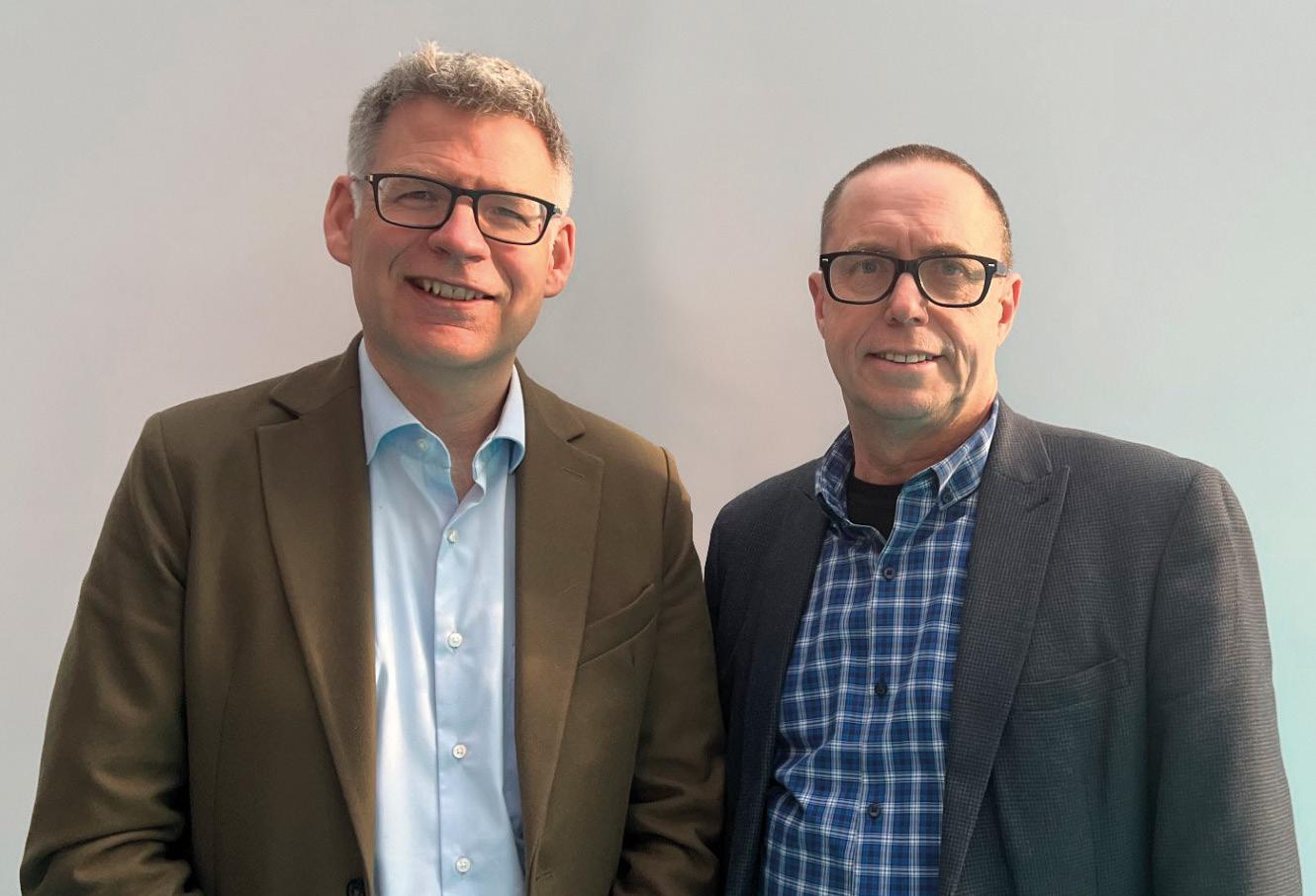
Encouraging sustainable transport and modal shift.
Delivering easier commutes through a single integrated transport system, as outlined in the English Devolution White Paper.
“We believe that digital PAYG technology is the best way for LTAs and UK rail to deliver joined-up, integrated, multimodal PAYG public transport ticketing in sensible timescales within an affordable budget,” said Steve.
“Digital PAYG has a low barrier to entry and can be grown at pace as passengers become confident with the best price guarantee and ease of use. FAIRTIQ helps drive a modal shift towards sustainable public transport options.
“FAIRTIQ is proven in national and large regional (10 million+ populations) multimodal implementations throughout Europe and there are currently more than 1.2 million monthly users. Given the opportunity, we will use our experience to help the UK benefit from the same better passenger experience with greater efficiency for the operators that is being experienced in other countries.”
What’s next for FAIRTIQ – and for the UK?
The FAIRTIQ team is already working on the next frontier: ‘Be-in, Be-out’ ticketing, where even the initial swipe is no longer needed.
“You just travel, and we make sure you’re charged fairly,” said Gian-Mattia. “We’ve had that vision from the beginning and we’re getting closer every day.”
Steve concluded: “This could be the UK’s next big leap in transport innovation. With proven success across Europe, a low-cost model, and the flexibility to handle real-world complexity, FAIRTIQ is ready to help the UK rethink ticketing innovation – from regional trials to national rollouts. All it takes is one swipe.”
fairtiq.com
People don’t travel because they want to buy a ticket –they want to get from A to B. We remove that friction so passengers can simply travel
FAIRTIQ is a mobile ticketing app that replaces traditional ticket buying with one swipe before boarding and another after travel. It automatically tracks your journey, calculates the best fare, and handles transfers, changes, and even missed check-outs. It’s postpaid, paperless, and proven.

From its Coventry base, HPC is rapidly establishing itself as a specialist partner for the UK rail industry, bringing a fresh and innovative approach to train presentation and asset protection.
HPC boasts extensive experience in delivering high-quality cleaning combined with rapid decontamination and sanitisation solutions, honed initially within demanding environments such as the NHS, pharmaceutical companies, and emergency services. Recognising the parallels between these critical sectors and the need for consistently clean and protected rolling stock, HPC adapted its proven system to meet the unique demands of strict railway train presentation requirements.
HPC’s journey into rail began by addressing the preparation and protection of rolling stock entering medium to long-term storage, working alongside train operating and rolling stock leasing companies. This early work laid the foundation for a broader vision, demonstrating the effectiveness of their unique techniques in preserving asset integrity.
Subsequently, HPC partnered with these organisations, delivering comprehensive deep cleaning programmes to meet stringent franchise commitments on a long-term basis. Impressively, entire fleets were deep cleaned and refreshed within tight two-three month timelines, with minimal impact on unit availability or disruption to daily services, effectively re-baselining fleets and setting a new benchmark for cleanliness.

At the heart of HPC’s offering is a commitment to apply new and unique techniques that improve both asset presentation and long-term protection. Its core offering is not just a clean; it’s a comprehensive solution that delivers many benefits in a single application, such as a back-to-new end product, deodorisation and removal of harmful bacteria and pathogens.
This innovative approach augments and, in many cases, supersedes current cleaning processes, raising standards of hygiene, actively protecting valuable assets from degrading, and significantly reducing the time required for effective cleaning.
HPC offers a comprehensive suite of products and services tailored to the diverse needs of the rail industry. These include specialist asset preparation and protection treatments, fully outsourced heavy and periodic deep cleaning programmes, efficient fleet refresh and recovery services, and rapid response specialist spot cleaning to address vandalism, graffiti, infestations, and removal of unpleasant odours.
For train operating companies and rolling stock companies seeking a reliable partner for intensive cleaning schedules, HPC serves as a dedicated outsource provider of periodic deep and heavy cleans, delivering a cost-effective and high-quality solution.
The effects of HPC’s high-quality deep cleaning extend far beyond mere aesthetics. The results optimise fleet refurbishments, ensuring the new
look lasts for longer. Furthermore, it significantly enhances the hand-back condition, maximising asset value at the end of a lease. Crucially, it directly impacts in-service train presentation and the overall passenger experience, fostering a cleaner, more comfortable, and more hygienic environment that builds passenger confidence.
The journey for HPC has not been without hurdles. Transforming a good idea into a viable business requires significant dedication and investment. Introducing genuine innovation to the often traditional UK rail industry presents its own set of challenges, demanding clear communication and demonstrable results to gain traction.
Interestingly, HPC has observed a trend in which customers express interest in acquiring HPC’s system, yet ultimately recognise the benefits of outsourcing the service to the experienced HPC team.
Looking ahead, HPC is firmly focused on continued growth and development within the rail sector by developing innovative approaches tailored to the evolving needs of rail operators. It’s also expanding and growing its outsourced train presentation services.
HPC offers the UK rail industry more than just cleaning; it provides a comprehensive, innovative, and proven approach to asset care and passenger well-being. By embracing HPC’s products and services, the rail industry can elevate standards, protect valuable assets, and deliver a significantly enhanced travel experience for passengers.
www.hygieneproclean.com

The rail industry faces high maintenance and operational costs, but our outputs significantly reduce these expenses and drive efficiency, playing a vital role in delivering value for money.
In 2024-25, we delivered significant savings to the rail industry, such as low adhesion research which aims to reduce annual costs to the industry of £355m.
As rail reform progresses, we will continue to enhance the sharing of operational and engineering data, identifying efficiencies, and uncovering cross-sector opportunities.
Find out what we are doing to drive cost reduction across the rail industry. www.rssb.co.uk/costreduction

Chief Operating Officer Johnny Schute explains how, based on the insights revealed by industry data, his team is continually finding ways that can help rail reduce cost

Rail Safety and Standards Board (RSSB) experts, using their own expertise and also working with others in the industry, are finding that there are many ways that we can help reduce costs in the short term. But there is an eye on long-term risks, too, and making sure our industry’s preparation for them is cost effective.
Many people suggest that turning off diesel engines when trains are in a station will both reduce fuels costs and carbon emissions. However, this may not be as straightforward as it seems, due to potential restart issues and braking system problems. There are other unwanted issues that can be caused by turning an engine off in stations as well, and idling duration also varies by train type and operator. So, although it seems a straightforward issue, it’s actually quite complicated.
However, reducing avoidable idling could save up to £20 million annually in fuel costs. This is a sizeable proposition – around 8.5 per cent of total diesel usage across the entire GB rail network. Reducing avoidable idling improves noise and air quality as well.
A recent project identified ‘avoidable’ engine idling across Great Britain. Working with industry, we’ve developed a Good Practice Guide to help reduce this type of idling. The guide covers general idling issues, and both defines avoidable idling and emphasises the value of data collection to help pinpoint it. Most importantly, it helps individual train operators develop tailored strategies. So, we’re helping individual train operators take action on avoidable idling in the way that is most appropriate for them.
Ensuring the medical fitness of staff is a crucial part of safety management. Failing to identify or assess fitness issues in safety-critical staff increases safety risks and can lead to incidents or accidents. However, applying overly stringent standards may restrict capable workers from safety-critical roles, harming both individuals and companies by losing skilled workers. It could also violate the Equality Act 2010, which carries unlimited financial penalties. Additionally, it may damage the industry’s reputation,
making recruitment challenges more difficult. Responding to industry feedback, we’ve updated our standards and guidance on the medical fitness of safety-critical staff. We’ve incorporated the latest best practices, advances in medical knowledge, examination methods, and legal updates. We’ve combined two standards into one and released new guidance and these tools offer a clearer, more consistent approach to assessing and managing medical fitness. They include best practices to minimise delays due to medical issues, prevent work impairment and ensure the fitness of safety-critical staff. And there are strong financial benefits of this too – we estimate these will amount to £17.8 million over five years.
Monitoring wheelset conditions for freight wagons can lead to significant cost savings, especially with a proactive and predictive approach. The sector uses data from the Wheel Impact Load Detector (WILD) system to find faulty or damaged wheelsets
that pose derailment risks or track damage. Installed on Network Rail infrastructure, the WILD system measures wheelset loads from passing traffic to detect defects.
With our partner the University of Huddersfield, we are developing new ways to analyse this data for better use so that we can detect issues early. Optimising the use of this data will enhance asset availability and reliability. These improvements will enable better monitoring, boosting efficiency and reducing costs by identifying potential safety issues earlier.
The freight sector can also optimise maintenance schedules proactively, which will help improve service reliability and reputation, attracting new and retaining existing customers while contributing to safe growth in freight services.
Overall, this approach supports the freight sector in improving service reliability and efficiency, ultimately benefiting both the operators and their customers.
Safety-related decisions are a vital area where costs need to be evaluated. Costs must be balanced with benefits when making a safety-related decision, otherwise you risk making decisions that use limited resources in ineffective ways. We need to ensure safety as well as good value for money. You need to base your decisions on a robust approach, so that finite budgets are spent wisely.
Several years ago, we launched a cost-benefit analysis (CBA) tool, which provides a formal method to support safety-related decisions, rooted in our Taking Safe Decisions framework. Our CBA tool has already helped the industry understand what is reasonably practicable and avoid unnecessary costs.
However, the underlying technologies and software have developed over this time, so an update is needed. Significantly better usability will help, and will also reduce the costs associated with performing a CBA assessment from scratch. We’re currently converting the old spreadsheet-based tool into a webbased version and are consolidating all necessary guidance into a single document, eliminating the need for users to visit multiple websites to gather all required information. Additionally, the updated tool is being designed to be user-friendly, eliminating the need for expensive training beforehand.
The CBA guidance and tool are central to applying the Taking Safe Decisions framework and principles robustly and consistently, and we’re developing that too. New online training will help our members understand how to apply the framework. Together, these changes will make it more accessible and easier to carry out cost benefit analyses. We look forward to launching the updated CBA tool in summer 2025 and seeing its increased adoption by the industry.
Climate change means that extreme weather is here to stay and will become more frequent. Heavy rainfall can lead to landslips and debris on the line. Blanket speed restrictions have been applied to reduce the risk of derailments, but they can also lead to service disruption, resulting in knock-on safety risks to other services and parts of the network. These can cause additional problems, such as costs resulting from delays, and frustrated passengers and staff. The industry needs a more focused response to maintain safety and deliver a higher performing service.
Proportionate Risk Response to Implementing Mitigating Speed to Assets (PRIMA) is already helping to safely improve performance and reduce costs. We developed and trialled PRIMA, in collaboration with Network Rail, to help route planners decide in advance what speed restrictions should be applied on particular sections of each route when there is heavy rainfall.
When there’s very heavy rain, they can use that plan to target the optimum speed restrictions to the relevant parts of the route, reducing risk and delivering improved performance. The tool has already been trialled in two different Network Rail regions, and we look forward to it being rolled out across the network.
We’re also developing the tool by adding strong winds as an option. This further strengthens rail’s ability to run effective services even during the severe weather caused by climate change, without incurring disproportionate costs arising from unnecessary delays.
Running the railway is never easy, and today’s cost pressures add to the challenge. But our work is constantly focused on helping you save significant amounts of money. We look forward to the whole industry using our tools to save costs.

Reducing avoidable idling could save up to £20 million annually in fuel costs


Three years after ScotRail returned to public ownership, a new report by Steer highlights the train operator’s contribution to supporting jobs, driving regional growth, and making the country’s society and economy greener

ScotRail’s Managing Director Joanne Maguire is full of optimism for the train operator and the impact it can have as it enters the fourth year since returning to public ownership.
“As we enter the fourth year of ScotRail’s return to public ownership, the track record of delivery is clear – higher passenger numbers, growing revenue, and strong customer satisfaction,” said Joanne, who has recently celebrated one year in the post.
“Our impact is felt not just by the hundreds of thousands of customers who travel on ScotRail trains every day. We know that our reach and support goes beyond that, into communities the length and breadth of the country.”
Joanne’s enthusiasm is backed by a recent report by transport and infrastructure consultancy Steer, which has revealed ScotRail’s £4 billion contribution to Scotland’s economy, supporting jobs, driving growth and making the country’s society and economy greener.
It found the train operator has a total economic impact of more than £4 billion, supporting 11,300 jobs


both directly and indirectly. In addition, passengers using ScotRail services supported the country’s tourism, leisure, and hospitality sectors by spending around £567 million as a part of their journeys.
From an environmental point of view, it is estimated that more than one billion car kilometres are avoided by passengers using ScotRail services, avoiding the equivalent of more than 120,000 tonnes of roadrelated carbon emissions per year.
“As set out in this independent report by Steer, ScotRail’s contribution to the whole of Scotland is substantial,” she added. “We connect communities, reduce congestion on roads, and promote regional development. This creates jobs, delivers environmental benefits, and supports Scotland’s tourism, leisure and hospitality sectors.”
ScotRail’s network stretches across approximately 2,800km of track and serves 364 stations, with figures last year showing it employed 5,770 members of staff and using 914 different suppliers, and spending £189.2 million on its supply chain. Data from the Office of Rail and Road showed that between April 2023 and March 2024 more than 81 million
journeys were made using the operator’s services, a 27 per cent increase on the previous year’s total.
Joanne added: “The Scottish Government’s investment in ScotRail and the wider rail industry –including investment in Network Rail infrastructure – has delivered a strong return on this investment through much greater benefits to communities across Scotland, linking cities and towns, providing an essential means of transport for businesses and individuals.
“Key to these contributions are our staff. We have a dedicated and highly skilled workforce that deliver for our customers every day. The work they do not only supports customers, it drives revenue and delivers more reliable services, all contributing to Scotland’s economy.
“The aim of the report is to help our colleagues, customers, and stakeholders understand that the railway in Scotland is so much more than a means of getting from A to B. We can make a difference to the economic and social success of the country. That’s why we are relentlessly focused on delivering a safe, reliable, and green railway.”



For over 50 years, Jones Nuttall Ltd, based in Warrington, Cheshire, has been at the forefront of precision engineering, specialising in rail overhaul, refurbishment, CNC machining, and fabrication. Our extensive experience and customer-focused approach have allowed us to forge long-standing partnerships with some of the UK’s largest rail operators, including Metrolink, part of the iconic yellow Bee Network.


As the Bee Network continues to grow, Metrolink has ambitious plans to expand its tram network over the next 10 years, providing even more seamless connectivity across Greater Manchester. Jones Nuttall is proud to play a pivotal role in this expansion, contributing our engineering expertise to ensure the reliability and safety of the system as it evolves.
Our partnership with Metrolink is built on trust, reliability, and innovation. By supplying precision-engineered rail components, we play a crucial role in maintaining and upgrading their tram network. One of the standout projects has been the refurbishment and moderniation of Metrolink’s electro-magnetic track brake systems—essential emergency braking systems that provide additional stopping power in critical situations. These systems are vital for the safe and efficient operation of trams, activating during emergencies to deliver fast, reliable braking independent of the vehicle’s primary brake system. Our engineering expertise allows us to breathe new life into aging parts, offering cost-effective solutions to replace discontinued components without compromising performance, ensuring these systems remain reliable and effective for years to come.
At Jones Nuttall, we maintain full control over production through our comprehensive in-house machining capabilities. Whether it’s producing aluminum rubbing plates or other critical components on our CNC milling machines, we ensure every part meets the highest precision and quality standards demanded by the rail industry.


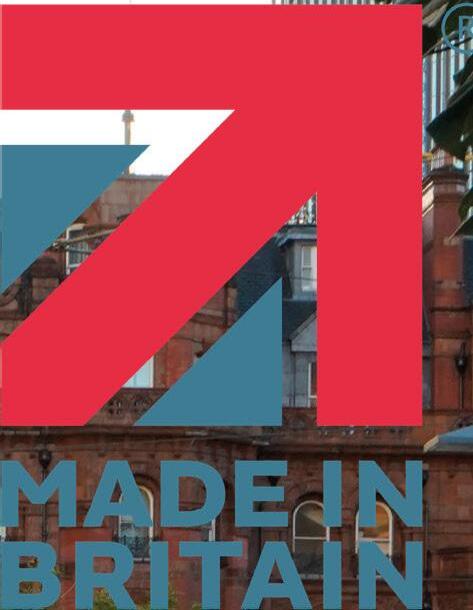
Beyond component manufacturing, we specialise in refurbishment and modifications. Our work on electro-magnetic track brake systems is a prime example of how we help our clients maintain safety and operational efficiency. By refurbishing these emergency braking systems, we ensure trams are equipped to handle critical braking situations, significantly enhancing both safety and reliabilitity while minimising downtime and operational costs. As a company, we are dedicated to advancing the rail industry by investing in the latest technology, skilled engineering talent, and innovative processes. This commitment enables us to meet the evolving needs of the sector, delivering high-quality solutions on time and within budget.
With Metrolink’s future expansion plans on the horizon, Jones Nuttall is excited to continue our partnership, providing the precision engineering expertise necessary to support the modernization and growth of the Bee Network. Our focus on precision engineering, innovation, and customer satisfaction makes us the ideal partner for rail operators seeking to enhance performance, safety, and longevity in their fleets.





Jo Lawrence, Joint Chief Executive Offi cer (CEO) at the Occupational Psychology Centre (OPC), shares how tailored recruitment solutions and data-driven validation could help strengthen the pipeline for safe, skilled train driver talent
ith an estimated 20 per cent of the UK’s train driver workforce nearing retirement and an 18 month training pipeline that can’t be sped up overnight, rail operators face mounting pressure to secure the next generation of safe, reliable drivers.
With the need to also attract a more diverse expert driving team, the challenge becomes clear. So, how can we streamline recruitment and harness data-driven selection to achieve safety, diversity, and exceptional candidate care at scale?
For more than three decades, the OPC has partnered with UK and international rail organisations to help solve these kinds of challenges. Its expertise lies in designing people processes that are robust, candidate-friendly and tailored to each organisation’s culture and safety imperatives. Whether clients need a full Bureau Service, from online applications, assessment centres and shortlisting, or targeted support such as bespoke tests, the OPC adapts to your objectives, timeline and candidate scale.
A blueprint from the start
The OPC begins with detailed job analysis involving job experts such as driver managers and/or assessors to define the precise Non-Technical Skills (NTS) vital for success. These insights become the blueprint for every element of the selection process and assessment tool matrix.
The recruitment journey can be very daunting, especially for neurodivergent applicants. OPC research highlights that practice materials can significantly help reduce candidates’ anxiety, enabling them to do their best. Its British Psychological Society registered assessors guide every candidate, offering clear instructions, reassurance and prompt feedback. Over 90 per cent of applicants rate our assessment services as “excellent.”
“The talent assessors and interviewer were absolutely incredible – professional, helpful, kind and patient.” Traindriverapplicant
OPC assessment has a wide-range of off-the-shelf psychometric tests, including the leading Safe Concentration and Attention Test (SCAAT). It

also designs bespoke assessment tools, tailored pre-selection questionnaires and Situational Judgment Tests (SJTs) built around real rail scenarios, helping identify the best candidate fit. In one six-week project, we screened more than 3,000 applicants quickly using a custom online preassessment tool, providing a shortlist closely aligned to the client’s safety and performance standards.
Six pillars of outstanding drivers
Through research with multiple train operator job experts, the OPC identified six cornerstone behaviours that distinguish outstanding train drivers, including integrity, team-work and conscientiousness.
Our Outstanding Train Driver Personality Questionnaire (OTDPQ) and Magnificent Seven Situational Judgment Test (M7SJT) help assess these cornerstone behaviours.
Flexible delivery, nationwide reach
The OPC’s Watford Assessment Centre, 20 miles from London, offers an immediate venue. We also deliver ‘pop-up’ services anywhere in the UK and overseas. Our bureau services can provide end-to-end recruitment management or we can plug-in specific support, providing resource, efficiencies or expertise at key points. The OPC and its assessors are Office of Rail and Road (ORR) registered, and a member of the Rail Assessment Centre Forum (RACF).
“We’ve worked with the OPC for years on
train driver assessments. Their expert talent assessors provide a professional, flexible service and prioritise excellent candidate experience with clear communication throughout.” Head of Talent Acquisition
The OPC’s expert psychologists apply statistical and evidence-based principles to evaluate if selection processes are effective. Validation studies compare selection test scores with on-the-job and training performance, to confirm that each assessment, and the overall process, accurately measures and predicts the NTS critical for safe, reliable operations.
Jo Lawrence said: “Undertaking rigorous evaluations helps improve selection accuracy, enhancing future job and safety performance potential. The OPC helps train operators identify and select the very best individuals from vast pools of applicants. We are committed to supporting the industry develop and deliver fair, research-backed, recruitment that drives us forward.”
Addressing the train driver shortfall is a continuous strategic priority, not a one-off project. If you’re planning trainee train driver recruitment or would like to validate your current selection process, then contact the OPC team today.
admin@theopc.co.uk www.theopc.co.uk
01923 234646







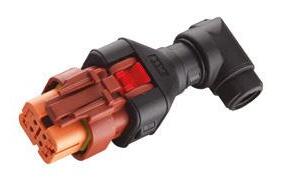















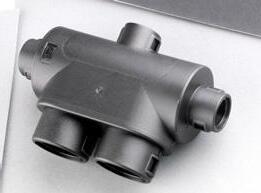







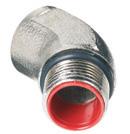

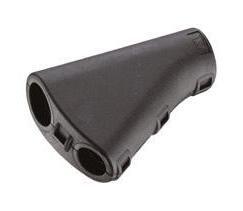















































Robust protection for electrical networks and devices.
Helping to maintain service uptime across a variety of critical rail applications.
ABB’s Installation Products Division has a long legacy of providing quality products and innovative solutions. From safeguarding critical infrastructure on Earth to cable ties that help put machines in space, we continue to deliver solutions that provide a smarter, safer and more reliable flow of electricity from source to socket.
The Transport Benevolent Fund CIO (TBF) continues to support public transport workers through diffi cult times. Chief Executive Offi cer (CEO) John Sheehy discusses the importance of becoming a member
When John Sheehy hears the impact of the grants and support The Transport Benevolent Fund CIO (TBF) offers, it really hits home how important the charity’s work is. For more than a century, it has supported people in the public transport industry during times of need, hardship, and distress, offering financial and medical benefits, a wide range of complementary and alternative therapies, bereavement grants and welfare advice.
“We all like to hope we never have to call on TBF, but it can make a big difference if you do wake up one day and find yourself in need of help,” explained the charity’s CEO John. “More and more people are struggling, and no matter how much you’re paid, most people live to their means, so if the unexpected does happen you can quite quickly fall into hardship.”
Anyone who works in the public transport industry in Great Britain may join TBF and be eligible for help. For just £1.25 a week, the charity offers a wide range of financial, health and welfare benefits to the member, their live-in partner and dependent children. There are currently more than 64,000 contributing members.
“It is getting tougher and tougher for people, and it isn’t until someone falls into hardship that they realise how little help there is out there from the State and the difference being a member of TBF can make,” said John, a former London Underground driver.
“Recently, we gave a grant to a parent whose baby was in hospital for major heart surgery to help cover hotel costs for a few days so they could be near their partner and child. We also offer convalescence to someone who has witnessed a fatality on the railway while driving a train, funding a trip for the family to help them on the road to recovery.
“It really warms my heart when you hear about the impact we’re making. It is nice to know we’re making a positive difference to people’s lives.”
TBF was founded in 1923 by the predecessors of Transport for London to relieve cases of necessity among its members and to meet their needs for convalescence or surgical equipment.
The needs of staff today might take a very different form, but there is still need, hardship and distress among those who work in the public transport industry (or are retired from it) and TBF is still there to help when things are not going so well. Where staff have contributed for long enough, they gain

We all like to hope we never have to call on TBF, but it can make a big difference if you do wake up one day and find yourself in need of help
free membership in retirement.
John, who has been CEO for nine years, said: “Membership is growing well again, following a slight fall during and immediately after the Covid pandemic, and our aims are to continue to help and support as many people as possible in the public transport industry. The more members we have, the more people we can help.
“You could be a very fit and healthy person working in the railway industry, but you might have a live-in partner or a young dependent who has a health issue, and we might be able to help them.”
In addition to increasing membership, John is on the lookout for trustees who control the charity and are responsible for the safe custody of the fund and its proper use to help beneficiaries. John urges organisations in the rail industry to encourage their colleagues to become TBF members. Some employers have agreed to employer-paid membership as a company benefit, because they see it as an affordable benefit that shows they have the welfare of their staff at heart.
“Our work doesn’t just help the individual member but organisations in the rail industry as well because what we offer may keep their employee fit and healthy, so helping to get them back to work quicker,” explained John. “We may also be able to prevent them from taking time off sick, which can only be good for the employer and the individual.”
In the third quarter of 2024/25, TBF awarded £745k of direct benefits to its beneficiaries, and it is predicted that during the 2025/26 financial year, awards will be in excess of £3 million.
TBF is proud to have been chosen as one of the charity partners for Railway 200.
Thanks to TBF’s online services, joining TBF is now even easier. You can visit www.tbf.org.uk or scan the QR code.


Elaine Clark OBE looks ahead to next month’s Rail Safety Week and explains the importance of the industry coming together when it comes to keeping colleagues, passengers and communities safe


Leading an initiative that promotes rail safety and strengthens collaboration is deeply meaningful to Elaine Clark OBE, Chief Executive Officer at Rail Forum. That is why the organisation adopted Rail Safety Week (RSW) in 2023 and is committed to seeing it go from strength to strength.
“RSW serves as a powerful reminder of our shared responsibility to ensure that everyone – rail workers, passengers, and the public – gets home safely every day,” explained Elaine, the initiative’s Industry Lead.
RSW aims to bring rail safety to the forefront of people’s minds across a dedicated week; keeping safety firmly in the spotlight and sharing ideas and best practice across industry colleagues. More than 200 organisations were engaged last year from those involved in the industry, communities and schools.
“Last year’s campaign was a resounding success, and it was truly inspiring to see such widespread engagement, as organisations across the rail sector and beyond brought safety to the forefront,” said
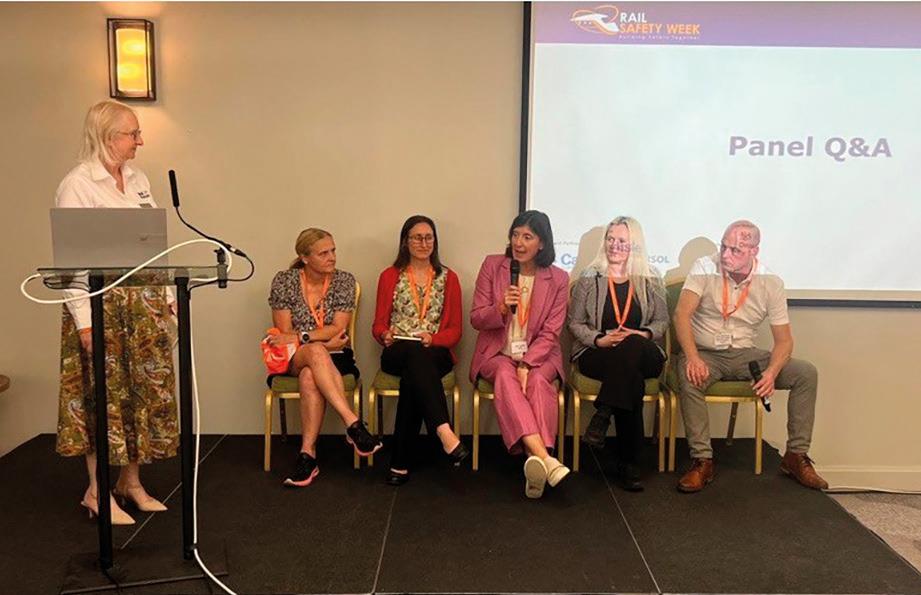

Elaine. “From schools and communities to workplaces and industry partners, the collective effort made a real impact and we are excited to build on this momentum and make Rail Safety Week 2025 the most impactful yet.”
There is an added sense of significance for this year’s event, running from Monday, 16 to Sunday 22 June, with it being the 200th anniversary of Britain’s railways – a historic milestone that highlights just how far the industry has come.
“It’s a powerful opportunity to not only celebrate our heritage but also to reinforce our commitment to a safe and sustainable future,” added Elaine.
This year also marks the 10th anniversary of RSW, with Founder Alan Tarrant sharing how inspiring it is when reflecting on how far the event has come and “the incredible momentum” that has been built together as an industry.
“I’m immensely proud of what we’ve achieved over the past decade,” he said. “From our humble beginnings with just 30 organisations taking part, we’ve grown to a powerful community of more than
240 organisations actively supporting not just RSW, but safety-related initiatives throughout the year.
“With Rail Forum now leading the charge, our collective commitment to safety has never been stronger. ‘Building Safety Together’ remains at the heart of everything we do. It’s more than a message –it’s a shared responsibility. By working collaboratively, we help ensure that everyone stays safe on and around the rail network, every single day.”
This year’s event will be a dynamic week of events, education, and collaboration full of activities and events by organisations from across the industry (and beyond), with the organisers urging everyone to get involved.
“What you do for RSW is entirely up to you, from launching a new initiative, to conducting toolbox talks, running webinars, or a social media campaign on what safety means to your workforce… the possibilities are truly endless,” said Elaine.
“Rail Forum will be doing our bit – we will be capturing all the event’s activities and updating the RSW website to showcase what’s on. We will also
Transport
be resharing and engaging with your social media posts via our Rail Safety Week channels so don’t forget to tag us and use the hashtags #RSW25 and #BuildingSafetyTogether.”
In addition, the RSW Conference will be taking place during Rail Live at Porterbrook’s Long Marston Rail Innovation Centre on June 18 and 19. It is free to attend, featuring two days of high-impact sessions getting under way at 10.30am each day.
Day one will see a morning session on workforce safety with a specific spotlight on people/plant interface and interactions. Speakers will include UK Materials Handling Association, Finning UK, Story Plant, and Railway Mission. The afternoon session will then focus on occupational and mental health, with speakers including Office of Rail and Road (ORR), RSSB and more.
On day two, the focus will turn to safety in relation to passengers and the wider community. The morning will feature a keynote address from Richard Hines, HM Chief Inspector of Railways / Director of Railway Safety at ORR, as well as presentations from Campaign for Better Transport, Network Rail, and Community Rail Network.
The RSW Conference is free to attend and delegates simply need to register for Rail Live and visit Zone W to listen and engage. Learn more here: https://www.railforum.uk/events/rswconference-2025/
Promoting a world of opportunity accessible to all.
Elaine concluded: “RSW is more than an event – it’s a dedicated week for the rail industry to reinforce the
importance of health and safety. By getting involved, you’re helping prevent accidents, sharing best practice, and inspiring others to prioritise safety. Your participation, whether through a safety campaign, event, or conference attendance, amplifies our collective message that safety is everyone’s responsibility.
Menu
“It’s also never too early to start building safety together, and we encourage industry colleagues to share our 2025 Children’s Competitions (launching soon) with their local schools.
“The competitions aim to serve as a basic platform for parents, guardians and teachers to start conversations with young people as to the importance of safety on and around the railway.
“Safety is a daily priority, but RSW creates a unique moment for the industry to unite, reflect, and innovate. This dedicated week elevates safety from routine to spotlight, fostering collaboration across operators, suppliers, and communities.
“By coming together, we share cutting-edge solutions and this collective focus not only prevents incidents but also reinforces our industry’s commitment to zero fatalities.”
Visit www.railsafetyweek.org for more details. You can submit your event(s) or activities via the online form on the What’s On 2025 page of the website. Useful resources can also be accessed in the Resources area of the site, including customisable branded materials (posters, social media graphics, email banners and more).
Consultancy Ltd (GCL) are working across the Rail Industry to hardwire access and inclusion project management and delivery.
Consultancy Ltd (GCL) are working across the Rail Industry to hardwire access and inclusion project management and delivery.
Goss Consultancy Ltd (GCL) are working across the Rail Industry to hardwire access and inclusion into project management and delivery.
Promoting a world of opportunity accessible to all.
services include:
services include:
Goss Consultancy Ltd (GCL) are working across the Rail Industry to hardwire access and inclusion into project management and delivery.
Consultancy Ltd (GCL) are working across the Rail Industry to hardwire access and inclusion project management and delivery.
Our services include:
Access and Inclusive Design Appraisals
Access and Inclusive Design Appraisals
Goss Consultancy Ltd (GCL) are working across the Rail Industry to hardwire access and inclusion into project management and delivery.
Access and Inclusive Design Training
Access and Inclusive Design Training
Access and Inclusive Design Appraisals
Our services include:
Access and Inclusion Project Management Support
Access and Inclusion Project Management Support
Access and Inclusive Design Training
services include:
Goss Consultancy Ltd (GCL) are working across the Rail Industry to hardwire access and inclusion into project management and delivery.
Access and Inclusion Strategy Reviews
Access and Inclusion Strategy Reviews
Access and Inclusion Project Management Support
Our services include:
Access and Inclusive Design Appraisals
Access Audits/Reviews
Access Audits/Reviews
Access and Inclusive Design Appraisals
Access and Inclusion Strategy Reviews
Our services include:
Access and Inclusive Design Training
Access and Inclusive Design Appraisals
Access Audits/Reviews
Access and Inclusive Design Training
Access and Inclusion Project Management Support
Digital Accessibility Reviews
Access and Inclusion Project Management Support
Accessibility Reviews
• Access and Inclusive Design Appraisals
Access and Inclusive Design Training
Digital Accessibility Reviews
Access and Inclusion Strategy Reviews
Access and Inclusion Project Management Support
• Access and Inclusive Design Training
Diversity/Equality Impact
Diversity/Equality Impact Assessment Training and Development
Access and Inclusion Strategy Reviews
Access Audits/Reviews
Access Audits/Reviews
Equality, Diversity and Inclusion Audits/Reviews
• Access and Inclusion Project Management Support
Access and Inclusion Strategy Reviews
Diversity/Equality Impact Assessment Training and Development
Access Audits/Reviews
Digital Accessibility Reviews
Equality, Diversity and Inclusion Audits/Reviews
Digital Accessibility Reviews
• Access and Inclusion Strategy Reviews
Inclusive Customer Service Training
Digital Accessibility Reviews
Diversity/Equality Impact Assessment Training and Development
Inclusive Customer Service Training
• Access Audits/Reviews
Diversity/Equality Impact Assessment Training and Development
Policy/Practice Development
Equality, Diversity and Inclusion Audits/Reviews
Diversity/Equality Impact Assessment Training and Development
Equality, Diversity and Inclusion Audits/Reviews
Policy/Practice Development
• Digital Accessibility Reviews
Equality, Diversity and Inclusion Audits/Reviews
Inclusive Customer Service Training
Inclusive Customer Service Training
Stakeholder Engagement
Stakeholder Engagement
Policy/Practice Development
Inclusive Customer Service Training
• Diversity/Equality Impact Assessment Training and Development
Policy/Practice Development
• Equality, Diversity and Inclusion Audits/Reviews
Policy/Practice Development
Stakeholder Engagement
Stakeholder Engagement
supporting the transport sector to future-proof the Rail Industry, for all.
• Inclusive Customer Service Training
Stakeholder Engagement
We are supporting the transport sector to future-proof the Rail Industry, for all.
• Policy/Practice Development
are supporting the transport sector to future-proof the Rail Industry, for all.
We are supporting the transport sector to future-proof the Rail Industry, for all.
• Stakeholder Engagement
We are supporting the transport sector to future-proof the Rail Industry, for all.
Our clients
We are supporting the transport sector to future-proof the Rail Industry, for all.
Our clients
Our clients
Clients include:


MyPeople’s Safety Profiling product suite is providing a human lens to the complex challenges of rail safety. Christian Hughes, Chief Executive Officer (CEO) explains more

Christian Hughes, CEO of behavioural talent intelligence company MyPeople, is no stranger to high-performance environments. A former sports psychologist, Christian spent years working with elite teams and athletes to unlock peak performance — not through technical drills alone, but by understanding the underlying mindsets, behaviours, and team dynamics that drive success.
Now, that same approach is helping to reshape safety cultures across the UK rail industry.
MyPeople’s new Safety Profiling product suite brings a human lens to the complex challenge of rail safety — helping organisations understand not just the processes in place but the people and behaviours behind them.
“Rules and processes are only as good as the people who follow them,” said Christian. “Behavioural safety is about ensuring people have the mindset, communication skills, and awareness to make safety second nature.”
From elite sports to high-risk environments
The roots of MyPeople lie in elite sport, where performance under pressure can mean the difference
between winning and losing — and where team chemistry, trust, and communication are rigorously measured and optimised.
Christian and his team originally built their platform to help sports teams measure psychological safety, cohesion, and behavioural alignment. The tool helped identify what made high-performing teams tick — and what held others back. That same technology is now being applied in a very different but equally high-stakes environment: rail.
“In sports, we obsess over marginal gains — the tiny behavioural differences that separate champions from the rest. In rail, those same marginal gains in behaviour can be the difference between a safe site and a serious incident,” Christian explained.
It’s that performance-first mindset — combined with data-driven behavioural science — that MyPeople brings to the table. And it’s resonating across the industry.
Behavioural safety: A rising focus in rail MyPeople’s CEO added that ‘behavioural safety’ is becoming a key focus for the rail industry. At its heart are ‘safety behaviours’ – the attitudes, actions and practices that help to maintain a safe working environment, minimising accidents or injuries.
“Over the last year, a range of rail industry clients asked us to develop tools around behavioural safety,” explained Christian. “They wanted to identify the safety behaviours that played a key role in their businesses, using this information to shape their recruitment and training programmes.”
That demand led to in-depth research. As the team looked back at 30 years of recorded rail accidents, two dominant themes emerged: behaviour and communication.
They spoke with rail organisations and found that while safety protocols were typically well-established, there was often little insight into how employees actually behaved and interacted on site. Most had some kind of behavioural safety programme, but lacked the data to back it up.
Matthew Leavis, Group Training Director at Morson Group, explained why he and his team were keen to focus on behavioural safety. He told MyPeople:
“It has the single biggest impact on reducing incidents and near misses. As one of the UK’s biggest training providers for rail, utilities and infrastructure sectors, we know that health and safety risk is not a competence issue; it’s a behavioural issue.
“Rail infrastructure personnel and workers in
other hazardous sectors are rigorously trained to carry out tasks correctly and to follow detailed safety procedures, but behavioural safety is not a process; it’s a culture.”
A new suite of safety profiling tools
That research led directly to the development of a suite of three integrated safety profiling tools, designed specifically for the rail sector.
The first, Safety Culture Evaluation, helps organisations assess their current safety culture by measuring behavioural alignment across leadership, teams, and on-site environments. It provides a clear view of how safety is perceived and prioritised at every level of the business.
Second is Behavioural Hiring Profiles, which assess candidates’ behavioural traits to identify how well they align with the organisation’s safety expectations. This helps hiring managers make more informed decisions and ensures new recruits are behaviourally compatible with existing teams.
Gary Smithson, Rail Director at Morson Group, shared how his organisation is already using this tool:
“MyPeople’s tools help the Morson team to enhance decision making and improve hiring decisions based on an objective appraisal of the candidate’s attitude and aptitude. So, in roles where good safety behaviours are critical, we are able to utilise MyPeople to select candidates who are more likely to consistently adopt good safety behaviours on site and align with the employer’s safety culture and goals.”
Finally, Training and Development Insights highlight the specific behaviours that individuals and teams may need to develop further. These insights help guide learning programmes that go beyond technical skills, focusing instead on areas like communication, risk perception, and personal responsibility.
Each product is fast, evidence-based, and simple to use — offering a clear, cohesive strategy for shaping and strengthening behavioural safety practices.
Christian explained: “These three products have been designed to complement each other – and our clients are using them as part of a fully integrated behavioural safety strategy. With the help of our tools, they can blueprint their organisations, improve their approach to hiring, and train and develop their teams more effectively.”
Blueprinting behaviour across the business
As part of the organisational assessment process, employees are asked to complete what MyPeople calls a ‘blueprint evaluation’. The evaluation, which takes less than ten minutes to complete, feeds into a powerful organisational behavioural blueprint. This can reveal risk-prone teams, leadership blind spots, or misalignments between formal safety policies and everyday behaviours.
“This isn’t a test – rather, it’s a questionnaire on their preferences, biases, personalities, and ways of operating,” Christian said. “We can then aggregate the data we collect, using it to create an organisational blueprint. Are there any ‘outlier’ teams with risk-taking tendencies? Which safety
behaviours are the leadership team prioritising, and is this reflected in the broader safety programme? This exercise builds a picture of an organisation’s safety culture, which can then be fostered and improved.”
A condensed version of the evaluation is used to create a behavioural benchmark, against which new hires can be evaluated. Candidates are asked to complete a six-to-eight-minute questionnaire, which provides insight into their own safety behaviours. Hiring organisations can use this information to establish how well they would fit into existing teams.
Christian explained: “Factors like personality, values, and behaviour are taken into account. What might the individual bring to the business? Would they benefit from training and development in certain areas? It’s a more balanced, evidenced-based approach, helping to ensure new hires are the right fit from a safety perspective.”
This provides benefits for candidates, too, who gain deeper insights about the kind of behavioural culture they’re stepping into and whether it might be the right fit for them.
behavioural gaps With support from Network Rail, City & Guilds, and Morson Group, MyPeople developed a training solution that moves beyond compliance to focus on behavioural development. The programme builds shared understanding around behavioural expectations, especially vital on large, multiorganisation sites, and highlights the training and development courses required for individuals and teams.
“We’re helping people move beyond skills-based training to behavioural alignment,” says Christian. “That’s where the biggest gains — and the greatest safety outcomes — really lie.”
The benefits of a behavioural safety approach
“Behavioural safety is an industry-wide issue, and we haven’t developed these products in isolation,” Christian added. “A range of rail organisations supported us through our pilot phase, which involved research into the attitudes and approaches of around 150 controllers of site safety. Our findings enabled us to develop an eight-factor model of safety behaviour, covering everything from communication and rule adherence to personal responsibility.
“When I worked as a sports psychologist, we designed training and communication plans around such models. Now, we’re keen to do the same in rail – an industry whose training programmes so often focus on skills rather than behaviours.”
Guy Wilmshurst-Smith, Director of GWS Consulting and formerly Head of Network Rail Training, agrees that this behavioural approach could affect real change:
“MyPeople have developed a really impressive, simple-to-use method for assessing safety culture. After just a few minutes on a smartphone, rail leaders can glean where their likely behavioural risks are. It’s a game changer!”

Behavioural safety is about ensuring people have the mindset, communication skills, and awareness to make safety second nature
Driving a culture of continuous improvement
Christian and his team believe the benefits of this approach are clear. Organisations gain an invaluable insight into their behavioural risk levels. They can then deliver training that creates a shared understanding of required safety behaviours – and in turn, a safer workforce.
Candidates gain a clearer understanding of how they will be expected to operate and which personal biases or tendencies they may need to be mindful of. On site, this behavioural data can be used to guide timely targeted interventions and elevate the impact of safety briefings.
“MyPeople is just one technology platform.” Christian concluded, “but we’re here to drive change across the whole rail industry, shining a light on the issue of behavioural safety.
“In sport, continuous improvement is the norm. We measure what matters. We coach behaviours, not just skills. Rail can take that same approach — and transform safety in the process.”
www.mypeoplegroup.com/
First UK train operator goes live and praises collaborative rollout as game-changing
The first train operating company (TOC) in the UK to go live with a new software system fit for the future has welcomed the potential to shape its evolution as “incredibly exciting”.
Multiple Train Operator of the Year winner Greater Anglia, which began a digital transformation across its fleet and planning departments in March, is already seeing tangible benefits.
The operator, which has more than 3,000 employees running 1,300 train services a day through 134 stations, is working closely with Worldline on the rollout.
The collaborative partnership has most recently seen Worldline’s new Integrale Plan system replace VoyagerPlan at Greater Anglia. Worldline has launched Integrale Plan as the next generation of its VoyagerPlan product, in use currently by most UK operators, with Greater Anglia the first of many to make the transition to the modern replacement.
Greater Anglia, with intercity, commuter, and rural services in Essex, Suffolk, Norfolk, Cambridgeshire, and Hertfordshire, also mirrors Irish Rail in taking the Integrale Control system for on-the-day management. This replaced the existing Worldline Genius software late last year.
The TOC’s Lead Train Planner Lee Watts says the switch from the VoyagerPlan resourcing system to Integrale Plan has been seamless for the 20 planners working on long-term permanent and short-term timetabling amendments.
“The data migration from VoyagerPlan to Integrale Plan is straightforward and the two systems, although different, share features which help our planners in their work,” said Lee.
Integrale Plan has been designed to permit operators to create better train plans more quickly by adding automation to replace manual tasks, introducing a higher level of data quality with greater integration and an enhanced ability to visualise in-flight plans as work evolves. A strong rule-based engine means that diagrams needing attention are highlighted to users, removing the need for manual checks to ensure data compliance.
The system forms part of Worldline’s new Integrale

product portfolio, a suite of applications designed to produce and deliver higher quality train plans, bringing benefits to operators and the wider travelling public.
Feedback frames the changes
Lee explained that a key element of continuing with Worldline was the UK and global business’ plans to expand and develop the system further, with feedback from his TOC project leads at the heart of future changes.
“Being at the forefront of a new software application implementation is exciting because we are getting to shape the evolution of Integrale Plan from its infancy,” he said. “It has proven to be intuitive to use and very well received by our train planners.
“We appreciate the open and constructive working relationship between the Worldline team and ourselves in terms of the collaborative approach they take to the application development and improvement.”
The East of England operator, which also runs Stansted Airport Express, has been delighted at how Worldline’s developers have listened to suggestions to enhance the product. Continual improvement is a key
tenet of Worldline’s product approach, which means the benefits delivered to Greater Anglia will then be available to all other customers migrating to Integrale Plan.
“We’ve seen huge progress in the development of Integrale Plan since we first started working with them, with most of our observations making their way into the application,” added Lee.
Constant communication was key to the development of Greater Anglia’s Control and Plan rollouts, with regular project manager, owner and app developer meetings ensuring any issues have been resolved by the right people.
Worldline’s communications and train the trainer approach were also popular with Greater Anglia staff who then walked planners and other users through the process and benefits of the suite.
Lee added: “We are leading the way as the first UK TOC to go live with Integrale Plan. It’s a huge achievement for a TOC where the project management role was undertaken by train planners and backed up by our IT applications manager. Being at the forefront of its implementation is incredibly exciting.”
www.worldline.com


EiB’s team of over 45 bid consultants provide bid strategy, management and writing. In the rail sector, over the past five years, we have secured £20bn in partnership with our clients with a win rate of 80%+.
EiB’s team of over 45 bid consultants provide bid strategy, management and writing. In the rail sector, over the past five years, we have secured £20bn in partnership with our clients with a win rate of 80%+.
EiB’s team of over 45 bid consultants provide bid strategy, management and writing. In the rail sector, over the past five years, we have secured £20bn in partnership with our clients with a win rate of 80%+.
EiB’s team of over 45 bid consultants provide bid strategy, management and writing. In the rail sector, over the past five years, we have secured £20bn in partnership with our clients with a win rate of 80%+. Light Rail & Metro



International projects in:
International projects in:


International projects in:
International projects in:

• Austria
• Austria
• Austria


• Austria
• Canada


• Canada
• Canada
• Canada
• Denmark
• Denmark
• Denmark


• Denmark
• Estonia


• Estonia
• Estonia
• Estonia
• France

• Spain
• Spain

• France
• France

• France
• Spain

• Spain
• Switzerland
• Switzerland
• Switzerland




• Switzerland













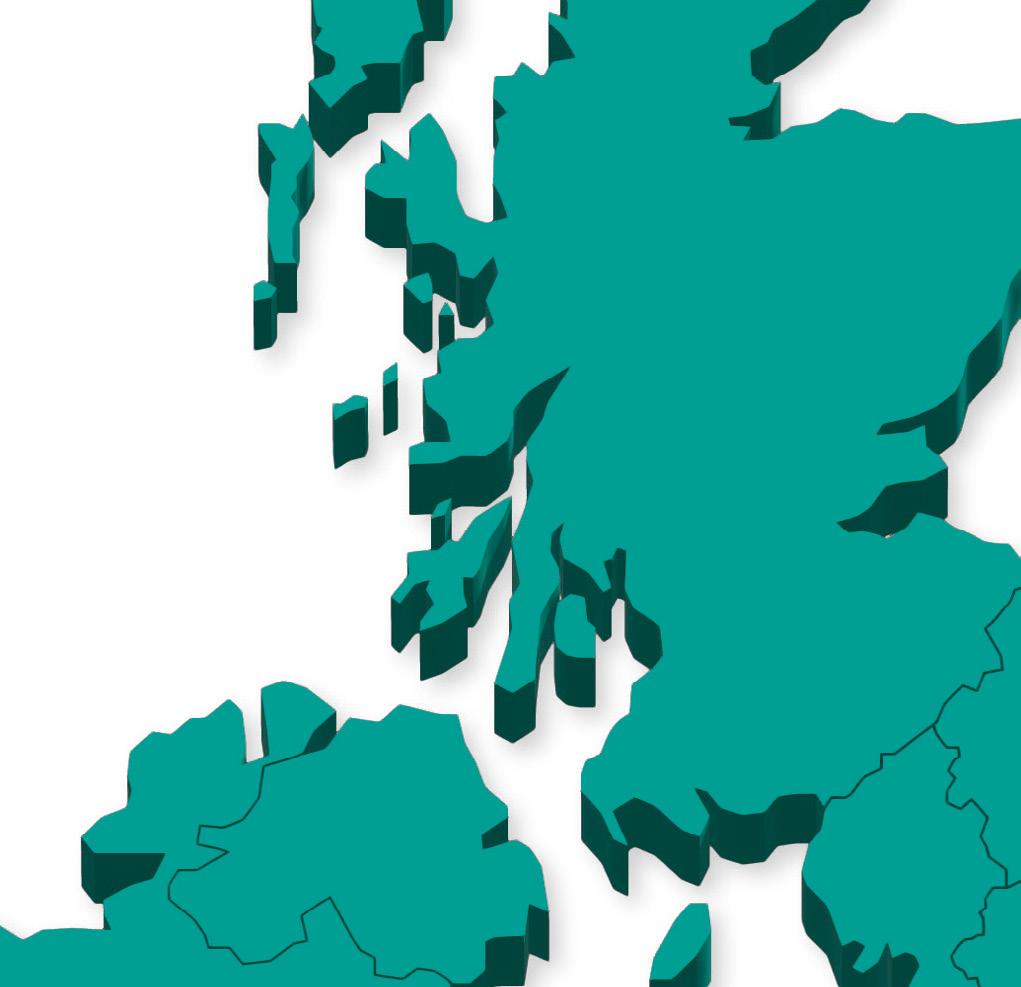













Major wins include:
Major wins include:

Light Rail & Metro
Light Rail & Metro











Major wins include:
Major wins include:





















• Scotland & Northern Ireland: Scotland’s Railway CP7 packages, Clyde Metro, Edinburgh Trams
• Scotland & Northern Ireland: Scotland’s Railway CP7 packages, Clyde Metro, Edinburgh Trams
• Scotland & Northern Ireland: Scotland’s Railway CP7 packages, Clyde Metro, Edinburgh Trams
• Scotland & Northern Ireland: Scotland’s Railway CP7 packages, Clyde Metro, Edinburgh Trams
• England & Wales: Rail Systems Alliance Contracts CP5 - CP7, Nexus, Switches & Crossings CP6 - CP7, Wales & Borders
• England & Wales: Rail Systems Alliance Contracts CP5 - CP7, Nexus, Switches & Crossings CP6 - CP7, Wales & Borders
• England & Wales: Rail Systems Alliance Contracts CP5 - CP7, Nexus, Switches & Crossings CP6 - CP7, Wales & Borders
• England & Wales: Rail Systems Alliance Contracts CP5 - CP7, Nexus, Switches & Crossings CP6 - CP7, Wales & Borders
• London: Euston Station, Docklands Light Railway, Elephant & Castle Station
• London: Euston Station, Docklands Light Railway, Elephant & Castle Station
• London: Euston Station, Docklands Light Railway, Elephant & Castle Station
• London: Euston Station, Docklands Light Railway, Elephant & Castle Station


• Republic of Ireland: NTA Next Generation Ticketing, Dublin Metro, Irish Rail Bridges.
• Republic of Ireland: NTA Next Generation Ticketing, Dublin Metro, Irish Rail Bridges.
• Republic of Ireland: NTA Next Generation Ticketing, Dublin Metro, Irish Rail Bridges.
• Republic of Ireland: NTA Next Generation Ticketing, Dublin Metro, Irish Rail Bridges.

Contact our rail team
Contact our rail team
Contact our rail team
Contact our rail team andy.leeds@eibgroup.co.uk
andy.leeds@eibgroup.co.uk
Rail Live returns to Porterbrook’s Long Marston Rail Innovation Centre next month. Katie Gordon-Hill, Exhibition Director, explains more about pulling the event together

Katie Gordon-Hill admits that before working on Rail Live she had zero idea how complex the rail industry was. But fast-forward seven years later and the complexities of organising the UK’s largest rail exhibition, which continues to go from strength to strength, has become second nature.
“It’s definitely the largest and most complex event I have worked on and I’ve learned so much in the last seven years,” she said. “You have to think about how everything pieces together in a timely manner while not being on top of one another. From marking out the stand plots with something you can stake into the hard compacted ground, organising drinkable
Nothing quite gives you the sense of satisfaction that Rail Live does. It’s just a show of its own kind
water tanks to come in on the right dates due to the short shelf life, to ensuring you have enough general resource onsite.
“It’s tricky to plan for such a large event as such a small percentage increase can actually be hundreds more people requiring parking, toilets, catering, and seating, but we’re finding more and more people register closer to the event once they know their schedule allows for a day or two out of the office.”
The efforts of organising an event of such magnitude shouldn’t be underestimated. Around 50 per cent of Katie’s time is spent on planning Rail Live, alongside the other exhibitions the Bauer Media Group organises. Among the biggest
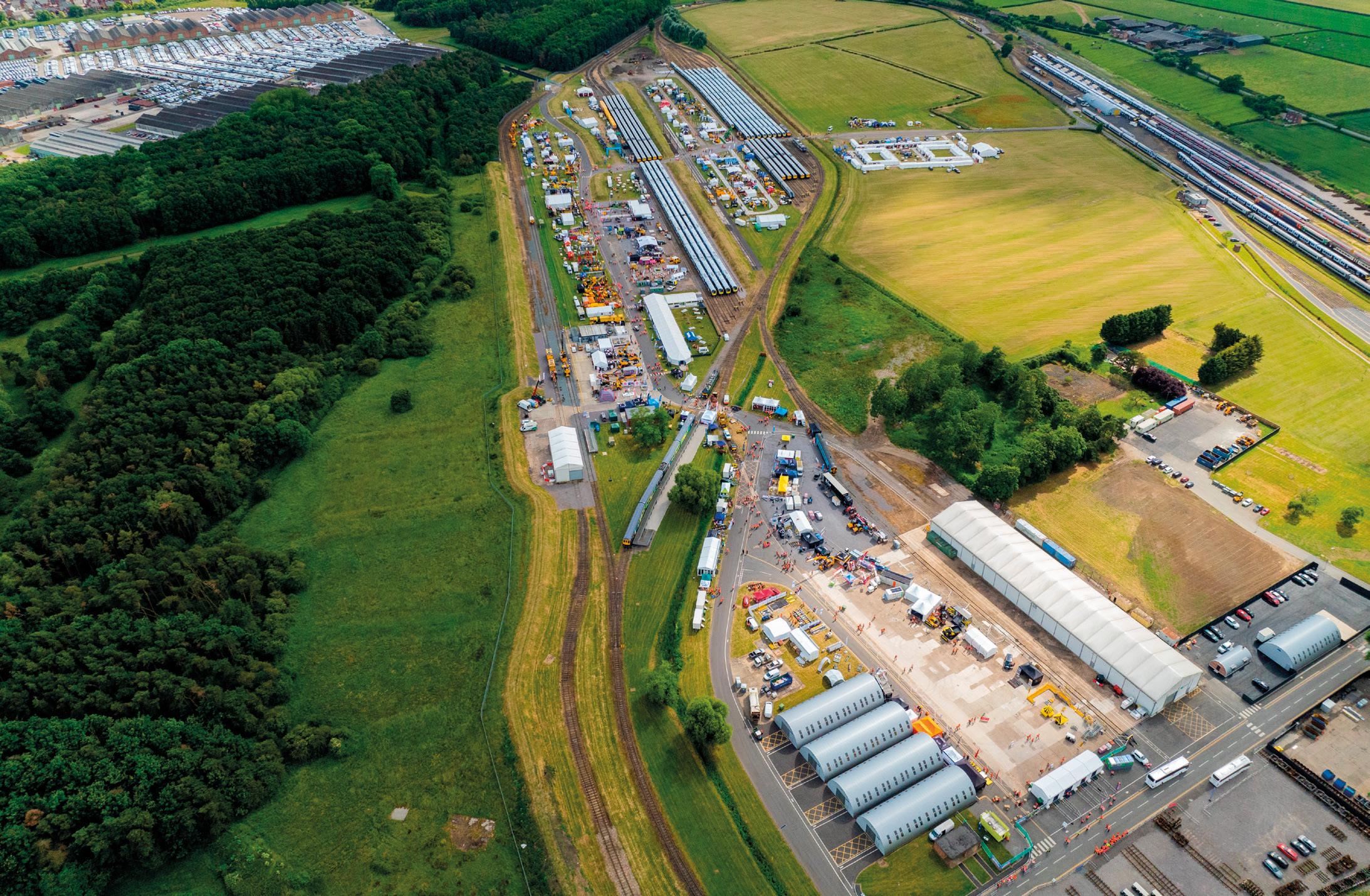
challenges is getting attendees to and from the site in Warwickshire, which in the past has included a free shuttle from Honeybourne.
Katie explained: “Sadly, the temporary platform is not financially viable to continue to erect each year. Many people suggested it should be a permanent platform but I didn’t realise it could only ever be built as a temporary structure each year at Honeybourne as the sidings it was on are used regularly by freight and it can take around six or seven weeks to build something due to working around timetables and keeping workers safe.
“Another challenge was working alongside Stadler to get one of its new Merseyrail Class 777s over to Long Marston in 2021, which only had its route approved to get to the original customer location in Liverpool. We engaged with Network Rail and various other parties to get it approved for route clearance in record time, which involved learning all about gauge clearance and then receiving support from GB Railfreight to haul it over to Long Marston.”
Rail Live continues to grow, having doubled in size since Katie took it over in 2018. Last year’s event was another record-breaking year with nearly 7,000 visitors coming through the doors to see the latest industry products, insightful debate, and of course to engage in the networking.
“I don’t think the show will ever get any easier, as much as I’d like to think it would, but there is always a new challenge thrown to us to graciously deal with,” said Katie. “We’ve had the rules post-COVID to adhere to for a socially distanced event, rail strikes making it tricky to get rolling stock in and out of the show plus the risk of losing attendees who could be
on strike, and more recently the general election meaning we lost two entire theatres worth of speakers a couple of weeks out from the show due to purdah. But we pick back up and move forward every time.”
This year will be particularly special with it being the 200th anniversary since the first passenger railway, with the organisers in talks with Railway 200 about what to do to mark the occasion. There will also be an exciting new floorplan layout to showcase along with a new track infrastructure upgrade that Porterbrook has invested in.
Katie said: “There is an immense sense of pride among the whole rail events team seeing months of hard work come to fruition. In those last few weeks to the show it’s all we live and breathe to ensure we remember as many details as possible and deal with all the last-minute enquiries from exhibitors and visitors. Nothing quite gives you the sense of satisfaction that Rail Live does. It’s just a show of its own kind.
“It is more than just an event, it’s a fully immersive experience being there. You get to experience products in a live environment, not just looking at a brochure or a YouTube video – you can get up close and personal with equipment you wouldn’t normally be able to see.
“We have ROSCOs bringing new rolling stock to showcase at the event. It’s also not often you can meet the likes of Andrew Haines or other senior Government officials face to face or ask them questions. It’s the UK’s largest rail exhibition, the Farnborough of the railways.”
Visit www.raillive.org.uk/ for more details about enquiring about exhibiting or attending.
There is an immense sense of pride among the whole rail events team seeing months of hard work come to fruition
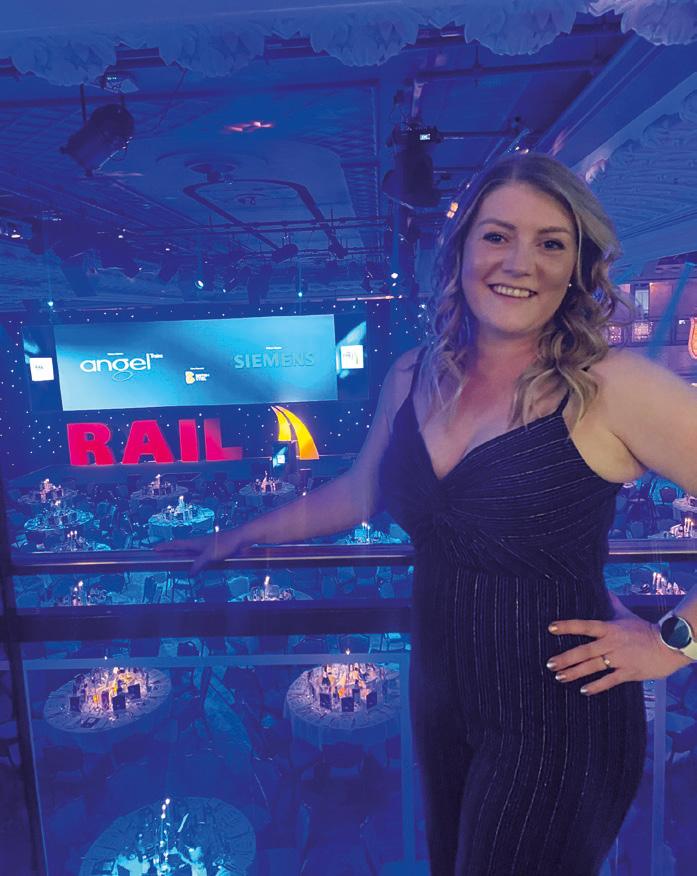
Harry Bateman is the Young Rail Professional (YRP) of the Year for 2025. The Alstom Business Development Graduate was presented with his prestigious award at a glittering ceremony in Cardiff at the end of March. Nigel Wordsworth reports

The YRP Annual Dinner and Awards takes place every year, alternating between London and a regional centre. For the first time since YRP was founded in 2010, the ceremony took place outside of England, at the Mercure Holland House Hotel in the Welsh capital.
A host of YRP members, mentors and sponsors gathered for the black tie event, everyone relishing the opportunity to put their glad rags on and show off.
Gareth Dennis returned as host, welcoming diners in Welsh, as befits a former student at Ysgol Penglais School in Aberystwyth. He explained how the evening would work, thanked the event’s sponsors
and then asked Steve Mole, Managing Director of event sponsor CPC Project Services, to introduce the evening’s guest speaker – fellow Welshman Sir Andrew Haines, Chief Executive Officer of Network Rail.
“Croeso i Caerdydd! (Welcome to Cardiff),” Sir Andrew began, before reverting to English for the rest of his speech. “I am passionate about the railway’s future,” he announced. “Great British Railways is now firmly on the horizon, where the industry can come together to unite track and train.
“But the flourishing of GBR is a huge undertaking – a once in a generation opportunity – but not for my generation. It can’t be left to us to build. It’s almost
as if we could do with a group of diverse, inclusive, young, talented people to help make it happen – if only I knew where to find them!”
After the laughter had died down, Andrew continued: “I have been a long-time supporter of the Young Rail Professionals, based on my own personal experience of the amazing things I see young people achieve, some of the remarkable people I have encountered in my career, and because I recognise the value, in particular, of this type of network in our current age.
“We have a huge transformation to deliver, and your generation will be the architects of tomorrow, whether you wish it or not.”

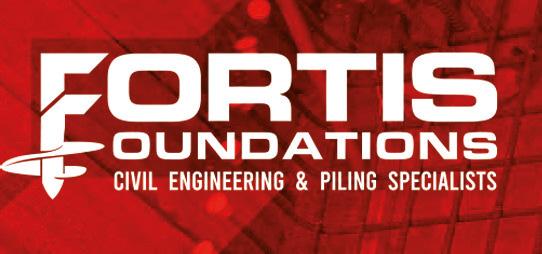
Providing civil engineering products and services, with expertise in foundations and piling to the Rail, Civils, Energy, Residential and Water sectors

With over 20 years of Rail and Construction industry experience, our familyrun company provides expert advice and cost-effective solutions to all sectors looking for experts that they can rely on. Delivering safe and sustainable solutions at the forefront of innovation and technology, ensuring the highest quality results first time, every time. We can assist clients from advisory and design to compliance and delivery, providing tailor-made solutions to meet clients’ needs.
Installation of all Piled foundation - bored, driven & screw piles
Erection and installation of OHL Gantry structures (masts, booms)
RED, LOC and DNO foundations and platform installations (GI, Design & Install)
Platform renewals and refurbishments
Cess walkways and throughing routes
Fencing and Access stairways
Site compound establishment and access road
Trial Holes
Excavation and installation of concrete bases
Embankment stabilisation & Cess retention
De-vegetation
Piling and Soil nails
Rabbit Netting
Gabian Walls











Apprentice of the Year
SponsoredbyAtkinsRéalis
Winner: Joe Dodman, Motion
Highly Commended: Molly Giffard (GWR) and Niamh McKeating (Alstom)
Mentor of the Year
SponsoredbyTelentTechnologyServices
Winner: Alina-Florentina Lixabdru, AtkinsRéalis
Highly Commended: Dr Alex Finlayson and Russell Lipscombe (both TXM Consult)
Employer of the Year Award
SponsoredbyNetworkRail–WalesRoute
Winner: Telent Technology Services
SME Employer of the Year
SponsoredbyTRSManagement
Consultancy
Winner: Infinitive Group
Volunteer of the Year
SponsoredbyKPMG
Winner: Molly Jean Crowther
Chief Financial Officer, YRP
Business Management Apprentice, Amey
Distinguished Service Award
SponsoredbytheDepartmentforTransport
Winner: Barry Calder
Infrastructure, Power Supply & Telecoms
Engineering Director, Alstom
Young Rail Personality of the Year
SponsoredbyRailMedia
Winner: Kelsey Pasfield, Trenitalia c2c
Young Rail Professional of the Year
SponsoredbyCPCProjectServices
Winner: Harry Bateman, Alstom
Highly Commended: Alastair Hutton (TransPennine Express) and Yasha Siddiqui (Alstom)

After a good dinner, with plenty of opportunity for networking and meeting people, it was time for the awards themselves. Eight awards were presented, seven of them picked by a panel of industry judges and the eighth, YRP Personality of the Year, chosen by a poll of diners on the night.
As each shortlist was read out, cheers reverberated around the room and every winner was applauded, presented with their trophy – appropriately made from Welsh slate – and photographed for posterity.
The evening’s guests chose Kelsey Pasfield of Trenitalia c2c as the Personality of the Year for her work in improving train driver morale and wellbeing while at work.
Finally, the award for Young Rail Professional of the Year was presented to Harry Bateman, for his outstanding contribution to the rail industry since he joined Alstom with a Masters degree from the University of Bath in September 2023.
With the awards presentations over, it was time for the music and dancing as everyone reflected on a successful year and on what will come over the next 12 months as rail reform starts to bring changes to the industry.
YRP Chief Executive Bonnie Price was one of those considering the successes of the past 12 months. “This year is the first year we have branched out,” she said. “We have opened a business in the Republic of Ireland, with a committee there. We have a lot of work going on with Dublin Metro between the airport and the city of Dublin, and it has been great to see employers really getting behind their employees and their younger people, who are on those committees in both the Republic and in Northern Ireland, being given the time to do that.”
Bonnie was naturally part of the judging panel for the night’s awards. “Judging the awards, I think, is one of the worst days of the year for my job,” she explained. “We had more than 450 submissions for our awards, and trying to whittle those down when
you have a plethora of exceptional young people is really hard to do.
“Obviously, the Young Rail Professional of the Year is the headline award, so it tends to have the most, but it is a great problem to have in getting an absolute sea of committed, skilled, dedicated young people in the wings, ready to take over in the future.”
The YRP Annual Dinner and Awards will be back in London for 2026, and Bonnie and her committee are hoping for an even bigger and better night on that occasion. Look out for the date to be announced and get your bookings in early!
I have been a long-time supporter of the Young Rail Professionals, based on my own personal experience of the amazing things I see young people achieve



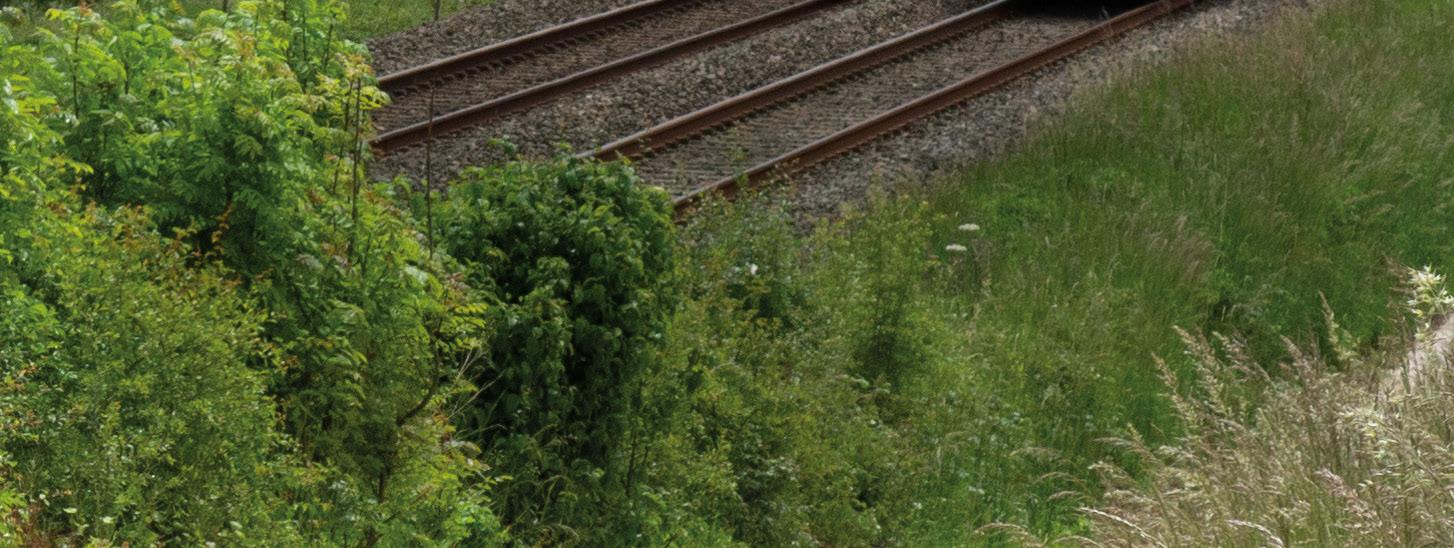




Railway Chaplain Mike Roberts writes about being a genuine ally and how it doesn’t mean giving up maleness, forsaking Britishness or denying his sexual orientation, but in using those qualities to support, advocate and promote the voice and the opportunity of those around him

fit into the majority, in many ways. I am from a family whose history is rooted within the North West of England and North Wales. I ticked the same box in the 2021 census as almost three quarters of the UK population, identifying as White British.
As a man, I am in a majority group – both historically and currently – within the rail industry that, although it is slowly changing, vastly outnumbers the women in rail.
I am married to Rebecca, identifying as heterosexual, again protected from some of the
victimisation that my LGBTQ+ friends and colleagues have received. I have a few medical conditions I struggle with, but I do not describe myself as having a disability.
I’m 44 years old, and probably (hopefully not though) at the beginning of what might be described as middle aged. I am aware in all these areas of the privilege that comes not because of my position, but because of my person.
Through 1,000 awareness days and projects, I am more aware of that privilege than I ever have been. I am extremely conscious of the biases, prejudices
and blind spots that mean I am far more likely to propagate prejudicial or discriminatory behaviour than be a victim of it.
It is easy to write about the scale, reality and lack of progress that we have made in many ways. But the question I’ve wrestled with is “what’s next…”
My favourite TV show for many years was The West Wing with Martin Sheen playing an idealistic American president. At the end of the final episode, as his eight years in office comes to a conclusion he is staring out of the window of Air Force One and his wife asks him what he is thinking
about. He replies, “Tomorrow”.
Even when we’ve seemingly done our bit we’ve got further to go, and for me my question is what I am bringing to my world today to make a difference and a better world for tomorrow. How I do this has to be about more than a LinkedIn post for International Women’s Day, a badge for Black History Month or a photo and a T-shirt with a wrapped train for Pride.
If we want to see a better tomorrow, then being an ally means taking time today to see what that will look like. Alfred Lord Tennyson wrote these words in the 19th century which could sum up the challenge for allyship everywhere today.
He wrote:
“ForIdiptintothefuture, farashumaneyecouldsee, Sawthevisionoftheworld, and all the wonder that would be.”
If our vision for a world of equality and equity isn’t transformational and radical, and doesn’t scare us a bit, is it even a vision worth having?
This week I want to be challenged to create a world more inclusive for a colleague who felt sneered at when they challenged the way that their pronouns were used in a meeting. I want to see the physical railway transformed to stop stealing the dignity of a colleague who is still facing daily the challenge of toilet facilities for the women on worksites. I want a culture where we can celebrate black culture across a company and not just in the major cities. I want a world where inclusion isn’t an aspiration, but an expectation.
But perhaps we’re in a world that’s slipping backwards. In the White House the first weeks of this presidency saw executive orders to end all diversity, equality and inclusion programmes in the US federal government, and in the names of ‘common sense’ and ‘efficiency’ the voices that have fought their ways to be heard again are being silenced.
In the response to this, I’m thinking about how we have silenced (even how I have silenced) some of the marginalised voices across our industry. While posting on social media the pictures of trainbows and pride parades, we have been silent to homophobic abuse that destroys the lives of colleagues, or where managers have demonstrated unacceptable behaviours to those under their leadership, we have kept the voice of the victim quiet to protect the reputation of the establishment.
Before I can support those in the minority, I must first identify my own place in the majority. Like a driver doing a hazard perception test, I must look out for those places of privilege where doors open more quickly, more widely and more welcomingly for me than for others and recognise the cost of that privilege for others for whom the door is more firmly jammed closed.
But then I must commit as I walk through that door to having the hands, feet and voice of an ally – and the responsibility that comes with that. Allyship is not about making sure you don’t discriminate, nor is it about avoiding saying the wrong word. Allyship is about an authenticity of character, that means you’re the inclusive and genuine voice whoever is listening and not just when the faces of the excluded are in front of you. Allyship means accepting that standing
up for those who might be kept out of a room or whose growth might be hampered by a glass ceiling is likely to mean an unpopular stare.
True allyship means not being able to switch support on or off depending on your environment and mood. Allyship is about who we are, far more than it is about what we do. In your working environment, business or place where you engage professionally, has there been an occasion where you’ve had to stand up for someone else whose contribution wasn’t invited, position wasn’t recognised or identity demeaned? Many of us will say yes to this, and some of those times will have come naturally, but at other times we will have kept silent because we were fearful of standing out or conscious of being victimised or marginalised ourselves.
Allyship demonstrated on LinkedIn is very different from allyship in the messroom, just as inclusivity in a leadership seminar is distinct from inclusion on a worksite. Inclusion starts in each one of us. We can’t have a company that is an ‘inclusive us’ unless there is an ‘inclusive me’ which is ready to challenge others who exclude and to be challenged when we (consciously or subconsciously) change others. Inclusion, therefore, starts in psychologically safe companies.
Inclusion won’t make it as far as platforms, messrooms and delivery units unless it is being genuinely demonstrated by senior leaders (note to senior leaders: frontline staff are better at spotting authenticity than lots of people think.) Inclusion must be a personal action, attribute and attitude if it can ever go near becoming a corporate one. I want to close with a conversation I had about someone who was adding a toxic behaviour to a team. “It’s just one person…” the manager explained to me, “but it affects everyone.” I thought for a moment and asked them back, “if you’ve got a hundred people in a swimming pool, how many of those would have to be peeing in it before you want them to stop?”
Culture change, allyship and inclusivity are all easily derailed by the change blockers in our industry who think that they are being asked to give up themselves to include others. For me to be a genuine ally, it doesn’t mean I need to give up my maleness, forsake my Britishness or deny my sexual orientation. Allyship means I use all those qualities to support, advocate and promote the voice and the opportunity of those around me.
As you go back to work and put this magazine down, take a minute to ask, not what programme you’re going to launch, or what accreditation might come next for your business, but ask, “If I am an ally, what will I do today and tomorrow to make the people in my circle more included?” The first question is always what do I do, because only when I do that, can I have the right or the place to challenge others.
Tennyson spoke of a vision of the world, “and all the wonder it could be”. Simon and Garfunkel spoke of a world where the “sound of silence… like a cancer grows.” The difference between a cancerous silence of the world that excludes, and the transformed wonder of a new inclusive world is simply asking first, “what can I do?”
www.x.com/birdsnestsblog www.railwaymission.org
True allyship means not being able to switch support on or off depending on your environment and mood
South Yorkshire’s Mayor, Oliver Coppard, has hailed a key milestone as Supertram has hit 10 million passenger journeys since coming back under public control

The Mayor of South Yorkshire has spoken of his ambition for Supertram to be a world-class public transport network for the region.
His comments come as the operator has marked 10 million passenger journeys since coming back under public control, little over a year ago. In March it also started the dogs on trams trial, since which has seen more than 2,000 four-legged friends travelling on the tram-train network covering Sheffield and Rotherham.
The Mayor said: “To have now hit 10 million passenger journeys on Supertram since bringing it back under our control is a huge achievement. I’m proud of the dedicated Supertram team who work hard day in and day out and put people and passengers at the heart of what they do.
“There are still challenges, I know. But we’re making huge strides in our journey back to a public transport system that puts people first. We’re investing tens of millions of pounds into repairing and renewing the network, the number of people travelling without a ticket is down, revenues are up, and more people are using the tram.
“My ambition is nothing less than a world-class public transport network for South Yorkshire. But we won’t get there just with big strides, it’s also about
Images: South Yorkshire Combined Authority
My ambition is nothing less than a world-class public transport network for South Yorkshire. But we won’t get there just with big strides, it’s also about the small steps
the small steps. And step by step, we’re fixing public transport in South Yorkshire.”
Since coming back under public control, investment has significantly increased to £15.3 million to improve the network, passenger numbers are up,
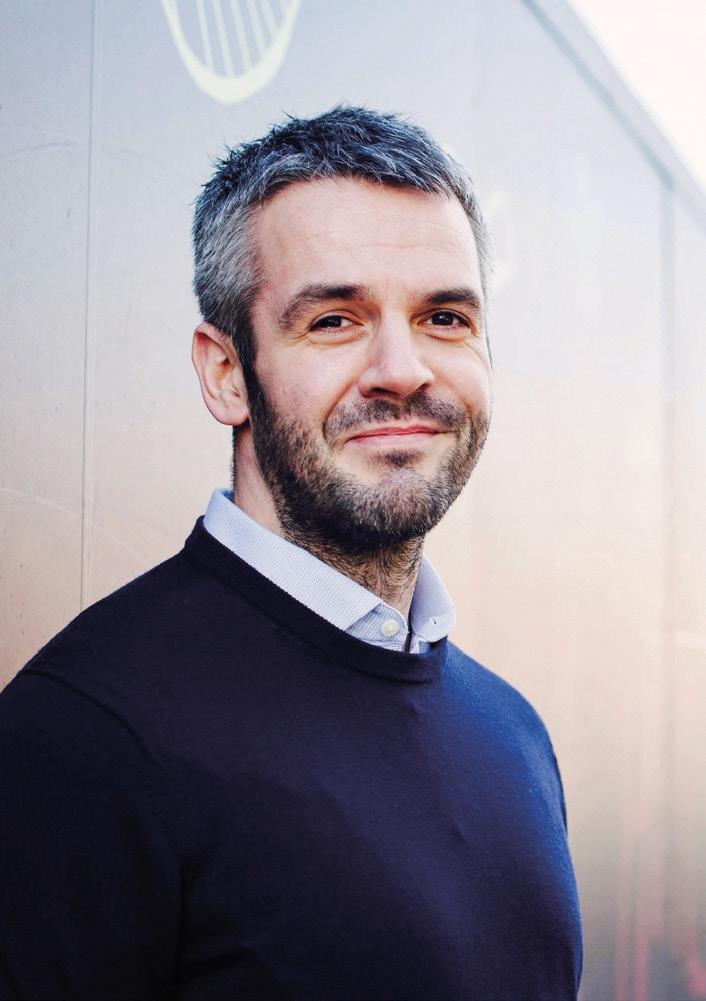
revenue is up, tram reliability was at 97 per cent for 2024/2025 and within the first 100-days a deepcleaning programme was implemented to clean all trams and stops to restore pride in the network and give customers a better experience.
A new tram-train station at Magna is also set to open in Winter 2025 and will serve visitors to the Magna Science Adventure Centre and people living and working in Templeborough, Rotherham. South Yorkshire Mayoral Combined Authority is also looking to buy a new tram fleet by 2032 subject to Government funding.
Sean English, Managing Director at Supertram said: “This milestone is a testament to the hard work and dedication of our entire team since Supertram returned to public control. Reaching 10 million passenger journeys reflects the renewed confidence people have in our network.
“With continued investment, improved services, and growing passenger numbers, we’re proud to support the Mayor’s vision of putting the public at the heart of public transport.”
First introduced to South Yorkshire in 1994, the trams operate on 100 per cent renewable energy sources, there are no roadside carbon emissions, and all trams and tram stops are accessible with level boarding.



Our team is comprised of industry-leading specialists, enthusiastic about keeping the rail industry moving and innovating. hello@3squared.com www.3squared.com 03331 213333

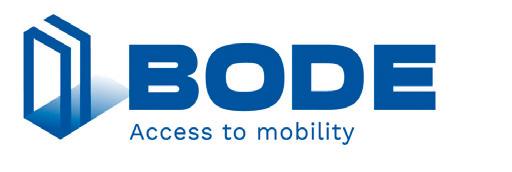
We provide the solutions to the problems for the leading train operators, rolling stock companies and original equipment manufacturers. info@schaltbau-bode.com www.bode-global.com 01908 224140
Capel C.S Ltd is dedicated to delivering 1st class costeffective, efficient, high-end construction solutions to clients within the railway, commercial and public sectors. info@capelcsltd.com www.capelcsltd.com 02085 185354

Connected Places Catapult is a human-centred, solution-led innovation accelerator for transport, cities, and place leadership. steve.quantick@cp.catapult.org.uk www.cp.catapult.org.uk 01908 359999

Craig & Derricott is a component supplier to the transport sector and has earned a reputation for wellengineered and reliable products. sales@craigandderricott.com www.craigandderricott.com 015433 75541

At DGA Group we are a global advisory firm that helps clients protect – and grow – what they have built. london@dgagroup.com www.dgagroup.com

Capita is a leading provider of business process services, driven by data, technology and people. www.capita.com
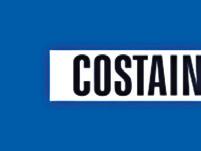
Costain Group PLC is a leading provider of sustainable infrastructure solutions. mediaenquiries@costain.com www.costain.com 01628 842444

Crimson Tide mpro5 platform is more than an app. It has several smart features that enable organisations to streamline and automate operations. sarah.turner@crimsontide.co.uk www.crimsontide.co.uk 01892 621253

We offer a powerful blend of digital and engineering expertise combined with an in-depth knowledge of the rail industry.. info@digirail.com www.digirail.com 02457 73400

An expert design and consultancy firm, DigiSig Rail Group specialises in signalling design, project development, and project delivery. Russell.simpson@digisig.co.uk www.digisigrail.co.uk 03335 774200

Egis Group is a global leader in consulting, construction, operating, and engineering. illy.toiber@egis.fr www.egis-group.com 01252 451651
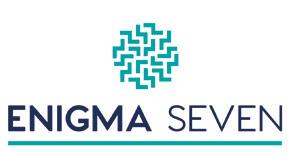
Enigma Seven supply chain services increase sales for suppliers looking to enter or grow their share of the UK Rail Market. sduffy@enigma-seven.co.uk www.enigma-seven.co.uk 07827 82355

Eversholt Rail plays an integral role in the growth and modernisation of the UK rail sector by introducing new products and technologies. enquiries@eversholtrail.co.uk www.eversholtrail.co.uk 02073 805040

Standing shoulder-to-shoulder with you, we are committed to making water, energy, and communities sustainable for generations to come. londonmail@ghd.com www.ghd.com/en-GB 02030 777900

We are Howells Railway Products, a UK-based manufacturer with extensive product and system design and development expertise. info@howells-railway.co.uk www.howells-railway.co.uk 01619 455567

A dynamic independent company, Ebeni Ltd delivers specialist engineering services to suppliers, operators, and regulators of safety and mission-critical systems. matthew.pearson@ebeni.com www.ebeni.com 01249 700505

Enterprise Bot is a leading AI-driven automation provider, specializing in transforming customer interactions within the UK rail industry. sales@enterprisebot.ai www.enterprisebot.ai 07740 58573

ERG International UK Ltd are contractors of landmark world-renowned infrastructure assets providing safer transport, clean energy and sustainable socio-economic benefits to the regions we serve. info@erg-int.co.uk www.erg-int.co.uk 02070 187838

GDS UK is part of Global Display Solutions Group, a worldwide organisation specialising in the design and manufacture of innovative, high – quality digital display solutions. uk@gds.com www.uk.gds.com 01793 498020

Hilti Ltd offers a unique solution for businesses, providing access to the tools and equipment needed for each project, without the burden of storing equipment. www.hilti.co.uk 08008 861000

InoRail offers a range of consulting, surveying, and engineering design services, focusing on cost efficiency, sustainability, and innovation. info@inorail.co.uk www.inorail.co.uk 03332 000073

WorkfloPlus digitises rail operational workflows – streamline maintenance checks, enhance workforce training, and ensure compliance with real-time, trackside-ready solutions for safer, smarter rail operations. hello@intoware.com www.intoware.com 01159 778969

Award-winning rail specialist JPL Diversified Ltd acts as a trusted partner to clients, supporting them at every stage of their railway journey. john@jpldiversified.co.uk www.jpldiversified.co.uk 07935 788604

With a reputation for challenging the market, KeTech delivers connected driver advisory systems and journey information through a managed, cloud-based system. info@ketech.com www.ketech.com 03300 578450

Loughborough University’s Control Systems Research Group. This group focuses on the application of control and systems science. www.lboro.ac.uk 01509 227014

A UK subsidiary of Italy-based Ing. Enea Mattei SpA –global pioneers in rotary vane air-compressor design and manufacture, and related products and services. muk.info@matteigroup.com www.mattei.co.uk 01789 450577

Overhead Line Engineering Ltd (OLE Limited) is a Derbybased railway engineering and electrification design consultancy. Keith.Orgill@OLE-Limited.co.uk 01332 342122

Jobson James Rail is a national specialist railway insurance broker, the market leader in the UK by a huge margin with over 1,000+ rail clients across the UK, Middle East and Australasia. keven.parker@jjrail.co.uk www.jjrail.co.uk 07816 283949

Keltbray is a leading provider of engineering services to the rail industry. Delivered by specialist teams. rail@keltbray.com www.keltbray.com 02076 431000

We Innovate to Solve Global Infrastructure Challenges. L.B. Foster is a specialist, end-to-end supplier to the Global Rail sector. uksales@lbfoster.com www.lbfoster.com/en-gb 01142 562225

MATISA (UK) Ltd supply track maintenance and construction equipment including related services, spare parts, and training. matisa@matisa.co.uk www.matisa.ch 01724 786160

Working across the UK, OCU Services Ltd specialises in energy and utilities design, planning, project management, and installation. enquiries@ocugroup.com www.ocugroup.com 01612 489922

RailCalendar RailSupplierDirectory RBDMedia RBDCommunity
The longest established company manufacturing lubricants in the UK. Our company is innovative, dynamic and pursuing new ways to improve services and products. info@rsclare.co.uk www.rsclare.com 01517 092902

Reznet Rail provides global railway engineering solutions for mainline and metro projects. enquires@reznetrail.com www.reznetrail.com

We help asset owner / managers and engineers identify areas at higher risk of ground or structure movement, monitor known movements, and raise early warning alerts. contact@satsense.com www.satsense.com 01133 061688

Tended combines geospatial technology and behavioural science to transform the safety and efficiency of rail projects. info@tended.co.uk www.tended.co.uk 07330 1331195

At The Virtual Tour Company, we combine the highest quality 360-degree photography with truly world-class technology. info@virtualtourcompany.co.uk www.virtualtourcompany.co.uk 01392 348181

WISKA UK Ltd is the UK’s market leader in the manufacture and supply of junction boxes, cable glands and gel/ gel jointing products. industry@wiska.co.uk www.wiska.co.uk 01208 816062

A full railway engineering service provider specialising in design and construction of slab track solutions, track renewal and maintenance, tunnels, stations, consultancy, planning, and design. enquiries@rsrg.com www.uk.rhomberg-sersa.com 03003 030230

SEI Interconnect Products (Europe) Ltd. is a trusted provider of high-performance electronic and interconnect solutions, serving diverse industries across Europe. idsales@sumi-electric.com www.sumi-electric.eu 01792 487290

A subcontract, precision machining company that manufactures precision made components to the highest standards and are approved to quality standards ISO9001:2015 and AS9100D. info@thomas-brown-engineering.co.uk www.thomas-brown-engineering.co.uk 01484 548903

The UK’s largest hot dip galvanizing organisation, providing a highly-effective corrosion prevention treatment that creates long-lasting protection for any type of steelwork. info@wggltd.co.uk www.wedge-galv.co.uk 01902 601944

Zircon Software combines knowledge and creativity to create bespoke technical software solutions for the UK rail industry. enquiries@zirconsoftware.co.uk www.zirconsoftware.co.uk 01225 764444
To be featured in the Rail Supplier Directory contact Fiona Broomfield on 07949 409 829 or email fiona@railbusinessdaily.com

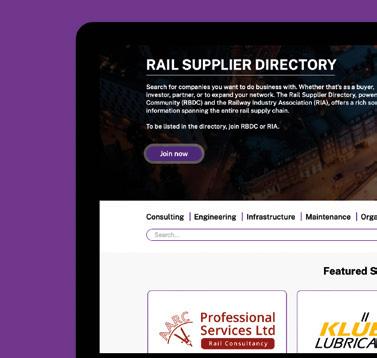









Marie Daly has been appointed Transport for Wales’ (TfW) Chief Operating Offi cer, bringing more than 17 years of experience in the rail industry with a strong track record in operational leadership, customer experience and cultural transformation. She discusses the journey ahead and her work as Chair for Women in Rail


‘One truly integrated
Congratulations on the appointment –what attracted you to the role and how are you settling in?
Thank you. I’m absolutely delighted to take on this role at such a pivotal stage for TfW. I’ve been part of the leadership team since day one, when TfW began operating in 2018, having moved my family from Manchester to South Wales to be part of something truly meaningful. My passion for TfW’s purpose and ambition has only grown, driven by the belief in what a good transport network can do for customers and communities.
The level of transformation we’ve already delivered is astonishing – what once were slides on a PowerPoint deck are now real, tangible improvements across the network. We’re now seeing the true impact of our investment – £1 billion in the South Wales Metro and £800 million in new rolling stock (over half of our fleet is now new).
While we’re currently predominantly a rail organisation, we’re on the cusp of an exciting transformation. The upcoming bus reform in Wales – bringing it under public ownership – is a major step towards our vision of becoming a fully multimodal, integrated transport provider and delivering on our mission of one network, one timetable, one ticket
through one team.
So, this all provides me with a brilliant opportunity to bring in my experience around customer and culture, combined with that operational knowledge, to ensure this investment delivers something truly unique to our existing customers across Wales and Borders, potential new customers and colleagues.
What are your aims and aspirations?
My vision is for TfW is to become synonymous with reliability, integration, and sustainability – a network that truly works for everyone in Wales. The key is service excellence, driven by data, innovation and listening to customers and colleagues alike.
We’ve already made real progress. We’ve introduced 80 out of 148 new trains with more trains being delivered week on week. We’re also seeing performance on the Core Valley Lines improving, with nearly 85 per cent of trains arriving on time, and our station upgrades are having an impact.
But this is just the beginning. Our target is to see 45 per cent of all journeys in Wales made by public transport or active travel by 2040. That means delivering seamless experiences across rail, bus, and active travel. And we’re well on the way with projects like the new Cardiff and Porth Bus Interchanges, the
expansion of our fflecsi bus services, and delivering the South Wales Metro, which is an incredibly complex and innovative programme delivering firsts in both track and train.
Our vision is really to become much more than a transport operator – it’s about understanding and delivering a transport system for the people of Wales that truly connects communities for years to come.
Having such vast experience in the industry, what is the best piece of advice that you’ve received?
One of the most important lessons I’ve learned is that culture and performance are deeply connected. You can’t deliver operational excellence without creating an environment where people feel heard, supported, and valued.
Listening to colleagues and making it easier for them to speak up, particularly those on the frontline, gives you an unfiltered insight into what needs to change. Their voice is essential in helping us continuously improve.
That is one of the reasons I spent my first few weeks out speaking with frontline teams, asking the tough but important question: “What needs to be in



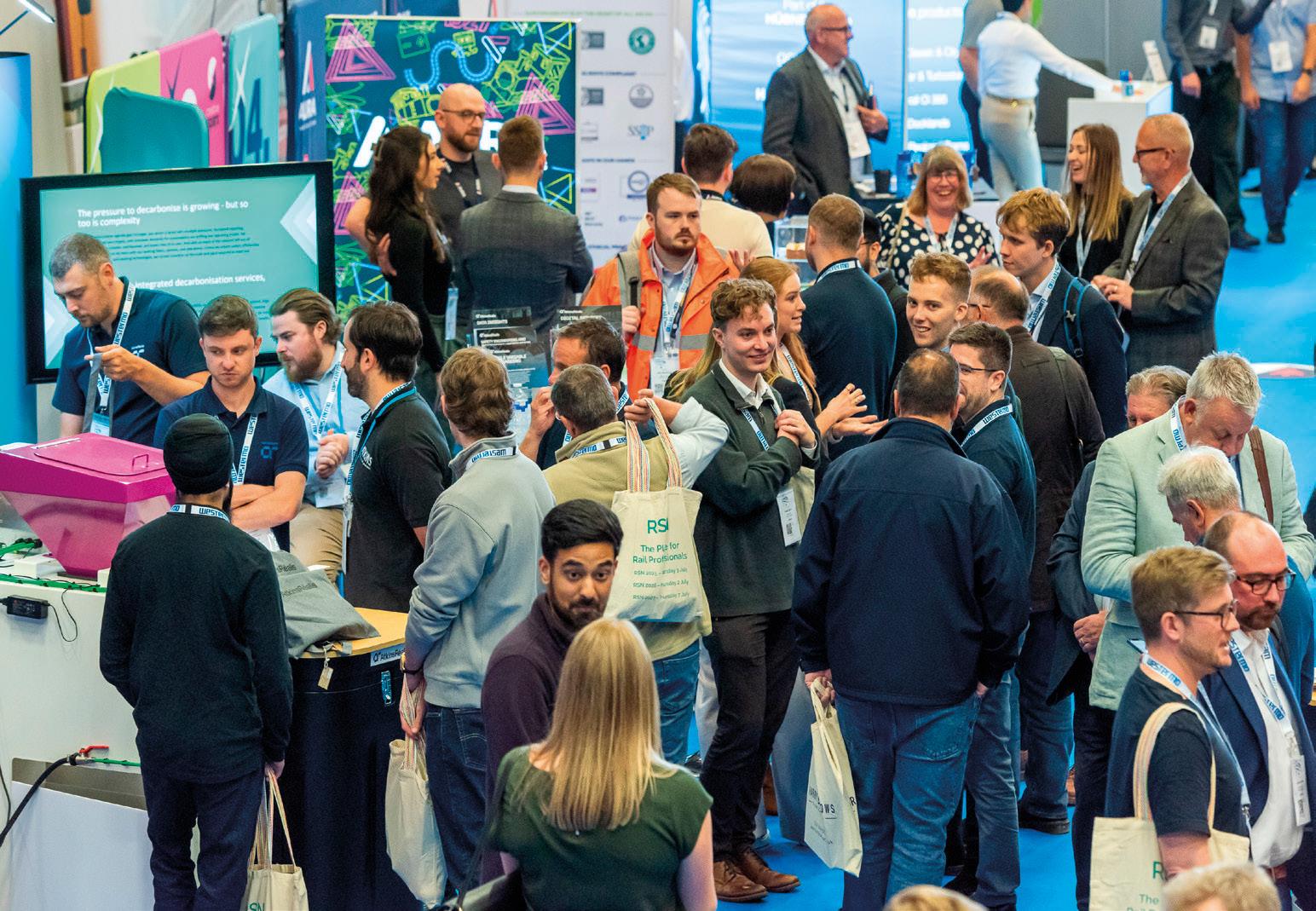



place for us to deliver a railway with 100 per cent performance?” Because when customers buy a ticket, they’re buying a promise. Delivering on the promise of our timetable – through service excellence every day –is something I feel passionately about.
The best advice I’ve received? Don’t underestimate the power of your own story. I’ve brought my full self into my leadership role, including my struggles with dyslexia and not feeling ‘clever enough’, and I’ve seen how being open and authentic encourages others to do the same. I was also once told (by a fantastic mentor) that IQ and EQ are very different things and I should focus on my strengths and not undervalue my own abilities compared to others.
How excited are you for the future?
Incredibly excited. We’re not just upgrading transport infrastructure – we’re transforming how people move across Wales.
Customers don’t think in modes, they think in journeys. That’s why bringing together rail, bus, metro and active travel into one transport system is so powerful. One of the key enablers to this we’re working on is a digital solution to allow customers to travel across the network with one ticket. This is alongside rolling out our pay as you go offering to customers which is our fastest growing retail channel.
Ultimately, what excites me most is seeing my team and the organisation grow and learn as we deliver

The overnight train service Caledonian Sleeper has announced the appointment of its new interim managing director (MD).
Graham Kelly, the company’s current Commercial and Procurement Director, took over the role last month. He succeeded Kathryn Darbandi, who announced her intention to pursue semi-retirement earlier this year after more than four years in the MD position. Having joined the Caledonian Sleeper team in January 2015, Graham has a strong background in guest function experience and the delivery of on-board services.
He said: “Having been a member of the Caledonian Sleeper team for more than a decade, it is an honour to be stepping into the role of interim MD.”
one truly integrated transport system for Wales and Borders.
Alongside the full-time job, you’re also Chair of Women in Rail. How important is it for you to be part of this organisation and how does your lived experience shape your approach to EDI at TfW?
It’s incredibly important. I’ve been Chair of Women in Rail for almost 18 months now, and it remains one of the most meaningful roles I’ve taken on. For me, it’s about creating a space where others feel they belong because that’s what helped me thrive.
My journey into leadership wasn’t conventional: I’ve navigated the industry as a single parent, with real-life challenges, and I’ve seen first-hand the barriers that still exist for women and under-represented groups.
I’ve been really fortunate in my career that when I needed the organisation I worked for to step up, I had good managers to support me. But I feel strongly that organisations like Women in Rail need to advocate for those women who perhaps aren’t as lucky, for example on topics such as women’s health.
That’s why I’m proud of the bold direction we’re taking with Women in Rail. We’ve just launched our new 2025-2027 business plan, which centres on four key pillars – attract, engage, support and promote. Each of these pillars is underpinned by specific actions designed to drive tangible change

VTG Rail UK has appointed Marc Hurn as its MD. Marc has been promoted into the role from his previous position as the Sales and Marketing Director of the company, which he had held since 2023.
He takes over from Colin Denman, who has been promoted to the position of Chief Customer Service Officer based from VTG’s headquarters in Hamburg, Germany.
Marc said: “I’m honoured to become MD of VTG Rail UK. This is a great company with a fantastic team and I’m proud to be leading from the front.
“As the UK’s largest wagon lessor, we have an established pedigree in providing high-quality service for our customers. I am committed to driving VTG Rail UK forward with continued growth and harnessing ground-breaking innovations that benefit the entire rail freight industry.”
within the rail industry.
We’re not where we want to be yet but we’re moving in the right direction. In line with our mission to “be unapologetic in our pursuit of gender equity in the rail industry” our focus is on making sure women not only enter the industry but thrive at every level.
I also believe it’s about getting comfortable being uncomfortable and with female representation in the rail industry at 17 per cent, it’s about challenging ourselves to have those difficult conversations we may have been avoiding.
Don’t get me wrong, I feel the pressure in my position as Chair of Women in Rail to make sure I walk the talk in my leadership role at TfW. We’re doing a lot in this space I’m really proud of, from early career talent – across our entire intake of grads, apprentices and interns in the past 12 months, 55 per cent are women grads, 52 per cent women apprentices and 80 per cent women interns – to launching a Women in Leadership programme in 2025, to help women advance throughout the business and our career returners programme.
One of the most powerful stories that has come out of our EDI work was when we held an all-male menopause awareness session that resulted in one colleague becoming an ally to female co-workers and reconnecting with his wife because he began to better understand her symptoms and what she was going through.

Chris Fowler has taken on the role as MD for GTS, the future operator of the Elizabeth line. GTS is a joint venture between Go Ahead, Tokyo Metro and Sumitomo Corporation and will be responsible for operating the Elizabeth line from 25 May 2025.
Chris joined GTS from Govia Thameslink Railway (GTR) where he was Network Operations Director and is responsible for performance on one of the UK’s largest and most complex rail operations.
He said: “As a proud Londoner, I’m excited for GTS to build on this success. By working with colleagues across the network, we will unlock the line’s full potential as a world-class railway, be a fantastic place to work, and represent London’s position as a global leader in transport.”




UNLOCK THE POWER OF SPECIFICALLY TRAINED, FULLY MAN AGED AND COMPETENT PROJECT TEAMS, SEAMLESSLY INTRODUCED TO YOUR PROJEC T WITH JUST AN INDUCTION REQUIRED.
PROJET MANAGERS - PROJECT ENGINEERS - TEAM LEADERS - SENIOR TECHNICIANSTECHNICIANS - SEMI-SKILLED TECHNICIANS - SUPPORT ST AFF - HSQE SPECIALISTS
The winners of the RISE Awards will be announced at the RIA Dinner and RISE Awards next month in London
RIA has revealed the shortlist for this year’s Railway Industry Supplier Excellence (RISE) Awards. The awards celebrate excellence and achievements in the UK rail supply community across 13 categories, with the winners announced at the prestigious RIA Dinner & RISE Awards on 26 June, at The Landmark, London.
RIA Marketing and Events Director Grace Smithen said: “Congratulations to all of the suppliers and individuals shortlisted for the RIA RISE Awards 2025! We’d like to thank the judging panel of industry experts for reviewing the nominations, as well as those who took the time to submit entries showcasing their achievements.
“The awards showcase the very best our industry has to offer, and we look forward to celebrating with those shortlisted and the winners at the RIA Dinner & RISE Awards on 26 June, at The Landmark, London. The evening dinner provides unrivalled networking opportunities with live entertainment.
“The dinner is open to all in the rail industry, so we recommend securing a table now to avoid disappointment.”
More than 350 people attended last year’s event, with guests enjoying live entertainment including LED Acrobats and a charity raffle in support of the Railway Benefit Fund. The evening was hosted by broadcaster and former Shadow Labour Minister Gloria De Piero, and featured keynote speeches from Steve White, Managing Director of Southeastern, and RIA’s outgoing and incoming Chairs, David Tonkin and Noel Travers respectively.
Among the winners included Alex Hynes, Director General Rail Services, Department for Transport, who was named ‘Client of the Year’. The RIA board chose Alex for his work as Scotland’s Railway Managing Director, being an excellent ambassador for rail and for advancing the way the industry tackles complex issues, all during a period where there has been considerable political change to navigate.
Reacting to winning the award, Alex said: “I am humbled to receive this award and would like to thank the RIA board for nominating me.
“This award is not for me but for Team Scotland and colleagues across ScotRail, Network Rail, Transport Scotland and the supply chain, who work so hard to deliver a better railway for Scotland. I look forward to helping bring the best of this approach to the rest of the UK.”
If you’d like more details about the awards, visit https://shorturl.at/v75Ii
Application of Digital Technology Award
Amey.
Asset Insights, Network Rail Wales & Western Region. CML.
Cognizant.
Enterprise Bot.
Smart Component Technologies Ltd.
Sqills Products B.V. Tracsis.
Transmission Dynamics. Transportise Limited.
Client of the Year Award
Ellie Burrows, Regional Managing Director, Network Rail.
Neil Grabham, Managing Director, Merseyside Rail.
Nick Millington MBE, Route Director Wales & Western, Network Rail.
Rob McIntosh, Route Managing Director, Network Rail.
Equality, Diversity & Inclusion (EDI) Award
AtkinsRéalis.
Croftstone Management Ltd. Hitachi Rail.
Kier.
L.B. Foster. Network Rail.
Nextec Engineering Ltd. Worldline.
Employee of the Year Award
Bel French, Gleeds. Giuseppe Russo, WSP. Sarah Piscitelli, WSP. Steve Denniss, WSP.
Employer of the Year Award c2c.
Cleshar. Gleeds.
Project Leaders Ltd. QTS Group.
Environmental, Social & Governance (ESG) Award AtkinsRéalis. c2c.
Dura Composites. Hull Trains.
Innovation Award Co-You Ltd.
Light Rail UK. Network Rail’s South Rail System Alliance in conjunction with Lankhorst Engineered Products. Resonate.
RSSB – PRIMA. Network Rail and Rail Delivery Group. Transmission Dynamics. The Orange Train Wash. Waymap Ltd. WSP.
Partnership Award
AECOM (Led by Northumberland County Council, key partners include Network Rail, Department for Transport, Northern, SLC, Morgan Sindall, CRSA, Siemens Mobility and AMCO Giffen).
Arup and Department for Transport (Partnered with Network Rail, Northern Railway and TransPennine Express).
Cordel Ltd. (Partnership with Loram UK Ltd, The South East Alliance, Southeastern and Network Rail (Kent Route)).
Diamond Rail Services (Partnered with Hitachi).
Epion Consulting (Partnered with Cognizant and UKG).
Geobear (Partnered with Ayesa, Murphy, Network Rail).
Infinitive Group. Lumo.
Managed Services
Framework (Partnered with AECOM, Network Rail, Capgemini).
One Big Circle (Partnered with KONUX and Network Rail).
Rising Star Award
Cameron Deuchars, CML.
Keeley Mounsey, QTS Group.
Milda Gircyte, CrossTech. Oscar Khan, Network Rail. Paris Ludlow, c2c. Riana Hattrell, Kier.
Safety Award Cleshar.
Network Rail.
Network Rail – Milton Keynes.
Sisk Rail.
SME Exporter in Rail Award CPCS.
Dura Composites.
LPA Lighting Systems.
SME Growth in Rail Award
Atmo Technology.
Crayside Consulting Group. Pole Star Group.
Railway Project Services (RPS).
Wellbeing Award
Balfour Beatty Rail Ltd.
Chartered Institution of Railway Operators (CIRO). Gleeds.
RSSB.
QTS Group.

Unlock your team’s potential with our dynamic training courses, designed to elevate rail employees’ skills and drive impactful business success!
Upcoming training courses:
Frontline Leaders
31 Aug – 01 Sept 2025
Upskill operational frontline leaders to positively impact staff competence, performance, and engagement.
Who should attend?
Driver managers, local operations managers, section supervisors, team leaders of track workers, guards, and conductor managers.
Fatigue Risk Management Training
3 – 4 July 2025
Gain practical skills and insights for developing a robust fatigue risk management approach.
Who should attend?
Fatigue and safety managers within rail companies.
Book now at www.rssb.co.uk/training
Operational Decision-Making Training 11 September 2025
Enhance decision-making skills, especially in stressful situations or when making safety-critical decisions. Who should attend?
Signallers, shift signaller managers, local operations managers, operations managers, senior network delivery managers, route control managers, incident controllers, train running controllers, and electrical control operators.
Carbon Literacy for rail 24 July 2025
Understand and reduce carbon dioxide emissions in rail activities. Certified by the Carbon Literacy Project.
Who should attend?
All employees in UK rail organisations.









PWI TECHNICAL
2 JULY 2025
HILTON, CARDIFF
Step into the future of rail at this dynamic Seminar, where electrification takes centre stage as the key to a net-zero transport system. Discover how 21st century electric traction requires a whole systems approach to power supply, operations, signalling, train control and rolling stock illustrated through the cutting-edge Core Valley Lines project.
With rail already being one of the largest electricity consumers in the UK, further electrification and the need to charge battery trains, along with a modal shift from road to rail, will increase that demand. The plan for the railway must be an integral part of the planned Great Grid Upgrade.
Get inspired by innovative approaches to designing electrification for faster installation, easier maintenance, and maximum efficiency. Explore the game-changing potential of AI to revolutionise electrification programmes and gain exclusive insights into international electrification successes. Hear about how sustainability is being woven into the very fabric of electrification planning on HS2, setting bold new standards for future rail projects.
Whether you’re an engineer or project manager involved in electrification, a railway operator or have an interest in sustainability, this event will spark fresh ideas and actionable strategies to facilitate electrifying the railway for a greener, cleaner tomorrow.
Ready to be part of the conversation? Book now!
£97 MEMBER
£177 NON-MEMBER
£20 STUDENTS
